Vous pouvez lire le billet sur le blog La Minute pour plus d'informations sur les RSS !
Canaux
3011 éléments (69 non lus) dans 55 canaux
 Dans la presse
(10 non lus)
Dans la presse
(10 non lus)
 Du côté des éditeurs
(3 non lus)
Du côté des éditeurs
(3 non lus)
 Toile géomatique francophone
(56 non lus)
Toile géomatique francophone
(56 non lus)
 Géomatique anglophone
Géomatique anglophone
-
sur GeoTools Team: GeoTools 31-RC Release Candidate
Publié: 4 March 2024, 1:00pm CET
The GeoTools team is pleased share a release candidate GeoTools 31-RC: geotools-31-RC-bin.zip geotools-31-RC-doc.zip geotools-31-RC-userguide.zip geotools-31-RC-project.zip This release candidate is also available from the OSGeo Maven Repository and is made in conjunction with GeoServer 2.25-RC. The release was made by Jody Garnett (GeoCat).Testing -
sur Stefano Costa: ènostra e la transizione energetica dal basso a Savona
Publié: 4 March 2024, 10:47am CET
Venerdì 1 marzo ero a Savona per parlare di transizione energetica dal basso alla Società di Mutuo Soccorso Fornaci, insieme al gruppo territoriale di ènostra. Ci avevano invitati il comitato No rigassificatore e il comitato Fermiamo il mostro per una serata insieme a due associazioni genovesi con cui collaboriamo spesso, Cittadini sostenibili e CER Sole.
Savona e Vado Ligure non assistono passivamente alle scelte assurde dei politici regionali e locali di accogliere un rigassificatore che inquina il mare, deturpa il territorio con tutto il gasdotto necessario a terra, contribuisce a inquinare l’aria rimanendo ancorati alle fonti fossili e arricchendo le grandi multinazionali. C’è stato un risveglio che ha portato a una lunga catena umana lungo la costa, tante mobilitazioni e molti resistono all’idea di avere dei benefici “compensativi”.
La serata è stata lunga e la partecipazione grande, nonostante la pioggia. Si è parlato dei danni che derivano dalle fonti fossili per il clima e per la salute, delle false notizie sulle rinnovabili, delle comunità energetiche. E io ho presentato le attività di ènostra. Ero piuttosto stanco ma con l’aiuto degli altri soci del gruppo territoriale ho spiegato cosa fa la cooperativa, che principi la guidano e l’importanza della partecipazione alle scelte energetiche al di là del cambio di fornitura. Non tutta l’energia rinnovabile è uguale e quella fatta dal basso, attenta agli impatti sociali e ambientali è quella che preferiamo.
L’accoglienza del comitato è stata molto generosa e sono contento che sia nato questo legame.
Cos’è una cooperativa energetica e cosa fa in concreto (video Youtube)
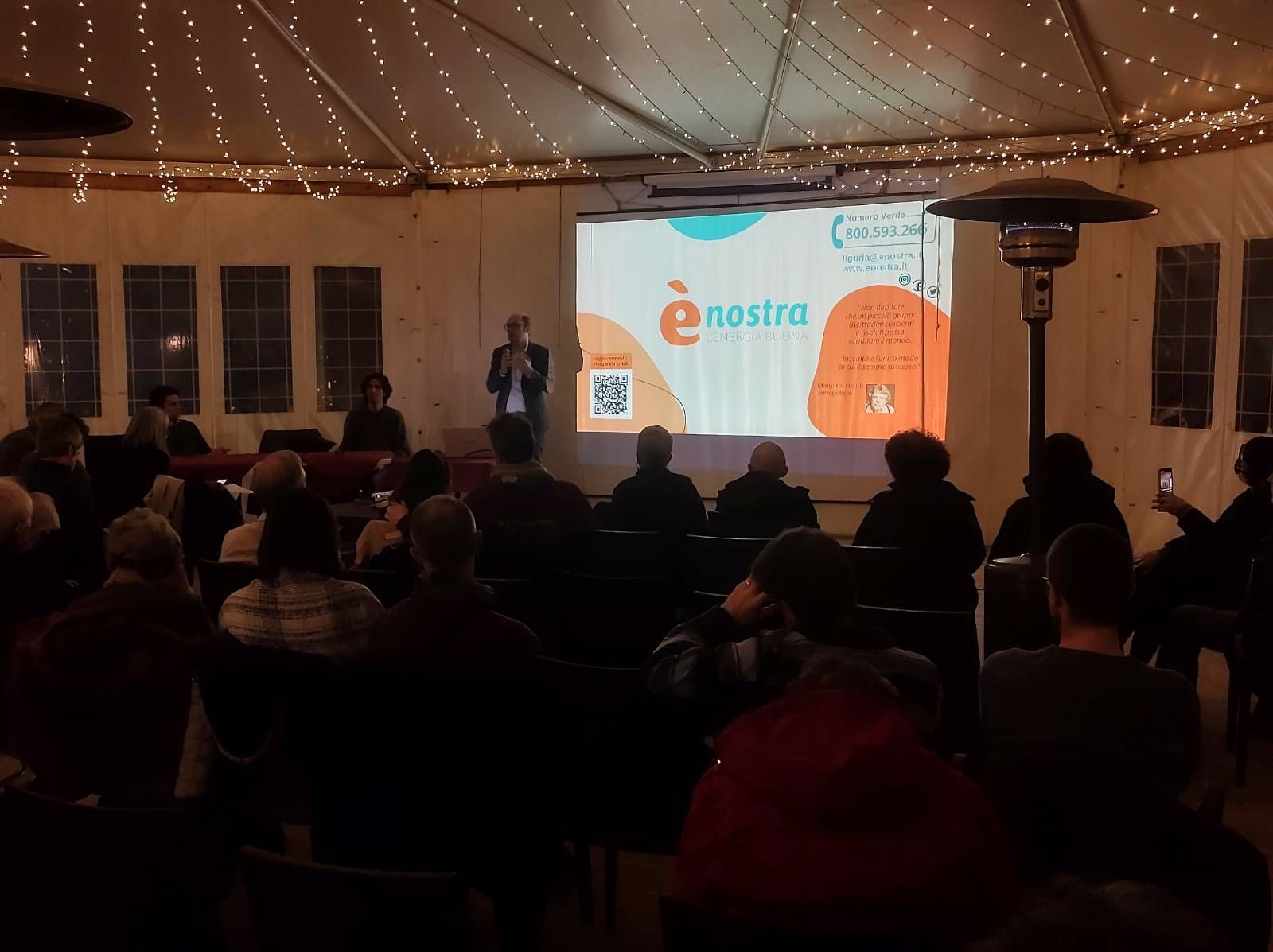

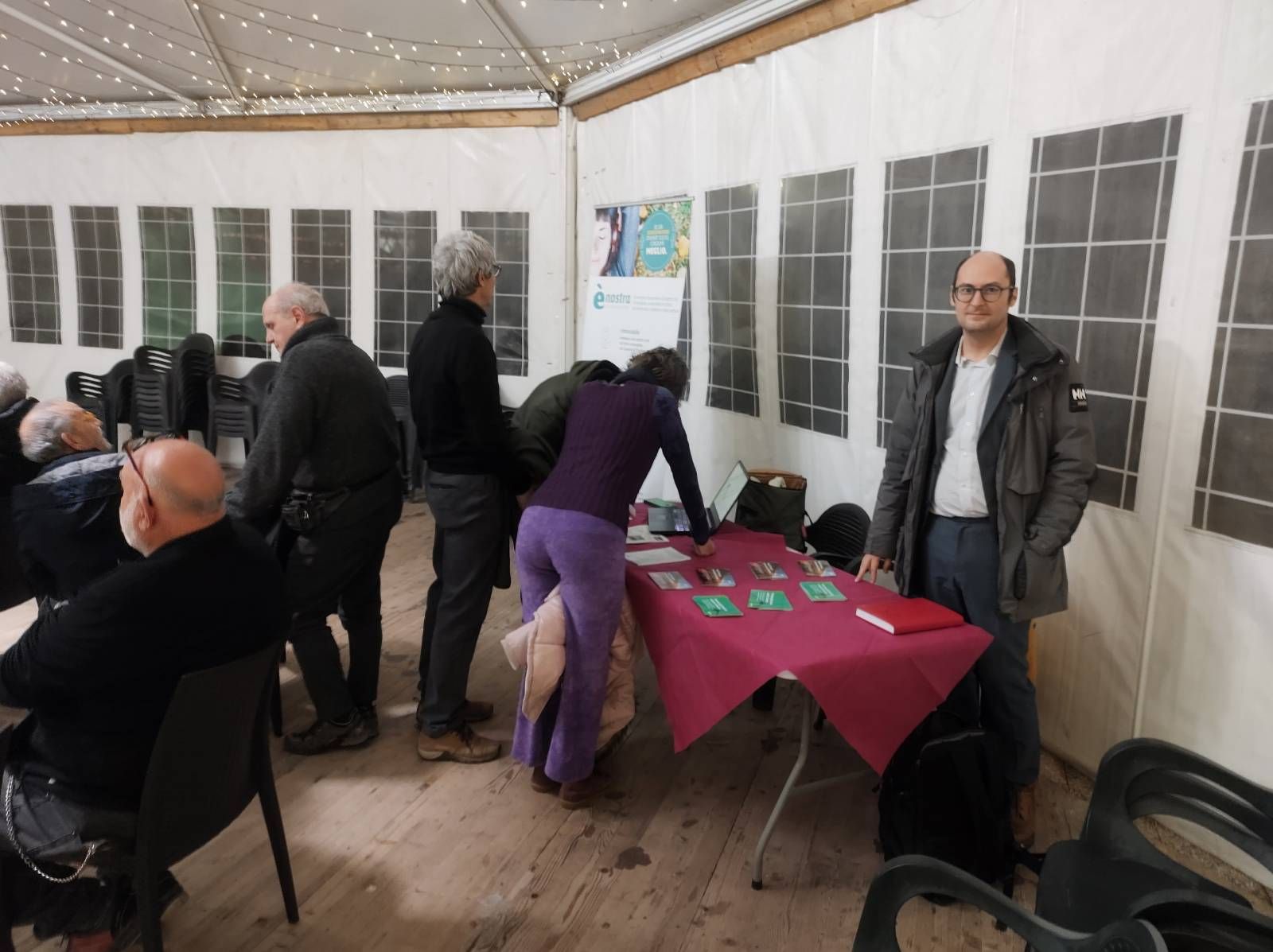
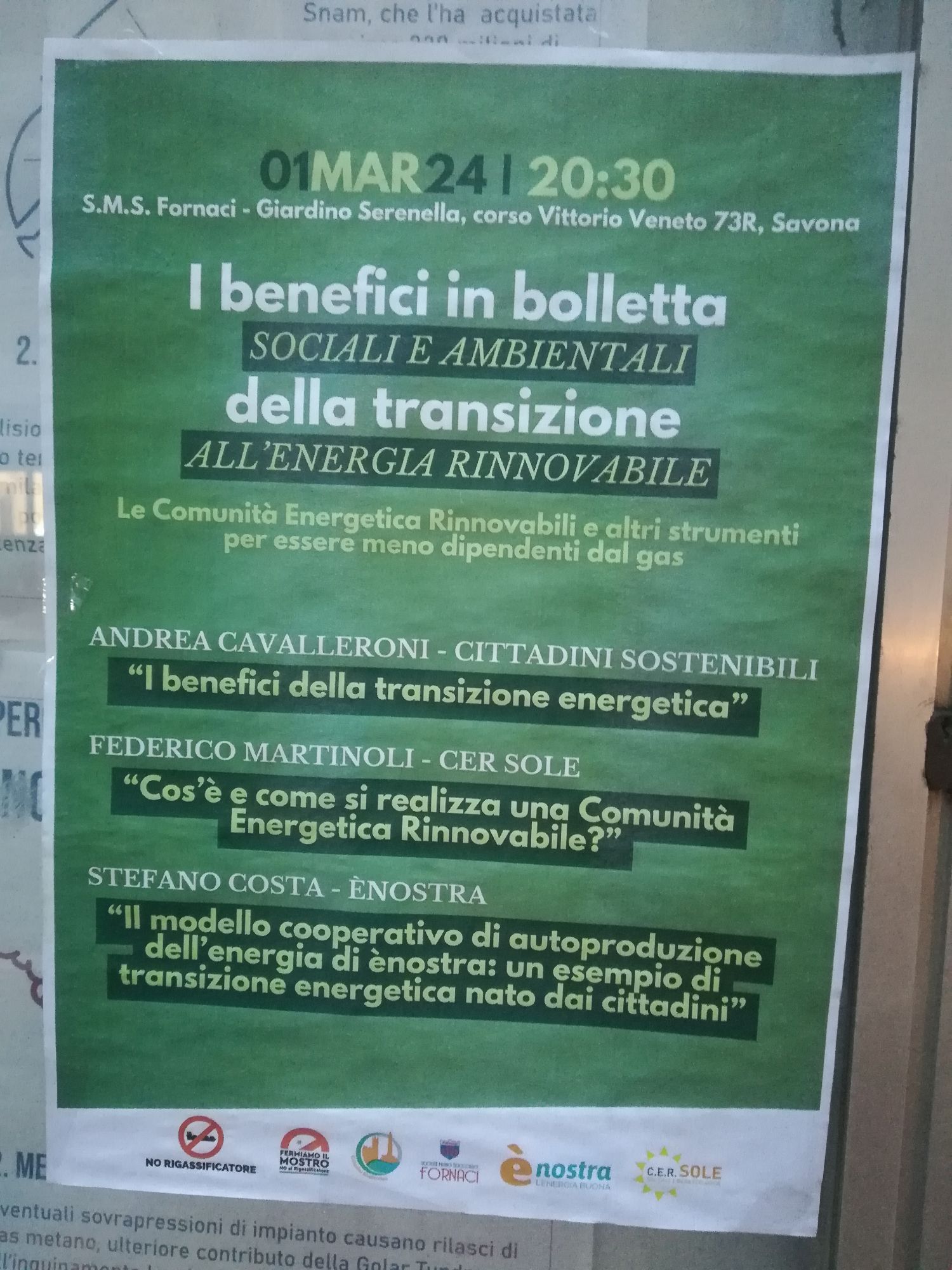
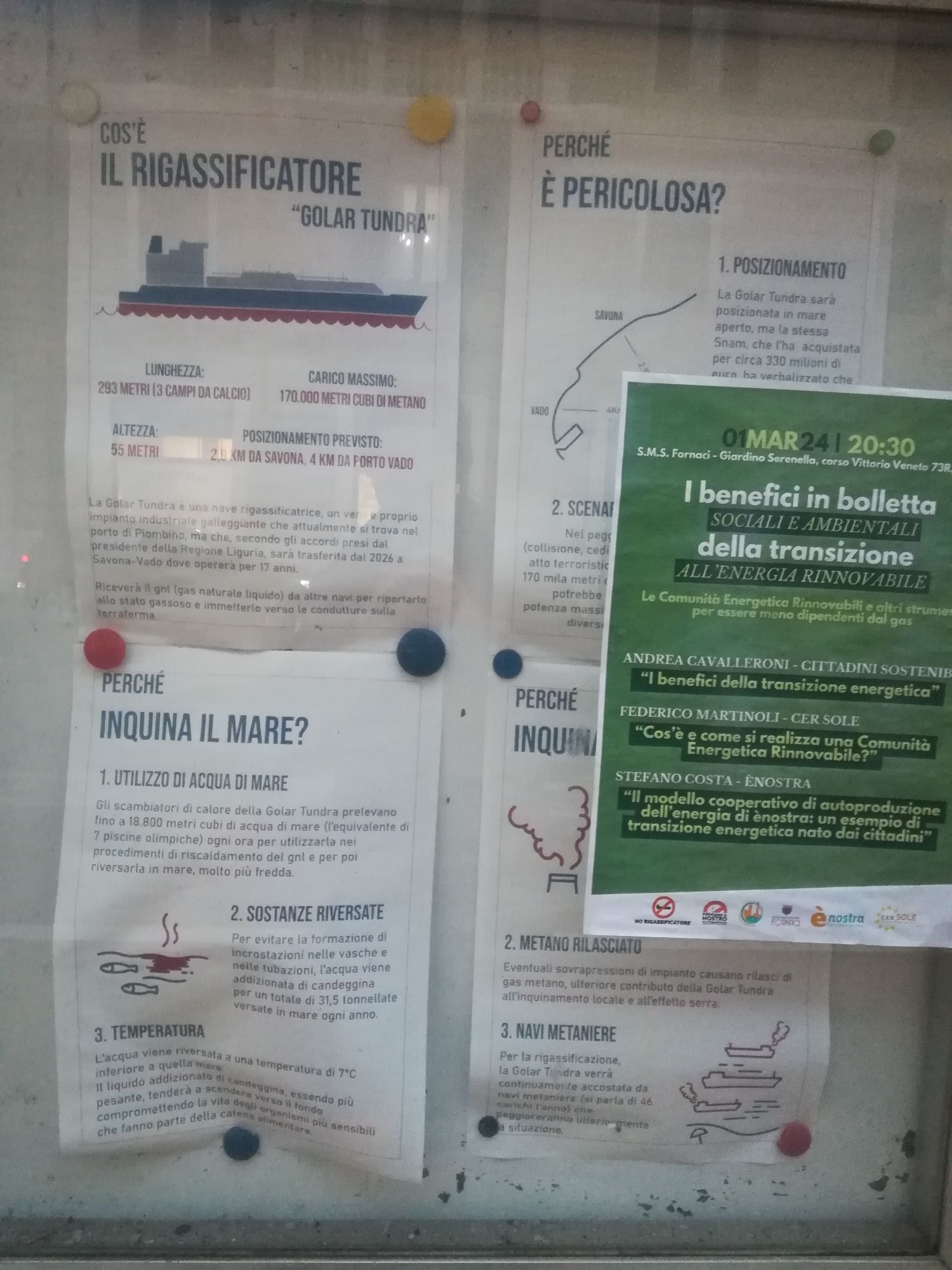
-
sur Can you Draw Europe?
Publié: 4 March 2024, 9:55am CET par Keir Clarke
Huge Quiz's Europe Country Drawing Challenge has quickly become my new favorite online game. This is despite the fact that I am absolutely terrible at it and have yet to achieve anything other than a totally embarrassing score.The premise of the Europe Country Drawing Challenge is very easy. All you have to do is draw European countries on top of a satellite map of Europe. For each country you
-
sur GeoServer Team: GeoServer 2.25-RC Release
Publié: 4 March 2024, 1:00am CET
GeoServer 2.25-RC release is now available with downloads (bin, war, windows), along with docs and extensions.
This is a release candidate intended for public review and feedback. GeoServer 2.25-RC is made in conjunction with GeoTools 31-RC, and GeoWebCache 1.25-RC.
Thanks to Jody Garnett (GeoCat) for making this release.
Why share a release candidate?A sensible question to ask is why a “release candidate” is being produced at all - when we do not recommend running such a thing in production.
GeoServer also follows a “release early, release often” approach which is where the project shares releases so you can test and provide feedback.
This results in a lovely balance:
-
The GeoServer developer has already tested on the data and data sources they got handy.
-
The users of GeoServer have access to a much greater variety in data and and use cases to test with.
Please try out this release candidate and let us know how it works for you.
-
Bonus: By testing with your data directory you are assured that the next GeoServer will work well for you and your team.
This balance of a community sharing and each doing what they can they can do easily, is a nice thing about the open-source approach: the result is software we can trust and works well.
Thank you for being part of the GeoServer community. Testing and feedback is welcome by email and bug reports.
Upgrade NotesWe have a number of configuration changes when updating an existing system:
-
The longstanding
ENTITY_RESOLUTION_ALLOWLISTsetting has been recommended as a way to control the locations available for external entity resolution when parsing XML documents and requests.The default has changed from
*(allowing any location) to allowing the recommendedwww.w3.org,schemas.opengis.net,www.opengis.netlocations used for OGC Web Services, along with theinspire.ec.europa.eu/schemaslocation used by our friends in Europe. -
The FreeMarker Template HTML Auto-escaping is now enabled by default.
-
The spring security firewall is now enabled by default.
-
A new configuration setting is available to limit content served from the
geoserver/wwwfolder.If you have not met the
wwwfolder before it is used to share content, and there is a tutorial serving static files. -
We do add recommendations to production considerations over time, if you have not checked that page in a while please review.
Thanks to Steve Ikeoka and Jody Garnett for these improvements.
Security ConsiderationsThis a reminder to update to GeoServer 2.24.2 Release (or GeoServer 2.35.5 Release).
Alongside the upcoming GeoServer 2.25.0 release we will “publicly disclose” a list of Common Vulnerabilities and Exposures that have been addressed previously.
- If you are working with a commercial support provider that volunteers with the geoserver-security email list they are already informed.
- If you have updated to GeoServer 2.24.2 Release (or GeoServer 2.23.5 Release) you are already patched.
I hope you enjoy our team’s effort to improve communication. The use of the CVE system allows us to reach a wider audience than reads these blog posts.
See the project security policy for more information on how security vulnerabilities are managed.
Experimental Java 21 supportGeoServer, along with GeoTools and GeoWebCache, are now tested to build and pass tests with Java 21.
This is not yet an endorsement to run GeoServer in production with Java 21. We are looking ahead at the 2024 roadmap, and are making sure the basics are covered for the newer Java releases.
JTS fast polygon intersection enabled by defaultThe JTS Next Generation polygon intersection algorithm has been enabled by default, which will improve performance of a number of operations, including WPS processes and the vector tiles generation. We deem the functionality well tested enough that it should be opened to the majority of users, even if it’s still possible to turn it off by adding the
-Djts.overlay=old.
MapML Extension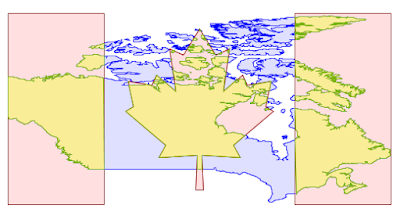
The MapML extension is receiving a number of updates and improvements, with more to come in the following months. It’s now possible to declare “Tiled CRS” as the CRS for a layer, with the implication not just of the CRS, but also of the gridset that will be used by the MapML viewer:

This portion builds on top of the work done months ago to support astronomical CRSs, which allows GeoServer to support multiple CRS authorities.
The MapML preview links are now using the new MapML output format, while the old dedicated REST controller has been removed. This allows for better integration of the MapML format in the GeoServer ecosystem. The MapML viewer has also been updated to the latest version:

Thanks to Joseph Miller and Andrea Aime (GeoSolutions) for this work, and Natural Resources Canada for sponsoring it.
Community Module UpdatesMuch of the new activity in GeoServer starts as a community module. We’d like to remind you that these modules are not yet supported, and invite you to join the effort by participating in their development, as well as testing them and providing feedback.
Raster attribute Table community moduleDeveloped as part of GEOS-11175, the Raster Attribute Table community module uses the GDAL Raster Attribute Table (RAT) to provide a way to associate attribute information for individual pixel values within the raster, to create styles as well as to provide a richer GetFeatureInfo output.

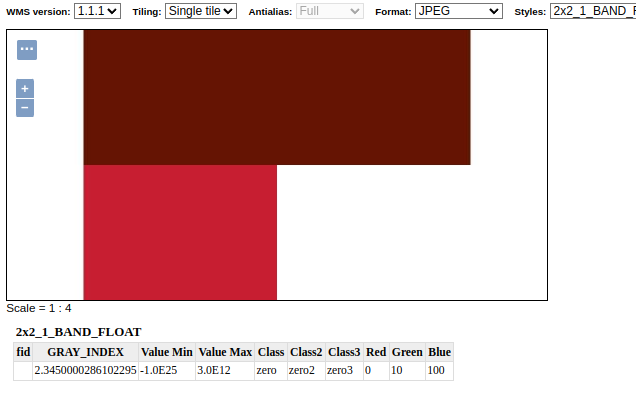
For more information see the user guide.
We’d like to thank Andrea Aime (GeoSolutions) for the development and NOAA for sponsoring.
Graticules for WMS mapsThe graticules community module, developed as part of GEOS-11216, provides a datastore generating graticules for WMS maps, along with a rendering transformation that can be used to label them. The module can be used to draw a graticule in WMS maps, as well as to download them as part of WFS (or in combination with the WPS download module).
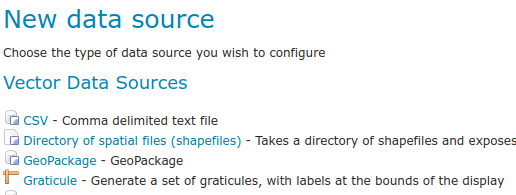
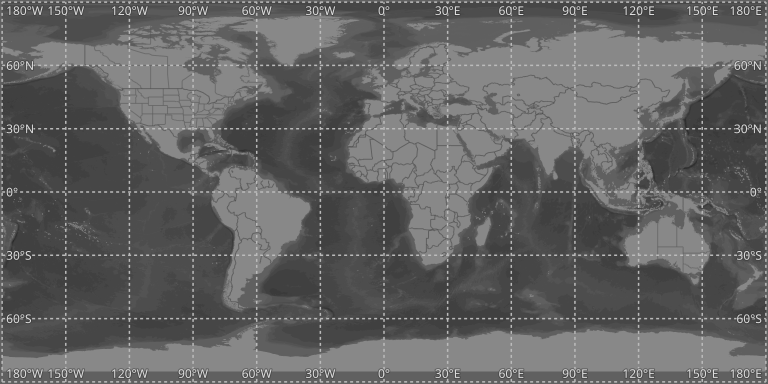
We’d like to thank Ian Turton for development and GeoSolutions for sponsoring the work.
GeoServer monitor Kafka storageThe monitoring Kafka storage module, developed as part of GEOS-11150, allows storing the requests captured by the monitoring extension into a Kafka topic.

We’d like to thank Simon Hofer for sharing his work with the community. To learn more about the module, how to install and use it, see the user-guide.
JWT HeadersThe JWT headers module has been developed as part of GEOS-11317.

The module is a new authentication filter that can read JWT Headers, as well as general JSON payloads and simple strings, to identify a user, as well as to extract their roles. The combination of Apache mod_auth_openidc with geoserver-jwt-headers-plugin provides an alternative to using the geoserver-sec-oauth2-openid-connect-plugin plugin.
We’d like to thank David Blasby (GeoCat) for this work on this module.
Full Release notesNew Feature:
- GEOS-11225 [AuthKey] AuthKey synchronize the user/group automatically
MapML:
- GEOS-10438 ENTITY_RESOLUTION_ALLOWLIST property not parsing empty setting
- GEOS-11207 Refactor MapML MVC controller as GetMap-based operation with standard parameter format
- GEOS-11221 mkdocs preflight rst fixes
- GEOS-11289 Enable Spring Security Stric [HttpFirewall] by default
- GEOS-11297 Escape WMS GetFeatureInfo HTML output by default
- GEOS-11300 Centralize access to static web files
Improvement:
- GEOS-11130 Sort parent role dropdown in Add a new role
- GEOS-11142 Add mime type mapping for yaml files
- GEOS-11148 Update response headers for the Resources REST API
- GEOS-11149 Update response headers for the Style Publisher
- GEOS-11152 Improve handling special characters in the Simple SVG Renderer
- GEOS-11153 Improve handling special characters in the WMS OpenLayers Format
- GEOS-11155 Add the X-Content-Type-Options header
- GEOS-11173 Default to using [HttpOnly] session cookies
- GEOS-11176 Add validation to file wrapper resource paths
- GEOS-11213 Improve REST external upload method unzipping
- GEOS-11222 Include Conformance Class for “Search” from OGC API - Features Part 5 proposal
- GEOS-11226 Enable JTS OverlayNG by default
- GEOS-11246 Schemaless plugin performance for WFS
- GEOS-11247 Avoid HTML annotations special status in APIBodyProcessor
- GEOS-11248 Move version header handling from APIBodyMethodProcessor to APIDispatcher
- GEOS-11260 JNDI tutorial uses outdated syntax
- GEOS-11288 Improve input validation in ClasspathPublisher
- GEOS-11289 Enable Spring Security Stric [HttpFirewall] by default
- GEOS-11298 When a Raster Attribute Table is available, expose its attributes in GetFeatureInfo
Bug:
- GEOS-11050 jdbc-store broken by changes to Paths.names
- GEOS-11051 Env parametrization does not save correctly in AuthKey extension
- GEOS-11145 The GUI “wait spinner” is not visible any longer
- GEOS-11182 Avoid legends with duplicated entries
- GEOS-11187 Configuring a raster with NaN as NODATA results in two NaN in the nodata band description
- GEOS-11190 GeoFence: align log4j2 deps
- GEOS-11203 WMS GetFeatureInfo bad WKT exception for label-geometry
- GEOS-11224 Platform independent binary doesn’t start properly with default data directory
- GEOS-11250 WFS GeoJSON encoder fails with an exception if an infinity number is used in the geometry
- GEOS-11278 metadata: only selected tab is submitted
- GEOS-11312 Used memory calculation fix on legend WMS request
Task:
- GEOS-11242 Remove the Xalan library
- GEOS-11315 Revert to CORS commented out
- GEOS-11318 Update postgresql to 42.7.2
- GEOS-11134 Feedback on download bundles: README, RUNNING, GPL html files
- GEOS-11141 production consideration for logging configuration hardening
- GEOS-11159 Update mapfish-print-lib 2.3.0
- GEOS-11180 Update ImageIO-EXT to 1.4.9
- GEOS-11181 Update jai-ext to 1.1.25
- GEOS-11186 Fix maven enforcer failFast
- GEOS-11220 Upgrade Hazelcast from 5.3.1 to 5.3.6
- GEOS-11245 Update OSHI from 6.2.2 to 6.4.10
- GEOS-11316 Update Spring version to 5.3.32
Community module development:
- GEOS-11305 Add layer information in the models backing STAC
- GEOS-11146 Fix MBTiles output format test
- GEOS-11184 ncwms module has a compile dependency on gs-web-core test jar
- GEOS-11209 Open ID Connect Proof Key of Code Exchange (PKCE)
- GEOS-11212 OIDC accessToken verification using only JWKs URI
- GEOS-11219 Upgraded mail and activation libraries for SMTP compatibility
- GEOS-11293 Improve performance of wps-lontigudinal-profile
Additional information on GeoServer 2.25 series:
Release notes: ( 2.25-RC )
-
-
sur Stefano Costa: Install iosacal with conda
Publié: 2 March 2024, 5:35pm CET
Starting today, you can install iosacal with conda. This adds to the existing installation procedure with pip. Conda is a good fit for complex projects and has better tooling for reproducibility.
Installing iosacal can be achieved by adding conda-forge to your channels with:
conda config --add channels conda-forge conda config --set channel_priority strictOnce the conda-forge channel has been enabled, iosacal can be installed with conda:
conda install iosacalor with mamba:
mamba install iosacal
-
sur Solar Symbology
Publié: 2 March 2024, 9:59am CET par Keir Clarke
The one thing that you are guaranteed to see before a solar eclipse is lots of maps. With just over a month to go before April 8th's total solar eclipse new solar eclipse maps are being released almost daily. The Spanish Language television network Univision has released an interactive map which is very similar to the Bloomberg eclipse map (see below) but is even better. Like Bloomerg's
-
sur Fernando Quadro: Curso de GeoNode com inscrições abertas!
Publié: 1 March 2024, 8:39pm CET
Aprenda a montar a sua própria Infraestrutura de Dados Espaciais com o GeoNode, uma plataforma para gestão e publicação de dados geoespaciais que reúne projetos open-source maduros e estáveis sob uma interface consistente e fácil de usar, permitindo que os usuários, compartilhem seus dados de forma rápida e facil.
Este novo curso visa capacitar os profissionais no uso eficiente da plataforma GeoNode, e tem como objetivos:
 Familiarizar os participantes com os conceitos fundamentais do Geonode e suas capacidades.
Familiarizar os participantes com os conceitos fundamentais do Geonode e suas capacidades.
 Explorar o funcionamento de servidores de mapas e seus benefícios.
Explorar o funcionamento de servidores de mapas e seus benefícios.
 Apresentar os padrões de dados do Open Geospatial Consortium (OGC), como Web Map Service (WMS) e Web Feature Service (WFS), para interoperabilidade geoespacial.
Apresentar os padrões de dados do Open Geospatial Consortium (OGC), como Web Map Service (WMS) e Web Feature Service (WFS), para interoperabilidade geoespacial.
 Demonstrar a publicação eficiente de dados no Geonode usando views de bancos de dados geográficos.
Demonstrar a publicação eficiente de dados no Geonode usando views de bancos de dados geográficos.
 Ensinar a integração do Geonode com o QGIS através de plugins.
Ensinar a integração do Geonode com o QGIS através de plugins. Quer saber mais?
Quer saber mais?O Curso é oferecido na modalidade EAD Ao Vivo, com uma carga horária de 18 horas divididos em 6 encontros. Porém, essas aulas são gravadas e ficam disponíveis ao aluno por 12 meses em nosso portal do aluno.
Então, se por acaso você não puder comparecer em alguma das aulas ao vivo, não se preocupe, você poderá rever a aula gravada a qualquer momento.
Em comemoração ao aniversário de 12 anos da Geocursos, estamos disponibilizando pra você R$ 100 de desconto, basta utilizar o cupom GEOCURSOS12ANOS
 Ficou interessado?
Ficou interessado? -
sur Stefano Costa: IOSACal in Google Colab
Publié: 1 March 2024, 5:27pm CET
Google Colab is a popular notebook service that you can run directly from your browser. Python is natively supported and it’s fairly easy to run a Jupyter notebook, even with custom dependencies like Numpy and Matplotlib.
You can run IOSACal in Google Colab! I have added a new short how-to guide in the official documentation. Find the how-to at [https:]] .
This takes advantage of a demo notebook that was contributed by Jelmer Wind.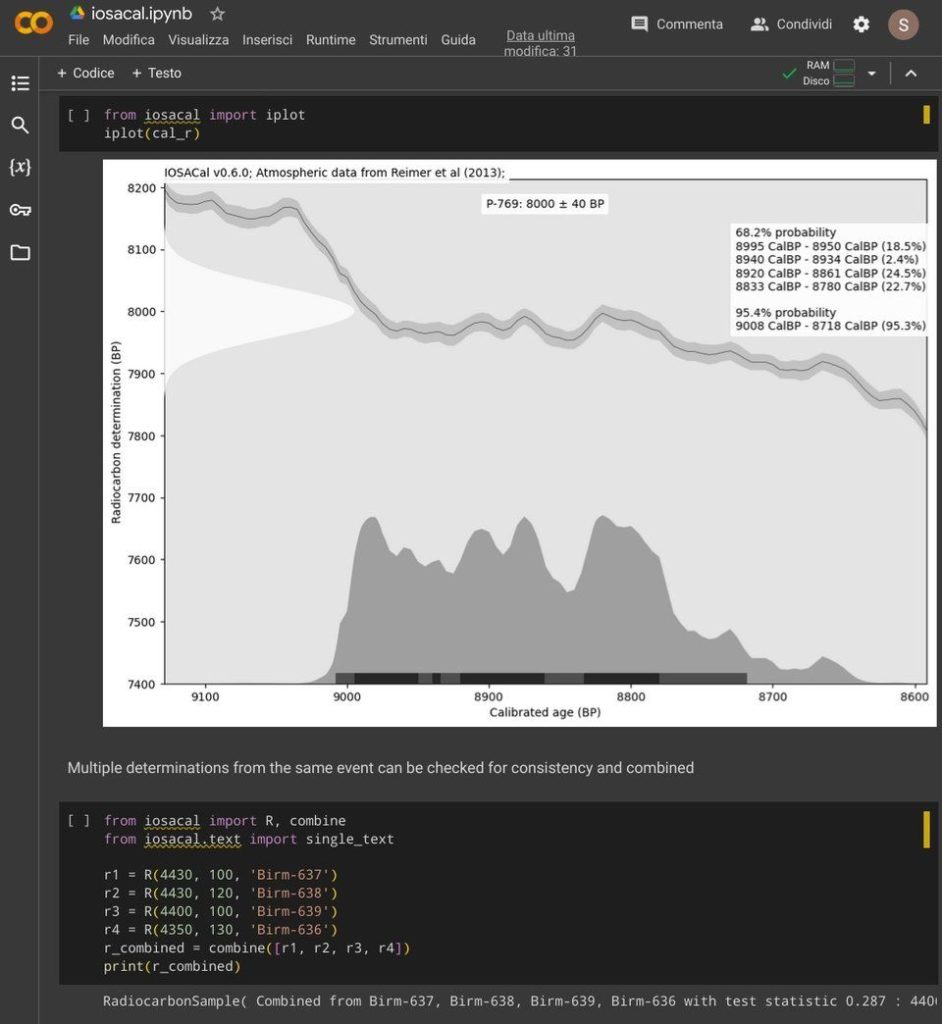 A screenshot of the demo notebook running IOSACal in Google Colab. Even with a plot!
A screenshot of the demo notebook running IOSACal in Google Colab. Even with a plot!
-
sur Cities Need Trees
Publié: 1 March 2024, 10:02am CET par Keir Clarke
Tree density in TokyoNew York needs 113.9 million more trees in order to become carbon neutral.Picterra has calculated which cities around the world have the most and least trees. Using their own geospatial AI detection platform with tree counting software and forestry monitoring tools Picterra has mapped and counted the number of trees in 26 global cities. It has then calculated how many more -
sur Who Deserves a Monument Anyway?
Publié: 29 February 2024, 9:25am CET par Keir Clarke
Distribution of Confederate monumentsThanks to Geochicas and the Mapping Diversity project there has been quite a lot of data analysis undertaken over the last few years into the lack of diversity in the street names of cities around the world. According to Mapping Diversity in the 32 cities which they have analyzed "More than 90% of the streets named after individuals are dedicated to white
-
sur OTB Team: OTB Release 9.0.0
Publié: 28 February 2024, 6:00pm CET
Dear OTB community, We are happy to announce that OTB version 9.0.0 has been released! Ready to use binary packages are available on the package page of the website: The Docker image is available :docker pull orfeotoolbox/otb:9.0.0 It is also possible to checkout the branch with git: git clone [https:] OTB -b release-9.0 The documentation […]
-
sur Online GeoJSON Editors
Publié: 28 February 2024, 3:30am CET par Keir Clarke
Placemark Playgeojson.ioVector GeoJSONGeoman Geojson Editor I use online geojson editors very regularly to create and edit geographical data. I find online editors particularly useful for tidying up and minimizing third-party data which I have downloaded from elsewhere. For example an editor can be very useful for previewing data exported from overpass turbo, and then manipulating that data -
sur The Supply Chain of Deforestation
Publié: 27 February 2024, 10:21am CET par Keir Clarke
Palm oil production is a major contributor to deforestation, particularly in Southeast Asia. To meet the growing demand for palm oil, every year vast areas of rainforests and other ecosystems are cleared and converted into large-scale oil palm plantations. Palm oil is the most widely used vegetable oil globally and it is found in around half of the products in your local supermarket, -
sur Street View Surveillance
Publié: 26 February 2024, 9:10am CET par Keir Clarke
The Electronic Frontier Foundation's Spot the Surveillance game is a virtual reality game which requires players to identify surveillance equipment in a panoramic image of a San Francisco street scene. Panning around this 360 degree view players are required to detect the every day surveillance equipment which is now routinely used on America's streets, such as body-worn cameras, automated
-
sur Free and Open Source GIS Ramblings: Trajectools 2.0 released ?
Publié: 24 February 2024, 8:26pm CET
It’s my pleasure to share with you that Trajectools 2.0 just landed in the official QGIS Plugin Repository.
This is the first version without the “experimental” flag. If you look at the plugin release history, you will see that the previous release was from 2020. That’s quite a while ago and a lot has happened since, including the development of MovingPandas.
Let’s have a look what’s new!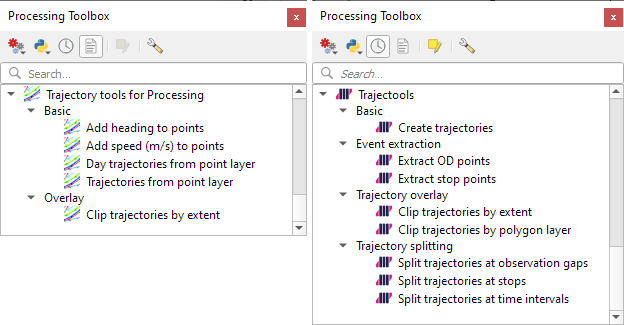
The old “Trajectories from point layer”, “Add heading to points”, and “Add speed (m/s) to points” algorithms have been superseded by the new “Create trajectories” algorithm which automatically computes speeds and headings when creating the trajectory outputs.
“Day trajectories from point layer” is covered by the new “Split trajectories at time intervals” which supports splitting by hour, day, month, and year.
“Clip trajectories by extent” still exists but, additionally, we can now also “Clip trajectories by polygon layer”
There are two new event extraction algorithms to “Extract OD points” and “Extract OD points”, as well as the related “Split trajectories at stops”. Additionally, we can also “Split trajectories at observation gaps”.
Trajectory outputs, by default, come as a pair of a point layer and a line layer. Depending on your use case, you can use both or pick just one of them. By default, the line layer is styled with a gradient line that makes it easy to see the movement direction:

while the default point layer style shows the movement speed:
 How to use Trajectools
How to use Trajectools
Trajectools 2.0 is powered by MovingPandas. You will need to install MovingPandas in your QGIS Python environment. I recommend installing both QGIS and MovingPandas from conda-forge:
(base) conda create -n qgis -c conda-forge python=3.9 (base) conda activate qgis (qgis) mamba install -c conda-forge qgis movingpandas
The plugin download includes small trajectory sample datasets so you can get started immediately.
OutlookThere is still some work to do to reach feature parity with MovingPandas. Stay tuned for more trajectory algorithms, including but not limited to down-sampling, smoothing, and outlier cleaning.
I’m also reviewing other existing QGIS plugins to see how they can complement each other. If you know a plugin I should look into, please leave a note in the comments.
-
sur The Street Names of Budapest
Publié: 24 February 2024, 11:11am CET par Keir Clarke
Over 2,600 locations in Budapest have place-names which derive from people. Names and Spaces - Budapest is a fantastic mapped analysis of who Budapest's streets and public spaces were named after and what this reveals about the city's history.The map is in Hungarian but works fairly seamlessly with Google Translate in Chrome. If you don't have access to Google Translate then you can still enjoy
-
sur geomatico: Desarrollo de un gemelo digital para la gestión del agua
Publié: 23 February 2024, 2:17pm CET
La escasez de agua en la agricultura, agravada por el cambio climático, amenaza la seguridad alimentaria. Los sistemas de riego eficientes son clave para mitigar estos desafíos, optimizando el uso del agua y fortaleciendo la resiliencia agrícola.
Entre 2022 y 2023 hemos desarrollado un gemelo digital de gestión del agua en agricultura junto al IRTA (Instituto de Investigación y Tecnología Agroalimentaria). En la aplicación web se pueden monitorizar y analizar casi 300 mil parcelas simbolizadas semanalmente por 17 indicadores (unos 250 millones de registros por año) que permiten optimizar la irrigación.
-
sur Four Seasons in One Map
Publié: 23 February 2024, 9:25am CET par Keir Clarke
Chronolog is an interactive map of timelapse photographs designed to help monitor the environment. It is a citizen science project which encourages organizations and individuals to engage with nature while recording and monitoring the changing environment.The Chronolog map allows you to explore timelapse photos of nature which have been captured around the USA (and one or two in other countries
-
sur QGIS España: Publicación del libro Introducción a los Sistemas de Información Geográfica con QGIS
Publié: 22 February 2024, 9:00pm CET
Publicada la Segunda Edición del Libro “Introducción a los Sistemas de Información Geográfica con QGIS” de Federico GazabaUna pregunta recurrente en redes sociales es ¿Dónde puedo encontrar un manual para aprender a usar QGIS? o ¿Cómo puedo iniciarme en el uso de los Sistemas de Información Geográfica (SIG)? Hace aproximadamente 3 años Federico Gazaba publicaba la pimera versión de su libro “Introducción a los Sistemas de Información Geográfica con QGIS” un manual que en su momento fue de referencia obligada para las personas usuarias de QGIS en habla hispana pero que con el paso del tiempo había quedado desactualizado debido a la aparición de nuevas versiones de QGIS.
Recientemente el autor nos comentaba que se estaba preparando una actualización de libro y no nos ha hecho esperar mucho, el 22 de Febrero nos anunciaba en el canal de Telegram de QGIS en español que la versión 2.0 había sido publicada: _“Hola amigos #geoinquietos !. Lo prometido es deuda, les traigo la versión 2.0 de mi libro libre “Introducción a los Sistemas de Información Geográfica con QGIS”. Esta versión actualiza los contenidos de la versión anterior a QGIS 3.34 Prizren.".
El libro ha sido publicado bajo la licencia CC BY-SA 4.0 lo que permite que sea compartido o modificado, para cualquier proposito, con libertad mientras se respete la atribución al autor y se comparta con la misma licencia. Se puede descargar aquí o aquí el repositorio del libro se puede encontrar en GitHub
Este libro es otro ejemplo que demuestra que los proyectos de software libre y open source permiten compartir y colaborar en este tipo de iniciativas donde podemos participar de forma activa y generar grandes sinergias en sus aplicaciones y desarrollos en beneficio, tanto de las comunidades que las desarrollan como las que las usan.
Federico Gazaba es profesor de Matemáticas y Técnico Maestro Mayor de Obras y actualmente es docente en el Instituto de Formación Docente y Técnica 122 “Presidente Illia” de Pergamino (Provincia de Buenos Aires, Argentina) y Director de Sistemas de Información Georreferenciada de la Municipalidad de Pergamino. Desde el año de 2013 es usuario de QGIS y es un entusiasta del las tecnologías libres y de los datos espaciales abiertos. La creación del manual nace de la necesidad de impartir cursos de QGIS a sus colegas de municipalidad y es el resultado de la sistematización de esas enseñanzas. Desde 2016, de forma ininterrumpida, imparte cursos introductorios a los SIG para diferentes instituciones.
Puedes seguir a Federico en la siguientes redes sociales:
-
sur Geo-BIM for the Built Environment
Publié: 22 February 2024, 11:13am CET par Simon Chester
OGC holds three Member Meetings each year – one each in Europe, the Americas, and Asia Pacific – where OGC’s Standards Working Groups (SWGs), Domain Working Groups (DWGs), Members, and other geospatial experts meet to progress Standards, provide feedback on initiatives being run by the OGC Collaborative Solutions and Innovation (COSI) Program, hear about the latest happenings at OGC, network with the leaders of the geospatial community, and see what’s coming next. The meetings are open to the public, though there are some closed sessions, and provide a great way to start to get to know – and get involved with – the OGC Community.
The next OGC Member Meeting, OGC’s 128th, will be held at TU Delft on March 25-28, 2024. Fitting for TU Delft and the Netherlands, the theme of the meeting will be ‘Geo-BIM For the Built Environment.’ Meeting sponsorship is generously provided by TU Delft and Geonovum, with support from GeoCAT and digiGO. In the lead up to the event, Geonovum produced a short video highlighting what to expect in Delft.
“In many respects, the Netherlands is the world leader in the use of advanced integration of building data and detailed urban mapping, as well as the use of Open Standards and Open APIs to interface with those data to provide citizen services,” commented Scott Simmons, OGC’s Chief Standards Officer.
“More specifically, TU Delft is a world-leading research institute in Geo-BIM integration, while Geonovum, another meeting sponsor, has done so much to promote the effective use of Open Standards in government & e-government, including documenting proof that Open Standards make things work better, faster, and cheaper.”
Under the theme, the OGC Member Meeting will include several sessions related to the built environment and the integration of Geospatial and Building Information Models (BIM). Such sessions will include: a Geo-BIM Summit that non-members are encouraged to attend; a Built Environment Joint Session; and a Land Administration Special Session.
On top of these, there will be a meeting of the OGC Europe Forum, sessions on Geospatial Reporting Indicators, Observational Data, the ‘Today’s Innovations, Tomorrow’s Technologies’ Future Directions Session, networking opportunities, and the usual host of OGC Working Group meetings on topics ranging from APIs to agriculture, and the sea-floor to space. Most sessions are open to the public, with special encouragement for non-OGC-members to attend the Geo-BIM Summit and any of the Domain Working Group meetings. As always, the opening session will consist of presentations from local organizations that showcase the world-leading geospatial technologies seen in The Netherlands.
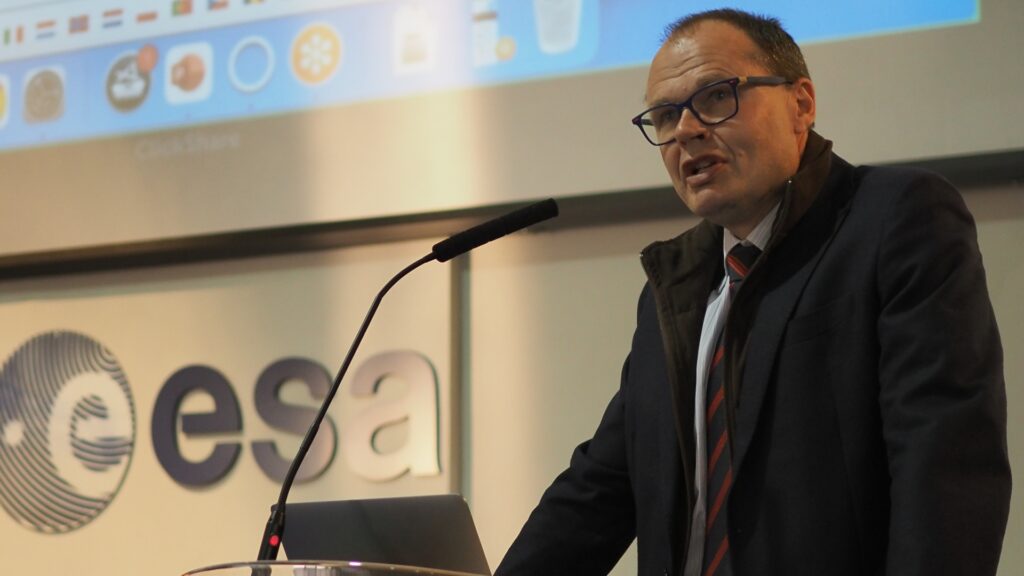 Dr. Rune Floberghagen, Head of the Science, Applications and Climate Department in the Directorate for Earth Observation Programmes, ESA, was one of the local experts that presented at the opening session of the 125th Member Meeting in Frascati, Italy.
Geo-BIM Summit
Dr. Rune Floberghagen, Head of the Science, Applications and Climate Department in the Directorate for Earth Observation Programmes, ESA, was one of the local experts that presented at the opening session of the 125th Member Meeting in Frascati, Italy.
Geo-BIM Summit
The Geo-BIM Summit will run on Wednesday afternoon and will focus on the integration of geographic data and Building Information Models (BIM).
“In the Building Information Modeling (BIM) world, geographical data about the environment of the construction is becoming increasingly important,” said Prof. Dr. Jantien Stoter, Chair of the OGC 3D Information Management DWG, and part of the organizing committee for the Geo-BIM session. “Similarly, in the Geospatial domain, the need for detailed information about buildings is also growing. There are many initiatives to develop solutions that better facilitate this integration, including projects that realize this integration for a specific use case; automated conversion of data between the two domains; methods to georeference BIM files in a standardized and straightforward way; and profiles for standards that establish the integration for specific use-cases. The Geo-BIM session will present such initiatives in order to address the question of “what more is needed to improve the integration?” This will further shape the OGC & buildingSMART Road Map on integration of both domains, and contribute to the best practices currently under development.”
Built Environment Joint SessionTwo sessions on the Built Environment will run on Wednesday morning. The first is entitled “The Future of Land Infra” and will discuss what more we need to do in the standardization of built infrastructure data, in terms of updating, improving or adding to the OGC Standards Portfolio, and will include input from several OGC activities: the Integrated Digital Built Environment (IDBE) subcommittee, LandAdmin DWG, Model for Underground Data Definition and Integration (MUDDI) SWG; and the Geotech Interoperability Experiment, as well as the wider OGC Collaborative Solutions and Innovation (COSI) Program.
The next session is entitled “What Urban Digital Twins mean to OGC” and will focus on the wider work that OGC is doing in the space and how the Digital Twins DWG can help harmonize it. The session will also include a cross-working-group discussion on the in-progress OGC Urban Digital Twins Position Paper, as well as a presentation by Binyu Lei, researcher at the Urban Analytics Lab at the National University of Singapore, entitled “Humans as Sensors in Urban Digital Twins.”
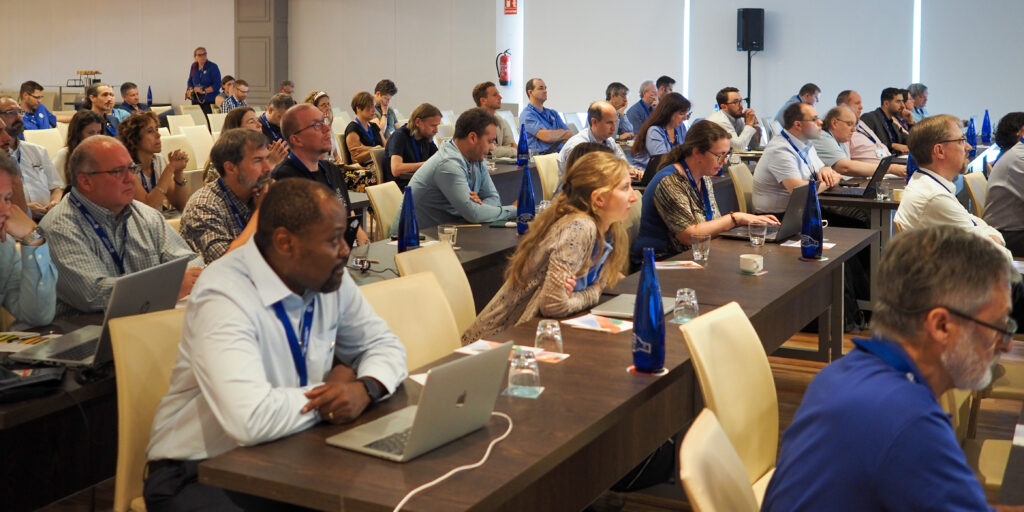 Attendees at the 123rd Member Meeting in Madrid, Spain.
Land Admin Special Session
Attendees at the 123rd Member Meeting in Madrid, Spain.
Land Admin Special Session
Following the opening session and keynotes on Monday is a Land Admin special session run by the OGC Land Administration (Land Admin) DWG.
“Worldwide, effective, and efficient land administration is an ongoing concern, inhibiting economic growth and property tenure,” commented Eva-Maria Unger, co-chair of the OGC Land Admin DWG. “Only a limited number of countries globally have a mature land information system.”
The Land Admin Special Session will also be the first meeting of the soon-to-be-formed OGC Land Administration Domain Model (LADM) SWG.
“This is a fairly significant session as we’re going to use it to kick off an effort to create an encoding Standard for Land Administration data that’s globally relevant,” said Scott Simmons. “It’s great to be holding it in Delft because Kadaster, the Netherlands’ Cadaster, Land Registry and Mapping Agency, is one of the world leaders in providing expertise on use of Land Administration and Land Administration modernization across not just Europe but for developing nations around the world. So it’s an opportunity to bring together their expertise along with representatives from all levels of sophistication of land management around the world.”
Peter van Oosterom continued: “The new SWG will work on the Land Administration Domain Model (LADM) Implementation Standard in OGC, which will be included as part 6 of the existing ISO 19152 series of Standards. This sounds modest, but is actually a big step forward. The LADM Standards today are only Conceptual Models, which means that countries implementing them have to find their own solutions for developing their country file, technical encodings, code list values, processes/workflows, etc.
“An open LADM Implementation Standard will not only reduce implementation costs by providing free, proven technical encodings, but would also enable solution vendors to provide commercial off-the-shelf software that works across multiple countries/jurisdictions, rather than having to adapt it to each unique approach.”
Networking, social, and other sessionsIn addition to these sessions, the 128th OGC Member Meeting will also see meetings of over 50 different working groups or committees covering almost the full breadth of geospatial applications and domains, as well as several social and networking events.
Registration remains open, as do sponsorship opportunities. Non-members are encouraged to attend. To see the full agenda, visit ogcmeet.org.
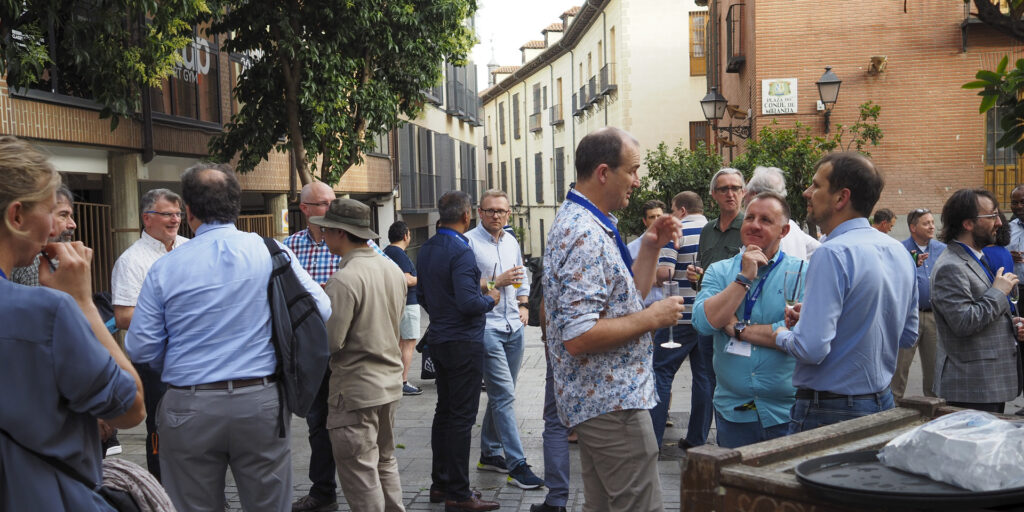 As well as the host of technical content and informative presentations, OGC Member Meetings also include networking events, such as the Wednesday night dinner.
As well as the host of technical content and informative presentations, OGC Member Meetings also include networking events, such as the Wednesday night dinner.The post Geo-BIM for the Built Environment appeared first on Open Geospatial Consortium.
-
sur The Cyclotron
Publié: 22 February 2024, 9:32am CET par Keir Clarke
The West Midlands Cyclotron uses cycle counters installed on the roads in the West Midlands to provide a near real-time data visualization of the number of cyclists using individual roads in areas of Birmingham, Coventry and Wolverhampton (and many roads in between). The most striking aspect of the Cyclotron is the design of the LED themed data dashboard. This dashboard takes its cue from the
-
sur GeoTools Team: GeoTools 29.5 released
Publié: 21 February 2024, 12:30pm CET
GeoTools 29.5 releasedThe GeoTools team is pleased to announce the release of the latest maintenance version of GeoTools 29.5:geotools-29.5-bin.zipgeotools-29.5-doc.zipgeotools-29.5-userguide.zipgeotools-29.5-project.zipThis release is also available from the OSGeo Maven Repository and is made in conjunction with GeoServer 2.23.5 and GeoWebCache 1.23.4. We are
-
sur The World's First OpenStreetMap
Publié: 21 February 2024, 10:22am CET par Keir Clarke
The only thing I love more than exploring historical vintage maps of the world is exploring annotated, interactive versions of ancient world maps. Now thanks to the Museo Galileo I can browse an annotated version of the world's greatest medieval map - the Fra Mauro World Map.The Annotated Fra Mauro World Map is an interactive zoomable version of the famous 1450 Venetian map of the world. The
-
sur QGIS Blog: Save the date & call for contributions: QGIS user conference and contributor meeting in Bratislava
Publié: 20 February 2024, 8:17pm CET
We are happy to announce that QGIS User Conference will take place on 9-10 September 2024 in Bratislava, Slovakia.
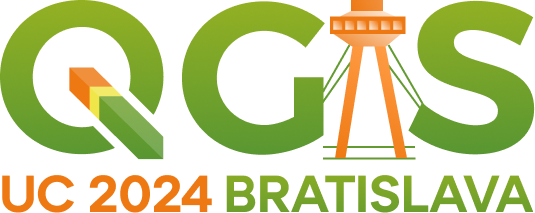
The traditional Contributor Meeting will be held right after the conference on 11-13 September 2024 at the same venue.
Learn more about the user conference and the contributor meeting at the event’s web site: [https:]]
The call for papers for the user conference is now open – you can submit proposals for talks and workshops by 31 March 2024:
[https:]]
We have also started call for sponsors, with sponsorship opportunities at various levels. More details here:
[https:]]
User Conference
The QGIS User Conference is an annual event that brings together users and developers of QGIS. The conference provides an opportunity for attendees to learn about the latest developments in QGIS, share their experiences with others, and network with other QGIS users and
developers.
Contributor Meeting
QGIS Contributor Meetings are volunteer-driven events where contributors to the QGIS project from around the world get together in a common space – usually a university campus. During these events, contributors to the QGIS project take the opportunity to plan their work, hold face-to-face discussions and present new improvements to the QGIS project that they have been working on. Everybody attending the event donates their time to the project for the days of the event.
As a project that is built primarily through online collaboration, these meetings provide a crucial ingredient to the future development of the QGIS project. The event is planned largely as an ‘unconference’ with minimal structured programme planning.For more details and to sign up, please visit the corresponding wiki page [https:]]
-
sur Enterprise Products: A Collaborative Journey with OGC
Publié: 20 February 2024, 12:58pm CET par Simon Chester
In the ever-evolving realm of energy infrastructure, the success of an organization is often determined by its ability to adapt, innovate, and collaborate effectively. Enterprise Products Partners, L.P. has exemplified these qualities through their ongoing relationship with the Open Geospatial Consortium (OGC).
Under the leadership of Gary Hoover, Enterprise Products’ team of geospatial technology experts has helped develop an open, international geospatial Standard for the pipeline industry, PipelineML, and deployed disruptive open-source geospatial technology.
Doing so helped Enterprise Products optimize the management of their extensive 50,000-mile pipeline network, and supports the larger goal of safe and sustainable energy infrastructure within the oil and gas sector.
Pioneering the PipelineML StandardEnterprise Products became a voting member of OGC in 2013. Shortly after, Data Architect John Tisdale rolled up his sleeves and got to work, learning OGC’s consensus-based Standards process and serving as a charter member and co-chair of the PipelineML Standards Working Group (SWG). In 2019, the PipelineML Conceptual and Encoding Model Standard was approved by the OGC Membership, making it an official OGC Standard.
The PipelineML Standard – collaboratively developed by Enterprise Products and contributors from across the US, Canada, Belgium, Norway, Netherlands, UK, Germany, Australia, Brazil, and Korea – defines concepts that support the interoperable interchange of data related to oil and gas pipeline systems. PipelineML addresses two critical business use cases specific to the pipeline industry: new construction surveys and pipeline rehabilitation.
The Standard defines individual pipeline components, provides support for lightweight data aggregation, and provides a mechanism for extensions focused on safety and sustainability through effective data management practices. By working with OGC’s Land and Infrastructure Domain Working Group, PipelineML was aligned with related Standards that ensure compatibility with future land management requirements.
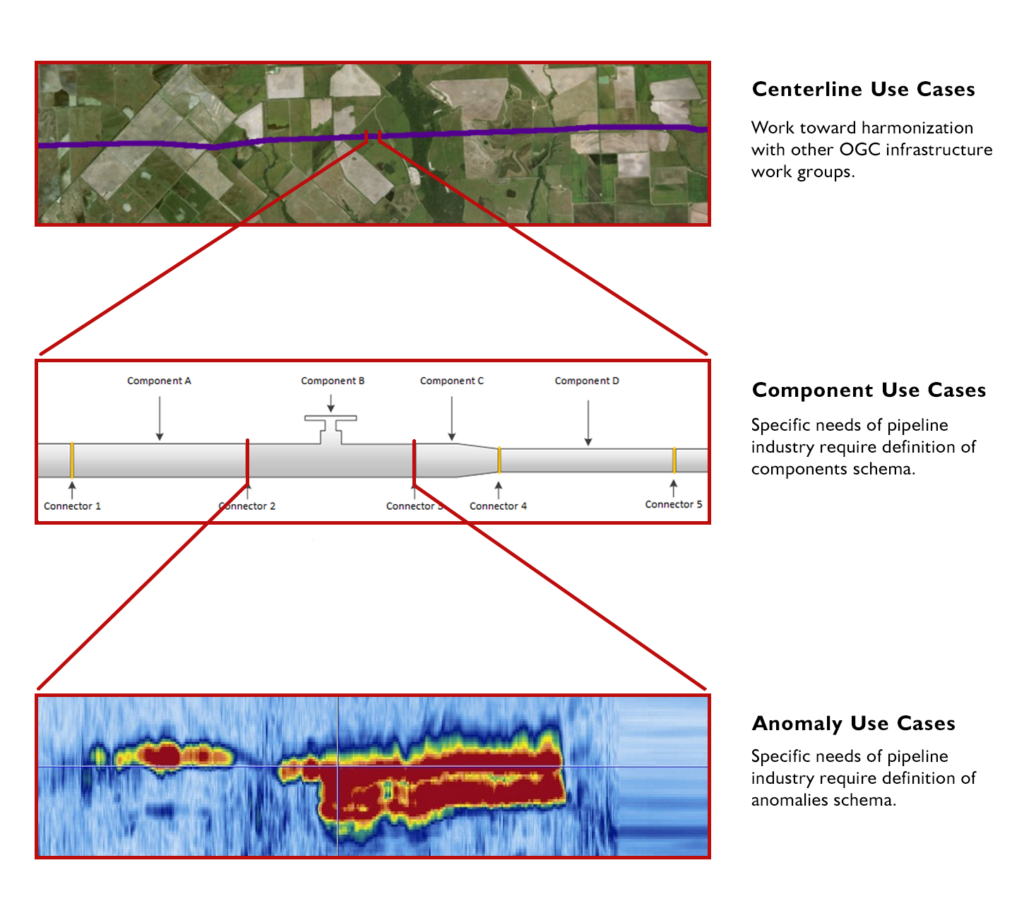 Three use-cases addressed by the OGC PipelineML Standard.
A Step Towards Modernization
Three use-cases addressed by the OGC PipelineML Standard.
A Step Towards Modernization
June 26, 2023, marked a significant milestone in Enterprise Products’ technical history: in partnership with select technology vendors, the company implemented open-source technology to revamp their existing Asset Information Management (AIM) Program.
To move off the legacy PODS data model and a dependence on proprietary software, the Enterprise Products team spent years developing, prototyping, and refining the Pipeline Component Data Model (PCDM). Instead of utilizing an ageing linear referencing methodology, PCDM leverages modern geospatial technologies to gather GPS coordinates in the field that accurately mark the real-world location of pipeline components. This “Digital Twin” approach makes PCDM more adaptable to evolving business requirements.
Emerging from this initiative, the AIM Data Architecture Platform and Development Framework now provides data and services that serve as the lifeblood of the organisation.
The Pillars of Value-addingEnterprise Products’s Asset Data Management group has played a vital role in elevating the company’s performance with contributions that have rippled across the organization to deliver tangible value in several areas:
Standards & GovernanceTo facilitate seamless information exchange across business units and external service providers, Enterprise Products has established stringent data standards and governance protocols that ensure consistent and accurate data for decision-making. By aligning their asset data with OGC Standards, Enterprise Products has established a universal language for geospatial data that simplifies communication and interoperability.
Data IntegrationIncorporating integrated inline inspection data has been pivotal in maintaining the integrity of Enterprise Products’ extensive pipeline network. The AIM Data Architecture Platform functions as a nexus for data integration that enables a seamless flow of information across departments that promotes collaboration and efficiency.
Spatio-temporal AnalyticsThe integration of spatio-temporal analytics has introduced a new dimension to Enterprise Products’ pipeline management. Real-time geospatial insights have not only improved operational efficiency but have also fostered proactive problem solving. By incorporating database-native geoprocessing, Enterprise Products has streamlined analytical workflows and enhanced the speed and accuracy of decision-making.
Data DeliverabilityEnterprise Products has democratized data access within the organization by creating a map-based interface that provides intuitive visualisations and reports that empower stakeholders to make informed decisions. This map-based interface supports over 1200 individual users across various departments, including Asset Integrity, Business Development, Field Operations, and Public Awareness.
Safety and SustainabilitySpanning the pipeline asset life-cycle from new construction to divestitures, the AIM Data Architecture supports several Safety and Sustainability programs that ensure safe, reliable operations. Programs such as Public Awareness, OneCall (aka 811 “Call Before You Dig”), Inline Inspections, Pipeline Rehabilitation, Regulatory Compliance, Integrity Assessments, and Field Operations all depend on highly available asset information.
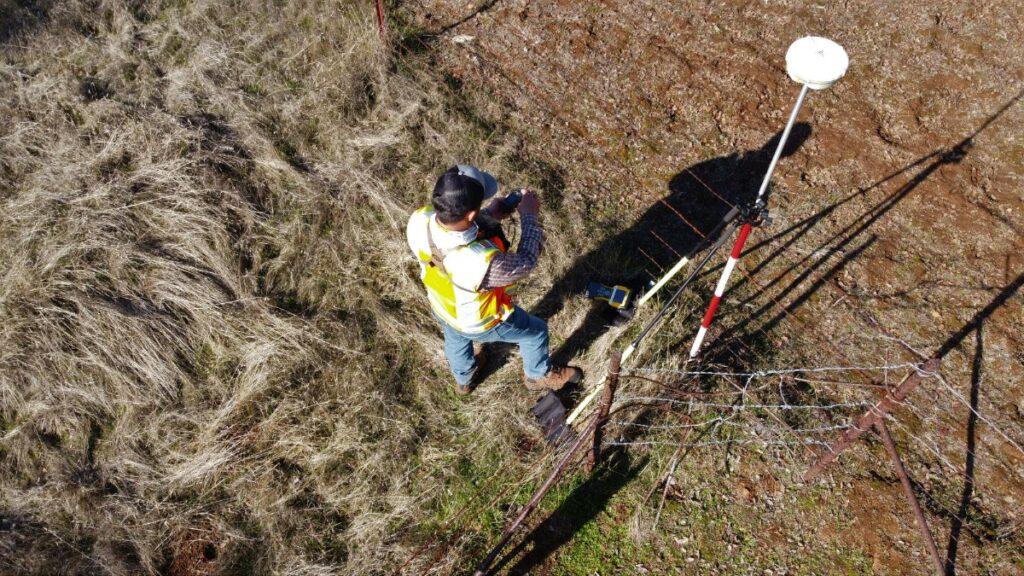 Rather than linear referencing, Enterprise Products uses GPS coordinates to accurately mark the real-world location of pipeline components.
Scaling for the Future
Rather than linear referencing, Enterprise Products uses GPS coordinates to accurately mark the real-world location of pipeline components.
Scaling for the Future
The volume, variety, and velocity of data required to manage and optimize large pipeline networks presents substantial challenges. However, Enterprise Products’ open architecture effortlessly manages the scale of their installation and provides ample room for growth. To put this into perspective, consider the following statistics:
- 50,000 Miles of Pipeline
- 2,500 Facilities
- 5.6 million Pipe Components
- 45 million rows of inline inspection data – 30 years’ worth
- 80 million Rows of geospatially referenced data, with 10x better lossless compression over the legacy proprietary system
One of the most striking aspects of Enterprise Products’ journey is their embrace of Open Standards and Open Source technology. The AIM Data Architecture Platform represents a complete departure from proprietary systems. Key standards and technologies used by Enterprise Products include PipelineML, GeoServer, QGIS, PostgreSQL, PostGIS Spatial Extender, Python & other open libraries, and XML, GML, JSON, & GeoJSON encoded schemas.
This strategic shift not only reduced dependence on commercial vendors and licensing costs, but also established Enterprise Products as an industry pioneer that set a new standard for innovation and interoperability.
OGC Membership: A Driving ForceEnterprise Products’ journey is a compelling story of innovation and progress, with the OGC Community playing a pivotal role. Through collaborative efforts and a steadfast commitment to OGC’s consensus-based process, Enterprise Products led the development of the PipelineML Standard that has proven vital to optimizing the management of Enterprise Products’ extensive pipeline network.
Working with OGC has provided Enterprise Products with a significant competitive advantage, allowing them to leverage the collective knowledge and resources of the international geospatial community. Their journey underscores the transformative potential when industry leaders partner with organizations like OGC to drive positive change. As the world continues to seek sustainable and efficient energy infrastructure, Enterprise Products serves as a prime example of what is achievable when technology, data, and partnerships come together.
The post Enterprise Products: A Collaborative Journey with OGC appeared first on Open Geospatial Consortium.
-
sur The Chain Restaurants of America
Publié: 20 February 2024, 9:32am CET par Keir Clarke
Map of McDonald's outlets in the USAThe Georgia Institute of Technology's Friendly Cities Lab has released a new interactive map which reveals which chain restaurants dominate which areas of the United States. The U.S. Chain and Independent Restaurants map shows the locations of over 700,000 restaurants across the country, organized by restaurant chain and by frequency. The map reveals that -
sur AI Your Home on Street View
Publié: 19 February 2024, 9:33am CET par Keir Clarke
Have you ever wanted to radically alter the ambiance of your neighborhood? Perhaps you've always dreamed of turning your sleepy suburban road into a bustling inner-city street. Or maybe you've always wanted to dig up your nearby traffic heavy roads and replace them with green fields and trees. Well now you can - at least virtually.Panoramai is a new fun tool which allows you to grab Google Maps
-
sur Camptocamp: Coopterr, territorial cooperation platform based on Rennes Métropole's digital twin
Publié: 19 February 2024, 1:00am CET
Pièce jointe: [télécharger]
Coopterr, Rennes Métropole's territorial cooperation platform, is now online. It offers a first service to citizens, enabling them to consult electromagnetic wave exposure measurements and identify radioelectric sites in the city of Rennes. -
sur GeoServer Team: GeoServer 2.23.5 Release
Publié: 18 February 2024, 1:00am CET
GeoServer 2.23.5 release is now available with downloads (bin, war, windows), along with docs and extensions.
This is the last planned maintenance release of GeoServer 2.23.x, providing existing installations with minor updates and bug fixes. Sites using the 2.23.x series are encouraged to upgrade to GeoServer 2.24.x, or eventually wait next month, for the 2.25.0 release, and upgrade their installation, with the help of the upgrade guide.
GeoServer 2.23.5 is made in conjunction with GeoTools 29.5, and GeoWebCache 1.23.4.
Thanks to Andrea Aime (GeoSolutions) for making this release.
Release notesNew Feature:
- GEOS-11225 AuthKey synchronize the user/group automatically
- GEOS-11279 metadata: allow same field on multiple tabs
Improvement:
- GEOS-11213 Improve REST external upload method unzipping
- GEOS-11246 Schemaless plugin performance for WFS
- GEOS-11260 JNDI tutorial uses outdated syntax
- GEOS-11276 Use style_body to define CSS style for a layer
- GEOS-11288 Improve input validation in ClasspathPublisher
Bug:
- GEOS-11174 GWC rest api returns erroneous truncated response when gzip http encoding is enabled
- GEOS-11205 Layer page: style image fails if it is in isolated workspace
- GEOS-11250 WFS GeoJSON encoder fails with an exception if an infinity number is used in the geometry
- GEOS-11255 Multiple inserts in WPS with different idGen strategies does not work
- GEOS-11256 Cannot retrieve LegendGraphic from a PostGIS datastore with ‘hideEmptyRules’ and ‘Support on the fly geometry simplification’ enabled
- GEOS-11278 metadata: only selected tab is submitted
- GEOS-11285 GWC REST Content-Encoding gzip returns broken response
- GEOS-11291 GeoFence: Cleanup stale log4j references
For the complete list see 2.23.5 release notes.
Community UpdatesCommunity module development:
- GEOS-10933 keycloak logout NPE
- GEOS-11290 With Oauth enabled, anon users get random auth requests
Community modules are shared as source code to encourage collaboration. If a topic being explored is of interest to you, please contact the module developer to offer assistance.
About GeoServer 2.23 SeriesAdditional information on GeoServer 2.23 series:
- GeoServer 2.23 User Manual
- Drop Java 8
- GUI CSS Cleanup
- Add the possibility to use fixed values in Capabilities for Dimension metadata
- State of GeoServer 2.23
- GeoServer Feature Frenzy 2023
- GeoServer used in fun and interesting ways
- GeoServer Orientation
Release notes: ( 2.23.5 | 2.23.4 | 2.23.3 | 2.23.2 | 2.23.1 | 2.23.0 | 2.23-RC1 )
-
sur The Right-Wing Terrorism Map
Publié: 17 February 2024, 9:19am CET par Keir Clarke
The RTV Map Tool is an interactive map showing incidents of right-wing terrorism and violence in Western Europe since 1990. It documents and shows the locations of 1,214 violent right-wing attacks in Europe. This includes acts of violence which led to 32 fatalities.The map was created by the Center for Research on Extremism, at Oslo University, which studies right-wing extremism, hate crime and -
sur The Best Price Comparison Maps
Publié: 16 February 2024, 9:43am CET par Keir Clarke
The Aldi Price Map The Aldi Price Map shows the store price ticket of a range of products in US outlets of the popular budget supermarket (apparently the price data from European Aldi stores is not so readily accessible). The German supermarket chain Aldi is known for its low prices. The company now has over 2,000 stores in the United States, and in a recent poll was ranked the most
-
sur QGIS Blog: QGIS Grants #9: Call for Grant Proposals 2024
Publié: 15 February 2024, 8:09pm CET
Dear QGIS Community,
We are very pleased to announce that this year’s round of grants is now available. The call is open to anybody who wants to make a contribution to QGIS funded by our grant fund, subject to the call conditions outlined in the application form.
The deadline for this round is in four weeks, on 14 March 2024.
There are no new procedures in 2024. Please note the following guidelines established in previous years:
- The proposal must be submitted as a ‘QEP’ (QGIS Enhancement Proposal) issue in the repo: [https:]] (tagged as Grant-2024). Following this approach will allow people to ask questions and provide public feedback on individual proposals.
- Proposals must clearly define the expected final result so that we can properly assess if the goal of the proposal has been reached.
- The project budgets should account for PR reviewing expenses to ensure timely handling of the project-related PRs and avoid delays caused by relying on reviewer volunteer time.
- In the week after the QEP discussion period, the proposal authors are expected to write a short summary of the discussion that is suitable for use as a basis on which voting members make their decisions.
The PSC of QGIS.ORG will examine the proposals and has veto power in case a proposal does not follow guidelines or is not in line with project priorities.
For more details, please read the introduction provided in the application form.
We look forward to seeing all your great ideas for improving QGIS!
-
sur Alien Arrivals Nosedive in 2023!
Publié: 15 February 2024, 10:43am CET par Keir Clarke
Where have all the interstellar tourists gone? That's the question gripping the world after a bombshell report revealed a staggering 19% drop in alien visitation in 2023! Is this a sign of a permanent shift in galactic travel? Or can the Earth win back alien vacationers?According to the National UFO Reporting Center sightings of little green tourists were down 19% in 2023 compared to 2022.
-
sur EOX' blog: Open Science Catalog
Publié: 15 February 2024, 1:00am CET
Just like the European Space Agency (ESA), we advocate for and actively support Open Science, as we believe in the significance of collaborative efforts in advancing scientific knowledge and addressing global challenges. We acknowledge the transformative power of Open Science in driving interdiscipl ...
-
sur The Sad State of Local News 2023
Publié: 14 February 2024, 9:34am CET par Keir Clarke
Northwestern University's The State of Local News Outlook is an interactive map which visualizes the number of surviving local newspapers in every county in the United States. On this local news map individual counties are clored to show whether the county has 0, 1 or 2 or more news outlets. The data shown on the map can also be filtered to show the number of local number of newspapers, -
sur OpenStreetMap Edits in Real Time
Publié: 13 February 2024, 8:56am CET par Keir Clarke
OpenStreetMap (OSM) is a free, editable map of the whole world, built and maintained by a community of volunteers. It is often described as the Wikipedia of maps, to which anyone can contribute and update information. Very importantly all of the map data contributed to OpenStreetMap is open data, which anyone and everyone is free to use.In a way maps have always been produced through
-
sur XYCarto: Projection Grid
Publié: 13 February 2024, 4:19am CET
There are times when I need a regular grid for an entire projection extent. Meaning, for the extent of an entire projection, I need to create a regular grid of uniform tiles across the projection. In past projects, these grids have been very helpful for data alignment and clipping data into uniform shapes and sizes. This has proved especially helpful in Machine Learning pipelines where I need to ensure pixel to pixel alignments between rasters in a specified location.
Gridding, tiling, and indexing type work has been around forever in geospatial, so there is not much to say about the method. Basically, you take an extent and cut it up into a grid. In this case, the extent is for an entire projection.
I built a repository on Github and a quick method to do this via one command.
make build-grid epsg="EPSG:2193" width=1000 height=1000For this method, the width and height are the desired grid cell size. The units are the units for the projection. EPSG:2193 (NZTM) is in metre units, so running the command above will make a grid of the NZTM projection populated with 1000m by 1000m cells.
The GitHub repository can be run using the Make/Docker method or users can access the python script directly using:
python3 create-grid.py EPSG:2193 1000 1000In order to do so, you will need to have installed:
- GDAL
- GeoPandas
- PyProj
- Shapely
Happy mapping!
-
sur GeoSolutions: GeoNode 4.2 is out + Free GeoNode Webinar
Publié: 13 February 2024, 3:29am CET
Pièce jointe: [télécharger]
You must be logged into the site to view this content.
-
sur The Classic Map Arcade
Publié: 12 February 2024, 9:24am CET par Keir Clarke
Mapbox Tetris Tetris is an iconic puzzle game that has captivated players for decades. Originally released in 1985 by Alexey Pajitnov, the game challenges you to fit differently shaped blocks, called tetriminos, into a rectangular playing field. By rotating and maneuvering these falling pieces, you aim to complete horizontal lines, which then disappear and earn you points.While Tetris has had -
sur The Most Controversial Interactive Map
Publié: 10 February 2024, 11:33am CET par Keir Clarke
One of the earliest popular uses of the Google Maps API was Gawker Stalker. The now defunct Gawker Stalker interactive map tracked the movements of famous celebrities thanks to the detailed stalking carried out by Gawker and their readers. Now similar concerns are being raised regarding potential privacy infringements related to Jack Sweeney's TheAirTraffic, particularly involving the -
sur Mappy Races
Publié: 9 February 2024, 11:22am CET par Keir Clarke
Every year since the 18th Century the Epsom Derby has attracted thousands of spectators. Like many Londoners I have often taken a trip to Surrey in late May or early June to attend the Derby horse race. These horse racing trips may be what inspired me to create my horse race simulator Mappy Races. Mappy Races is a very simple horse race simulator which uses Leafletjs to animate two colored -
sur Where to Watch April's Solar Eclipse
Publié: 8 February 2024, 10:12am CET par Keir Clarke
On April 8, 2024 people across large parts of the USA will be able to see a total solar eclipse. If it isn't cloudy.In 1999 I traveled to France to experience a total solar eclipse. Unfortunately the experience was ruined slightly by overcast skies. What made it even more galling was to discover that a friend of mine had traveled independently from me and had a cloudless view of the eclipse
-
sur PostGIS Development: PostGIS Patch Releases
Publié: 8 February 2024, 1:00am CET
The PostGIS development team is pleased to provide bug fix releases for 3.4.2, 3.3.6, 3.2.7, 3.1.11, 3.0.11, and 2.5.11. Please refer to the links above for more information about the issues resolved by these releases. -
sur Oslandia: Software quality in QGIS
Publié: 7 February 2024, 1:55pm CET
According to the definition of software quality given by french Wikipedia
An overall assessment of quality takes into account external factors, directly observable by the user, as well as internal factors, observable by engineers during code reviews or maintenance work.
I have chosen in this article to only talk about the latter. The quality of software and more precisely QGIS is therefore not limited to what is described here. There is still much to say about:
- Taking user feedback into account,
- the documentation writing process,
- translation management,
- interoperability through the implementation of standards,
- the extensibility using API,
- the reversibility and resilience of the open source model…
These are subjects that we care a lot and deserve their own article.
I will focus here on the following issue: QGIS is free software and allows anyone with the necessary skills to modify the software. But how can we ensure that the multiple proposals for modifications to the software contribute to its improvement and do not harm its future maintenance?
Self-disciplineAll developers contributing to QGIS code doesn’t belong to the same organization. They don’t all live in the same country, don’t necessarily have the same culture and don’t necessarily share the same interests or ambitions for the software. However, they share the awareness of modifying a common good and the desire to take care of it.
This awareness transcends professional awareness, the developer not only has a responsibility towards his employer, but also towards the entire community of users and contributors to the software.
This self-discipline is the foundation of the quality of the contributions of software like QGIS.
However, to err is human and it is essential to carry out checks for each modification proposal.
Automatic checksWith each modification proposal (called Pull Request or Merge Request), the QGIS GitHub platform automatically launches a set of automatic checks.
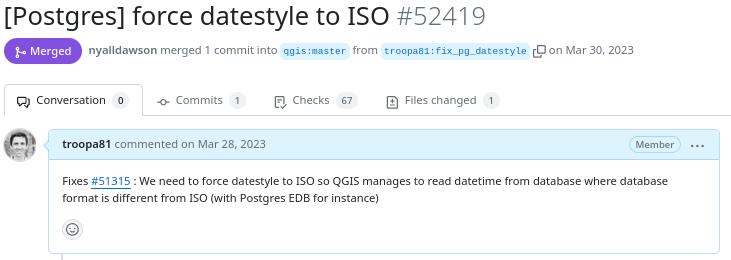
Example of proposed modification
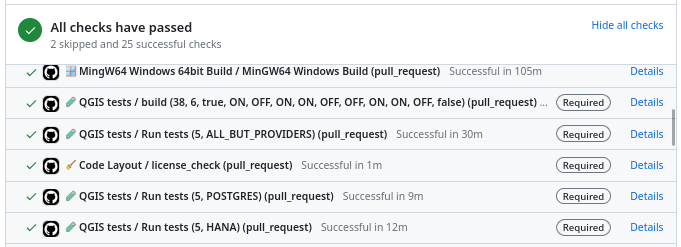
Result of automatic checks on a modification proposal
The first of these checks is to build QGIS on the different systems on which it is distributed (Linux, Windows, MacOS) by integrating the proposed modification. It is inconceivable to integrate a modification that would prevent the application from being built on one of these systems.
The testsThe first problem posed by a proposed modification is the following “How can we be sure that what is going to be introduced does not break what already exists?”
To validate this assertion, we rely on automatic tests. This is a set of micro-programs called tests, which only purpose is to validate that part of the application behaves as expected. For example, there is a test which validates that when the user adds an entry in a data layer, then this entry is then present in the data layer. If a modification were to break this behavior, then the test would fail and the proposal would be rejected (or more likely corrected).
This makes it possible in particular to avoid regressions (they are very often called non-regression tests) and also to qualify the expected behavior.
There are approximately 1.3 Million lines of code for the QGIS application and 420K lines of test code, a ratio of 1 to 3. The presence of tests is mandatory for adding functionality, therefore the quantity of test code increases with the quantity of application code.
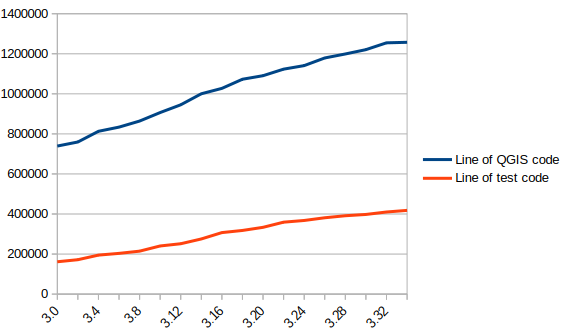
In blue the number of lines of code in QGIS, in red the number of lines of tests
There are currently over 900 groups of automatic tests in QGIS, most of which run in less than 2 seconds, for a total execution time of around 30 minutes.
We also see that certain parts of the QGIS code – the most recent – are better covered by the tests than other older ones. Developers are gradually working to improve this situation to reduce technical debt.
Code checksAnalogous to using a spell checker when writing a document, we carry out a set of quality checks on the source code. We check, for example, that the proposed modification does not contain misspelled words or “banned” words, that the API documentation has been correctly written or that the modified code respects certain formal rules of the programming language.
We recently had the opportunity to add a check based on the clang-tidy tool. The latter relies on the Clang compiler. It is capable of detecting programming errors by carrying out a static analysis of the code.
Clang-tidy is, for example, capable of detecting “narrowing conversions”.

Example of detecting “narrowing conversions”
In the example above, Clang-tidy detects that there has been a “narrowing conversion” and that the value of the port used in the network proxy configuration “may” be corrupted. In this case, this problem was reported on the QGIS issues platform and had to be corrected.
At that time, clang-tidy was not in place. Its use would have made it possible to avoid this anomaly and all the steps which led to its correction (exhaustive description of the issue, multiple exchanges to be able to reproduce it, investigation, correction, review of the modification), meaning a significant amount of human time which could thus have been avoided.
Peer reviewA proposed modification that would validate all of the automatic checks described above would not necessarily be integrated into the QGIS code automatically. In fact, its code may be poorly designed or the modification poorly thought out. The relevance of the functionality may be doubtful, or duplicated with another. The integration of the modification would therefore potentially cause a burden for the people in charge of the corrective or evolutionary maintenance of the software.
It is therefore essential to include a human review in the process of accepting a modification.
This is more of a rereading of the substance of the proposal than of the form. For the latter, we favor the automatic checks described above in order to simplify the review process.
Therefore, human proofreading takes time, and this effort is growing with the quantity of modifications proposed in the QGIS code. The question of its funding arises, and discussions are in progress. The QGIS.org association notably dedicates a significant part of its budget to fund code reviews.
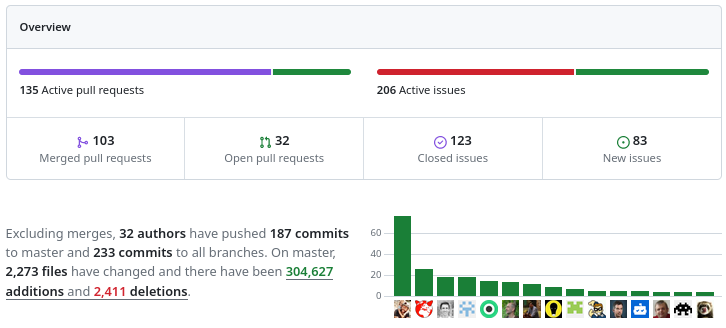
More than 100 modification proposals were reviewed and integrated during the month of December 2023. More than 30 different people contributed. More than 2000 files have been modified.
Therefore the wait for a proofreading can sometimes be long. It is also often the moment when disagreements are expressed. It is therefore a phase which can prove frustrating for contributors, but it is an important and rich moment in the community life of a free project.
To be continued !
As a core QGIS developer, and as a pure player OpenSource company, we believe it is fundamental to be involved in each step of the contribution process.
We are investing in the review process, improving automatic checks, and in the QGIS quality process in general. And we will continue to invest in these topics in order to help make QGIS a long-lasting and stable software.
If you would like to contribute or simply learn more about QGIS, do not hesitate to contact us at infos+qgis@oslandia.com and consult our QGIS support proposal.
-
sur A Year of CO2
Publié: 7 February 2024, 10:04am CET par Keir Clarke
The Washington Post has visualized how carbon dioxide builds up in the Earth's atmosphere over the course of one year. Using an interactive globe the Post has animated 12 months worth of atmospheric CO2 around the world.The interactive globe in Watch the Earth breathe for one year uses data from NASA satellites and ground measuring stations to show how CO2 accumulated around the world over the
-
sur Paul Ramsey: Building the PgConf.Dev Programme
Publié: 6 February 2024, 5:00pm CET
Update: The programme is now public.
The programme for pgconf.dev in Vancouver (May 28-31) has been selected, the speakers have been notified, and the whole thing should be posted on the web site relatively soon.
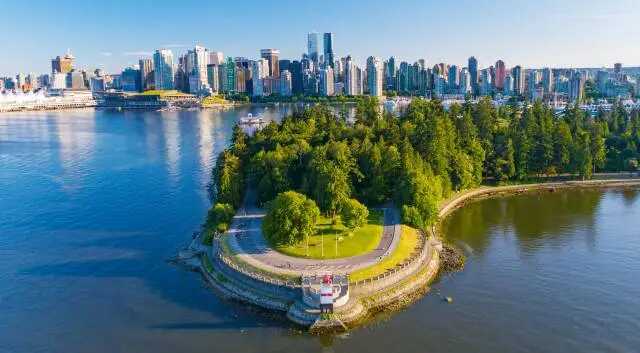
I have been on programme committees a number of times, but for regional and international FOSS4G events, never for a PostgreSQL event, and the parameters were notably different.
The parameter that was most important for selecting a programme this year was the over 180 submissions, versus the 33 available speaking slots. For FOSS4G conferences, it has been normal to have between two- and three-times as many submissions as slots. To have almost six-times as many made the process very difficult indeed.
Why only 33 speaking slots? Well, that’s a result of two things:
- Assuming no more than modest growth over the last iteration of PgCon, puts attendence at around 200, which is the size of our plenary room. 200 attendees implies no more than 3 tracks of content.
- Historically, PostgreSQL events use talks of about 50 minutes in length, within a one hour slot. Over three tracks and two days, that gives us around 33 talks (with slight variations depending on how much time is in plenary, keynotes or lightning talks).
The content of those 33 talks falls out from being the successor to PgCon. PgCon has historically been the event attended by all major contributors. There is an invitation-only contributors round-table on the pre-event day, specifically for the valuable face-to-face synch-up.

Given only 33 slots, and a unique audience that contains so many contributors, the question of what pgconf.dev should “be” ends up focussed around making the best use of that audience. pgconf.dev should be a place where users, developers, and community organizers come together to focus on Postgres development and community growth.
That’s why in addition to talks about future development directions there are talks about PostgreSQL coding concepts, and patch review, and extensions. High throughput memory algorithms are good, but so is the best way to write a technical blog entry.
Getting from 180+ submissions to 33 selections (plus some stand-by talks in case of cancellations) was a process that consumed three calls of over 2 hours each and several hours of reading every submitted abstract.
The process was shepherded by the inimitable Jonathan Katz.
- A first phase of just coding talks as either “acceptable” or “not relevant”. Any talks that all the committee members agreed was “not relevant” were dropped from contention.
- A second phase where each member picked 40 talks from the remaining set into a kind of “personal program”. The talks with just one program member selecting them were then reviewed one at a time, and that member would make the case for them being retained, or let them drop.
- A winnow looking for duplicate topic talks and selecting the strongest, or encouraging speakers to collaborate.
- A third “personal program” phase, but this time narrowing the list to 33 talks each.
- A winnow of the most highly ranked talks, to make sure they really fit the goal of the programme and weren’t just a topic we all happened to find “cool”.
- A talk by talk review of all the remaining talks, ensuring we were comfortable with all choices, and with the aggregate make up of the programme.
The programme committee was great to work with, willing to speak up about their opinions, disagree amicably, and come to a consensus.

Since we had to leave 150 talks behind, there’s no doubt lots of speakers who are sad they weren’t selected, and there’s lots of talks that we would have taken if we had more slots.
If you read all the way to here, you must be serious about coming, so you need to register and book your hotel right away. Spaces are, really, no kidding, very limited.
-
sur Oslandia: (Fr) Rencontres QGIS-fr – Grenoble 27 & 28 mars 2024
Publié: 6 February 2024, 12:03pm CET
Sorry, this entry is only available in French.
-
sur Mapping the Spread of War in the Middle East
Publié: 6 February 2024, 10:04am CET par Keir Clarke
The Hamas attacks in Israel on 7 October 2023 have led to increasing violence across much of the Middle East. In response to the Hamas attacks Israel launched a devastating and destructive campaign against Gaza. In Yemen the Houthi responded to Israel's attacks on Gaza by targeting ships in the Red Sea. The US & UK replied by targeting Houthi locations in Yemen. Israel and the US have
-
sur SourcePole: Designing QGIS Cloud QWC2 with CSS
Publié: 6 February 2024, 1:00am CET
In an earlier post, I showed how it is possible to permanently position a legend in the QGIS Cloud map as part of a QGIS Cloud Pro subscription. To achieve this, the appearance of the map view was changed using CSS. In this post, I will describe exactly what this is and how it works. The appearance of the QGIS Cloud Web Client is controlled via CSS. CSS stands for Cascading Style Sheets. -
sur Lutra consulting: New point clouds and mesh features in QGIS 3.36
Publié: 5 February 2024, 9:00am CET
QGIS 3.36 is round the corner and as usual, there will be several new exciting features with the new release. Below is the list of features our team has added to the new release. This was made possible by generous funding from clients.
Render point clouds as a surface in 2D map viewsPoint clouds are rendered as individual points by default. Depending on the zoom level and density of the points, you might not be able to get a full picture of the map.
Rendering points as surface enables you to have a better understanding of the data before trying to do any analysis or processing. This has been possible in 3D map views for a couple of QGIS releases, now we have added the functionality also in 2D map views.
The feature generates a surface using triangulation on-the-fly from the points using the same symbology. Below you can see the difference between a point cloud rendered as individual points and rendered as a surface:
Point clouds as individual points vs. as a TIN surface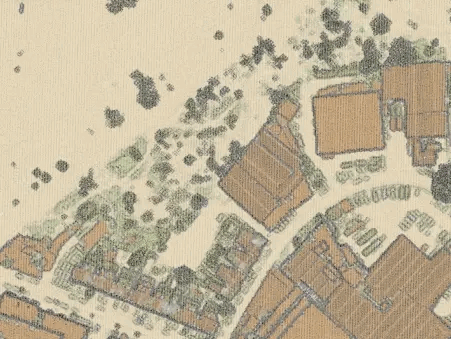
The good news is that rendering as a surface also works well with global map shading, allowing users to get a nice hillshade:
Point clouds as surface with hillshade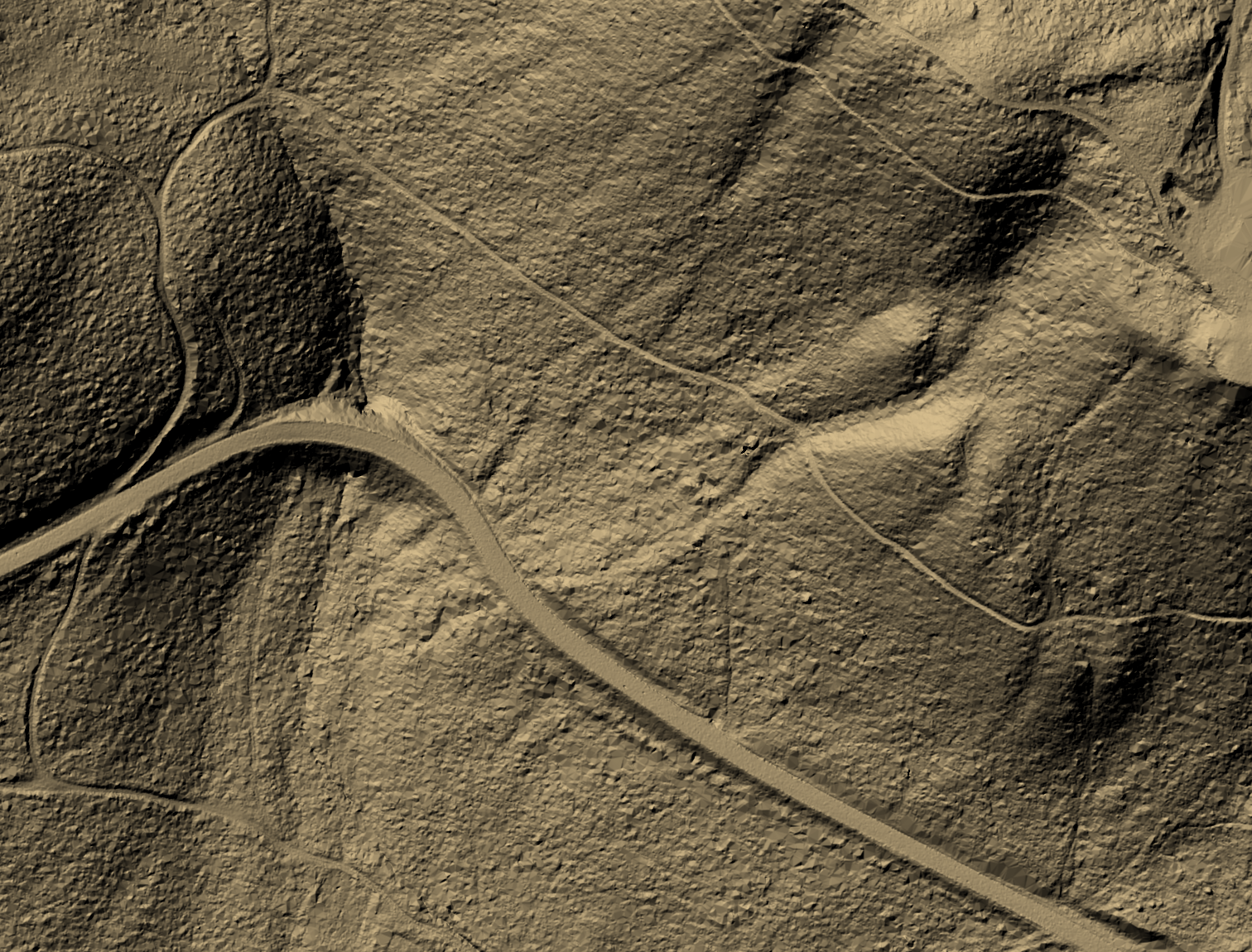
To enable this feature, you need to check the option for Render as a Surface (Triangulate) under the Layer Styling panel.
Settings to display point clouds as surface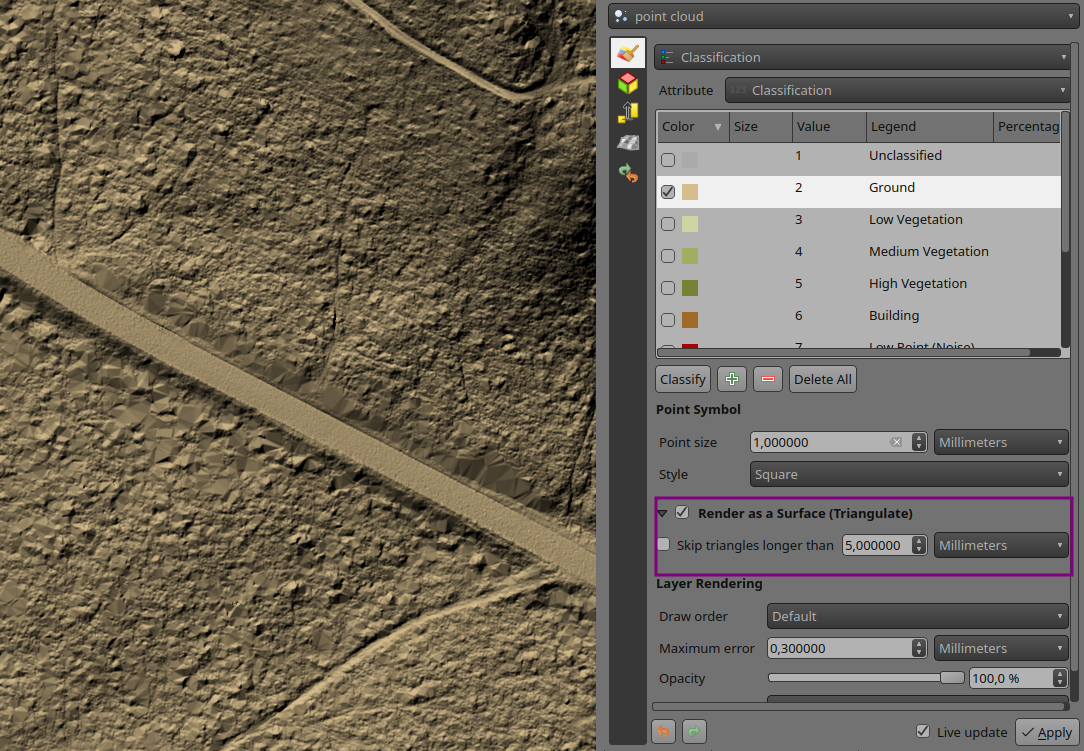
Pro-tip: if the on-the-fly rendering as a surface takes too long to render, try increasing the Maximum error: for example 0.6 mm instead of the default 0.3 mm.
Flexible styling of classesPreviously, point cloud data visualisation in QGIS was limited to rendering all points with a uniform size and opacity. This made it difficult to differentiate between different point classes and highlight specific features of interest. To address this issue, we have introduced a new feature that allows users to customise the point size and opacity for each point cloud data class. This provides a flexible way for visualising point cloud data, allowing users to highlight specific point classes, e.g. by increasing the point size.
Assigning size and opacity to each point cloud class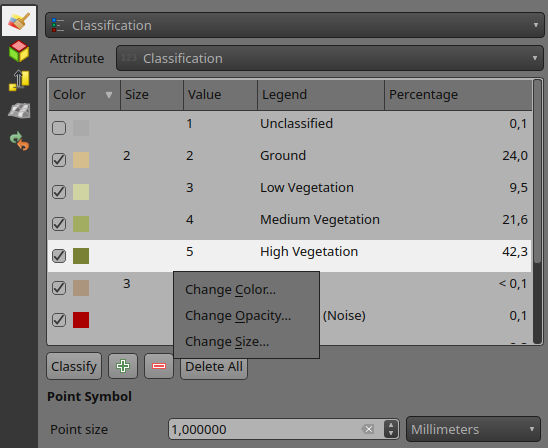
Point clouds with different sizes and opacity levels Set 3D map view extent in 2D map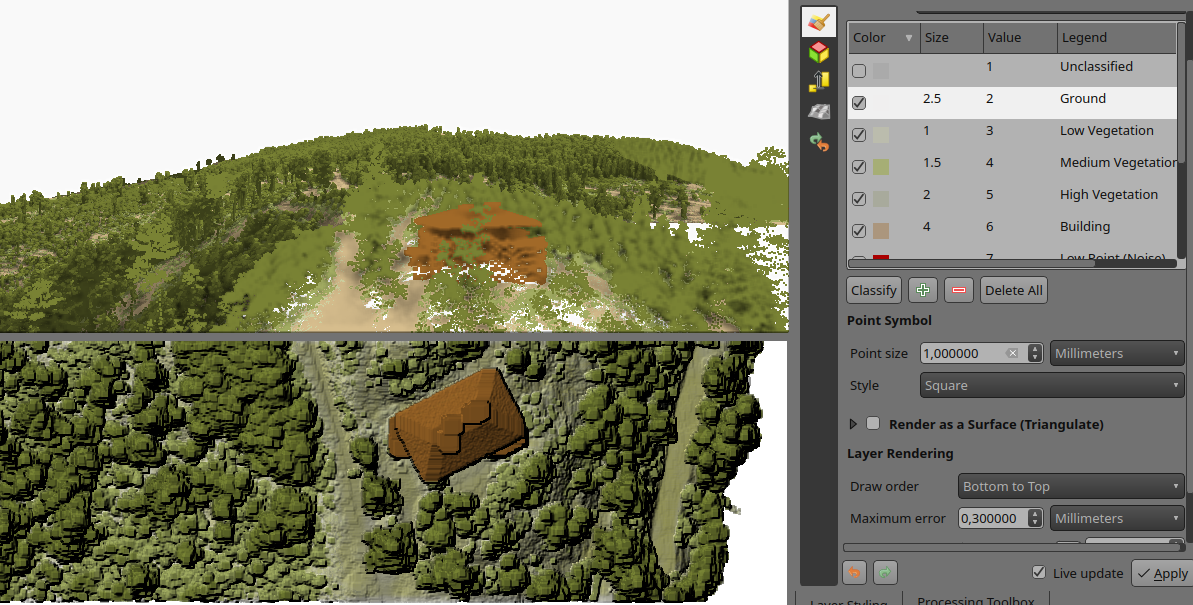
Effectively navigating and visualising large-scale 3D datasets can be challenging on PCs with limited resources. To address this issue, we introduced a new feature that allows users to interactively limit the 3D scene, enabling them to focus on specific areas of interest. This new feature, conveniently accessible from the toolbar, eliminates the need for tedious manual entry of coordinates for bounding boxes. Instead, users can simply drag and draw a box around the desired area, instantly restricting the 3D scene to that specific extent. This interactive approach significantly enhances the user experience and streamlines the process of exploring and analysing 3D data:
Interactive selection of 3D map scene from 2D map Python API for 3D views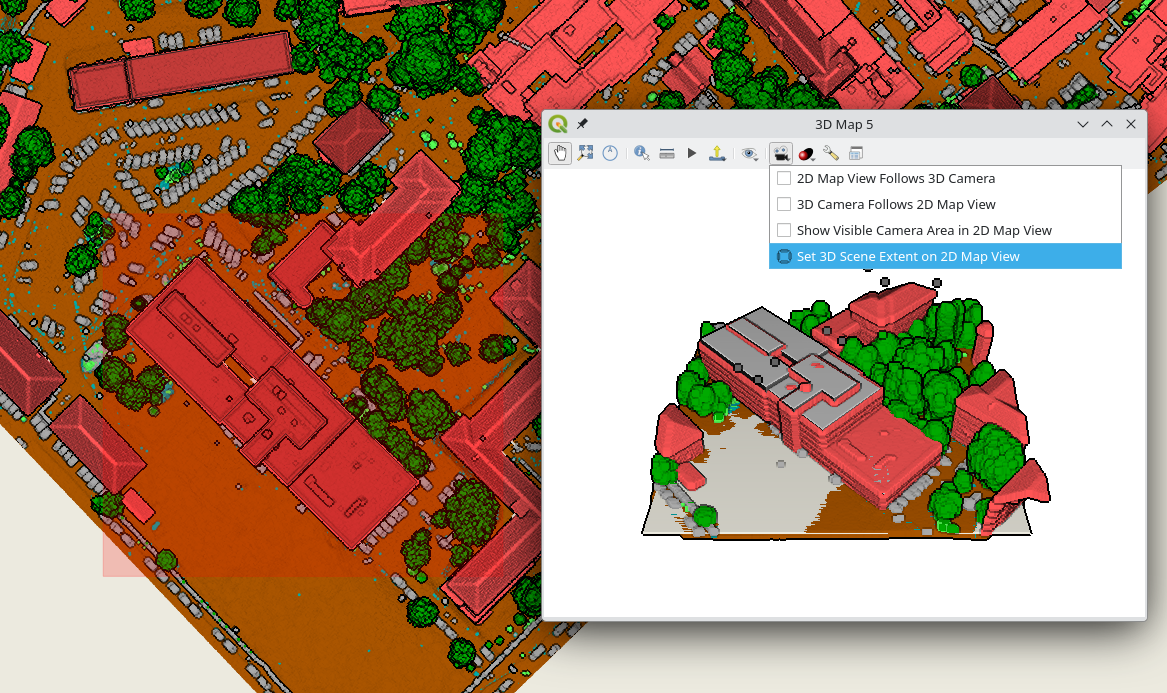
Creating and viewing 3D maps in QGIS with the correct camera location and angle, scene tilt, light, and other parameters can be a time-consuming and error-prone process. This is because it requires users to manually adjust these settings, often through trial and error. However, with the introduction of the new 3D map view API in QGIS, Python plugins can now automate this process, making it much easier, consistent and more efficient to create high-quality 3D maps that are visually appealing and informative.
# List all open 3D map canvases iface.mapCanvases3D() # [<qgis._3d.Qgs3DMapCanvas object at 0x7f23491b5e10>] canvas = iface.mapCanvases3D()[0]Now let’s try something more complicated:
# Let's change some settings! ms = canvas.mapSettings() ms.setEyeDomeLightingEnabled(True) ms.setBackgroundColor(QColor('beige')) ms.setTerrainMapTheme('dtm') ms.setFieldOfView(110) # Move the camera to look at specific map coordinates in layer's CRS cam = canvas.cameraController() mapPoint = QgsVector3D(-498175.92, -1205400.58, 210) worldPoint = ms.mapToWorldCoordinates(mapPoint) cam.setLookingAtPoint(worldPoint, 60, 45, 100) # Create four new 3D map views c1 = iface.createNewMapCanvas3D('South View') c2 = iface.createNewMapCanvas3D('West View') c3 = iface.createNewMapCanvas3D('North View') c4 = iface.createNewMapCanvas3D('East View') # Apply settings to all open 3D map views for canvas in iface.mapCanvases3D(): canvas.mapSettings().setEyeDomeLightingEnabled(True) # Define a camera pose to update the views' cameras pose = QgsCameraPose() pose.setCenterPoint(QgsVector3D(0, 210, 0)) # This is in 3D world coordinates pose.setDistanceFromCenterPoint(100) pose.setPitchAngle(75) # Tilt the camera by 75 degrees pose.setHeadingAngle(0) # Looking towards North c1.cameraController().setCameraPose(pose) pose.setHeadingAngle(90) # Towards East c2.cameraController().setCameraPose(pose) pose.setHeadingAngle(180) # Towards South c3.cameraController().setCameraPose(pose) pose.setHeadingAngle(270) # Towards West c4.cameraController().setCameraPose(pose) # We can set the 3D map views 2D extent to always match the main 2D canvas one # Our 3D views get updated while zooming/panning the main 2D canvas canvas = iface.mapCanvas() canvas.extentsChanged.connect(lambda :c1.mapSettings().setExtent(canvas.extent())) canvas.extentsChanged.connect(lambda :c2.mapSettings().setExtent(canvas.extent())) canvas.extentsChanged.connect(lambda :c3.mapSettings().setExtent(canvas.extent())) canvas.extentsChanged.connect(lambda :c4.mapSettings().setExtent(canvas.extent()))
Changing 3D view settings through Python More point clouds attributes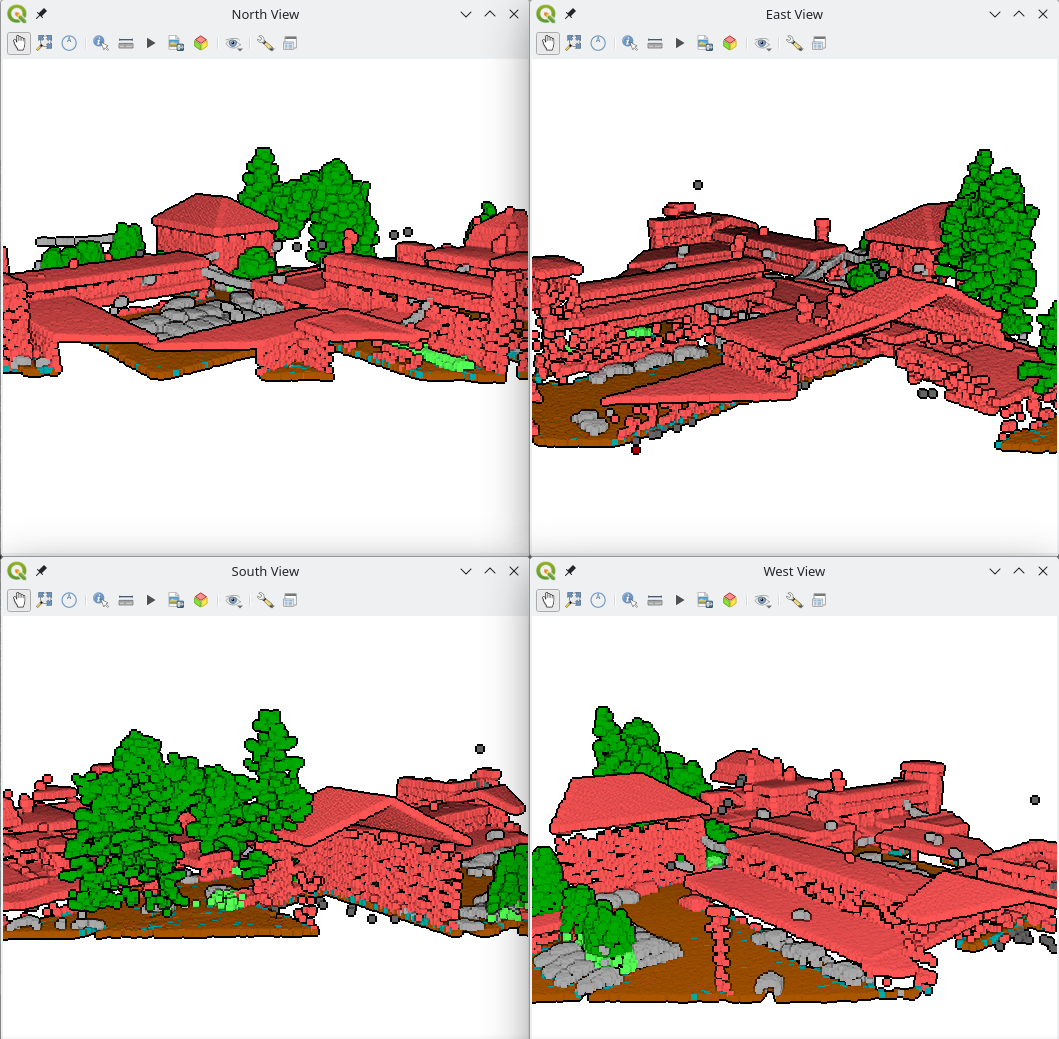
LAS/LAZ/COPC point clouds have a
classificationFlagsattribute that stores four types of information (Synthetic, Keypoint, Withheld, and Overlap) in a single value. This saves space, but it makes it difficult to use the information for styling or filtering, as you need to write complex expressions.To make it easier to use, we are following the approach introduced in PDAL 2.6: the
Performance enhancement for renderingclassificationFlagsattribute gets replaced with four separate attributes: Synthetic, Keypoint, Withheld, and Overlap. This will make it easier to include these attributes in styling and filtering expressions.To improve the performance of point cloud rendering in QGIS, we introduced a new caching system to minimise the need for repeated decompression of LAS node data while panning or zooming. This caching mechanism efficiently stores decompressed points for each unique combination of layer URI, node, requested attributes, filter extent, and filter expression. This enables rapid rendering of previously cached nodes, significantly enhancing the overall rendering performance in 2D and 3D maps.
Performance can vary depending on actual data, but on a local sample COPC file, it renders 7 times faster with this change.
Labels for mesh layerViewing mesh data has been possible through styling, plotting or using the Identify tool. But now you can also create labels on mesh surfaces or vertices similar to vector layers.
To display labels for your mesh data, simply open the styling panel and enable labels for:
- Labels on Vertices
- Labels on Surfaces
Label settings for mesh layers
Below is an example of mesh Z values at vertices (yellow) and mesh areas at cell centre (purple):
Example of labels on a mesh layer Want more changes in QGIS?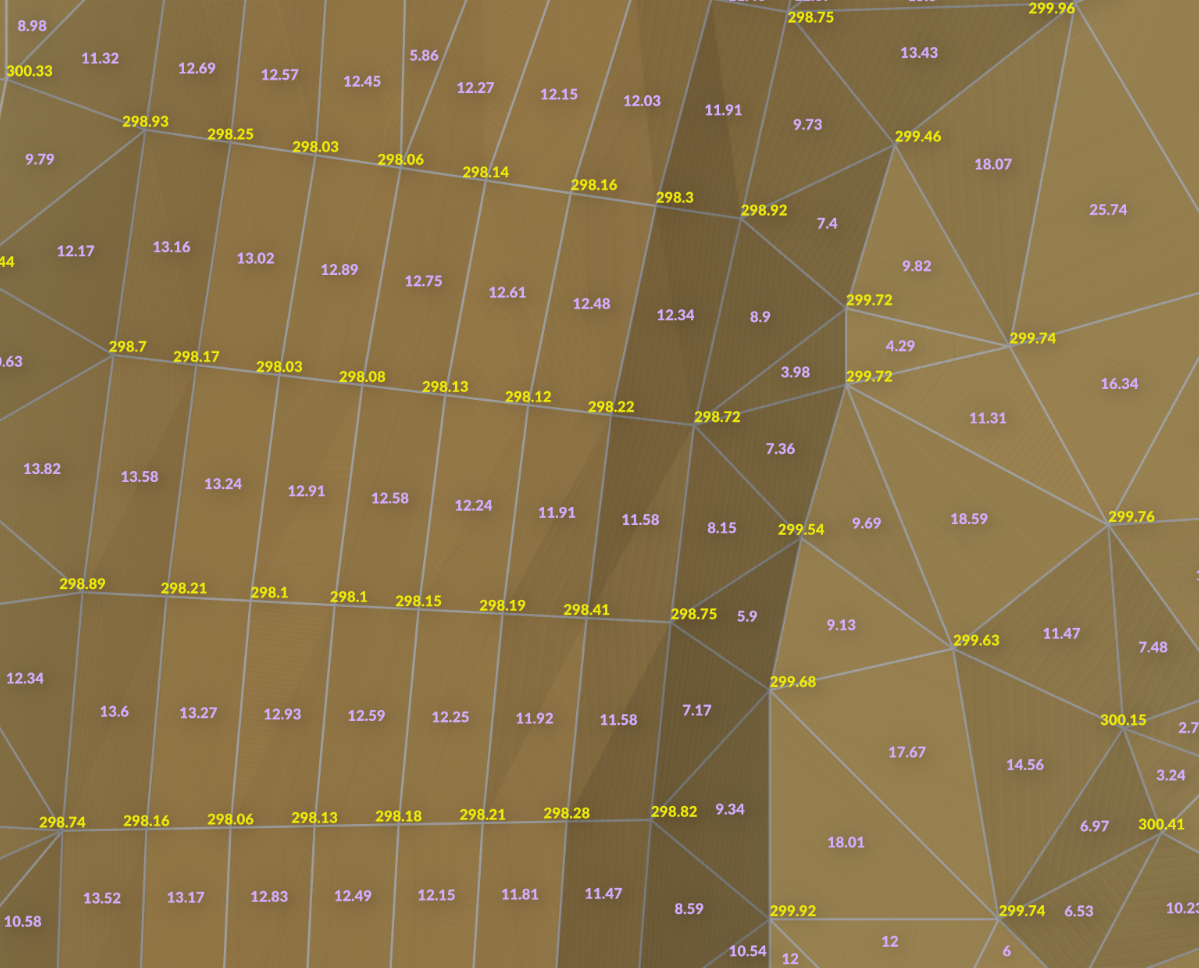
Do you want to see more improvements and new features in QGIS? Do not hesitate to contact us to discuss your requiremnets.
-
sur The 12 Best Daily Map Games
Publié: 5 February 2024, 2:13am CET par Keir Clarke
Ever since Josh Wardle released his very popular daily Wordle game in 2022 there has been a plethora of daily geography challenges which have been unleashed upon us, the geographically challenged public. The latest of these is Unzoomed.Every day Unzoomed presents you with the satellite image of a random city, which could be located anywhere in the world. All you have to do is name the city. You
-
sur Sean Gillies: Preseason running
Publié: 5 February 2024, 12:09am CET
My 32 week running season starts on February 19 and ends on September 29, at Bear Lake if everything goes right. My preseason running has been light on running because of various maladies. I strained my back at the end of December and just as I recovered from that I experienced some knee inflammation that was badly aggravated by running. For the past three weeks I've switched to weight training and chugging on the elliptical machines at a nearby gym. I'm doing 5x5s of squats, deadlifts, etc three times a week and 4-5 x 3 minute hard elliptical intervals once or twice a week. In between I've been walking briskly on the bike path or hiking on trails. I'd hoped to be actually running 6 hours a week by now, but am adjusting and getting some good workouts in. By February 19, I think I'll be able to take my interval workouts outside and switch from hiking to running without beating up on my knee.
-
sur Markus Neteler: Celebrating 18 Years of the Open Source Geospatial Foundation (OSGeo)
Publié: 4 February 2024, 3:42pm CET
The Open Source Geospatial Foundation (OSGeo) today celebrates its 18th anniversary, underscoring its pivotal role in the development of open source geospatial software and its impact on the world. Founded in 2006, OSGeo’s mission is to support and promote the collaborative development of open geospatial technologies and data. Over the years, it has become a cornerstone of the open geospatial community, fostering innovation, education and adoption of open source geospatial software worldwide.
The post Celebrating 18 Years of the Open Source Geospatial Foundation (OSGeo) appeared first on Markus Neteler Consulting.
-
sur Adam Steer: Route mapping using Strava, OpenStreetMap and QQIS
Publié: 4 February 2024, 12:16am CET
Tools used: QGIS 3.34.3 Prizren; Inkscape 1.2, a web browser Most of this is reasonably standard ‘get data, make maps’ – you can flick straight to cartographic magic for the un-standard parts if you want! The product Brief and design choices The brief for this map was to visualise a bicycle ride route – and… Read More »Route mapping using Strava, OpenStreetMap and QQIS -
sur Free and Open Source GIS Ramblings: Finding geospatial accounts on Mastodon
Publié: 3 February 2024, 10:54am CET
Besides following hashtags, such as #GISChat, #QGIS, #OpenStreetMap, #FOSS4G, and #OSGeo, curating good lists is probably the best way to stay up to date with geospatial developments.
To get you started (or to potentially enrich your existing lists), I thought I’d share my Geospatial and SpatialDataScience lists with you. And the best thing: you don’t need to go through all the >150 entries manually! Instead, go to your Mastodon account settings and under “Import and export” you’ll find a tool to import and merge my list.csv with your lists:

And if you are not following the geospatial hashtags yet, you can search or click on the hashtags you’re interested in and start following to get all tagged posts into your timeline:

-
sur Using AI to Detect Oil Spills
Publié: 3 February 2024, 10:09am CET par Keir Clarke
SkyTruth's Cerulean is a global monitoring system which uses AI to detect oil slick pollution in satellite imagery. It also identifies nearby vessels which might have been responsible for the pollution. The Cerulean interactive map identifies the locations of possible oil slicks that might go unnoticed by traditional methods, hopefully leading to faster response and cleanup efforts.Cerulean -
sur Car Commutes are Getting Longer
Publié: 2 February 2024, 10:13am CET par Keir Clarke
During the height of the Covid epidemic a number of visualizations were created to show the drop in road traffic and public transit use. As people were forced to quarantine and work from home our roads and transit networks saw an observable fall in traffic.For example Buzzfeed teamed up with Mapbox to create a series of interactive mapped visualizations showing the reduction in road traffic in
-
sur Markus Neteler: Using leafmap with actinia in a Jupyter notebook
Publié: 1 February 2024, 11:07pm CET
This blog post gives an overview of how to easily perform a geodata analysis of an online available dataset (here: a GeoTIFF file) with actinia and display the result in Leafmap browser-based.
The post Using leafmap with actinia in a Jupyter notebook appeared first on Markus Neteler Consulting.
-
sur gvSIG Team: Video on the Spatial Data Infrastructure of Albacete
Publié: 1 February 2024, 6:45pm CET
We share an institutional video about the Spatial Data Infrastructure of Albacete, developed with the gvSIG Suite, and that is having a significant impact both at the management level and in public service. A video that, in just over a minute, allows you to understand the scope that projects of this kind have.
-
sur gvSIG Team: Vídeo sobre la Infraestructura de Datos Espaciales de Albacete
Publié: 1 February 2024, 6:41pm CET
Compartimos un vídeo institucional sobre la la Infraestructura de Datos Espaciales de Albacete, desarrollada con la Suite gvSIG y que está teniendo un gran impacto tanto a nivel de gestión como a nivel de servicio público.
Un vídeo que en poco más de un minuto permite entender el alcance que tienen este tipo de proyectos:
-
sur Enhancing capabilities by adopting Standards for emerging technologies
Publié: 1 February 2024, 3:34pm CET par Simon Chester
The pace of technological change is increasing as new products are made available, with ground-breaking innovation often resulting in disruptive change. Coupled with this technological change is the explosion of data from new sources relevant to the geospatial domain, including imagery, sensor feeds, and real-time tracking data. Organisations in the public, private, and third sectors must remain agile and resilient to thrive in this emerging landscape.
Adoption of new technological innovations into large, controlled IT enterprises can be challenging, because of associated costs, integration challenges, and processes. The Open Geospatial Consortium (OGC) is a standards body that, for the last 30 years, has been working to innovate and create community driven Standards in the geospatial domain. These Standards are designed to ensure data and services are Findable, Accessible, Interoperable, and Reusable (FAIR), whilst ensuring that the developed Standards are suited to the target domain and straightforward to adopt. FAIR principles can also be applied to the integration of new technologies into large enterprises, to ensure that interaction patterns with new technologies are known, and the components offering the technology are interchangeable.
Standardising AI/ML Training DataAn OGC Standard supporting a decidedly recent phenomenon is the OGC Training Data Markup Language for Artificial Intelligence. Artificial Intelligence (AI), Machine Learning (ML), and associated applications have been the subject of research since the 1990s and earlier. However, it is only recently that the necessary computational power and, importantly, the data to train AI models, have been available. Training data is the lifeblood of AI. As the old axiom goes, “garbage in, garbage out” and AI models are no different. Additionally, AI models and their inner workings can be opaque with the ‘black box’ effect on the inputs and outputs. Therefore, standardising the management of training data is important for scientific endeavours, not least for repeatability but also the FAIR principles.
In addition to utilising AI to do typical geospatial and imagery work, we are also seeing AI used to create simulated data for training – or even nefarious purposes. Recording information about the input data to ML models in a standardised manner assists with the management and authenticity of outputs. By way of example, the image below is a completely fictional landscape created using some training data of a UK city and a Generational Adversarial Network (GAN). Standardising the training dataset metadata enables others to create their own simulated data with the same feel, whilst understanding the input parameters and likely outcomes.
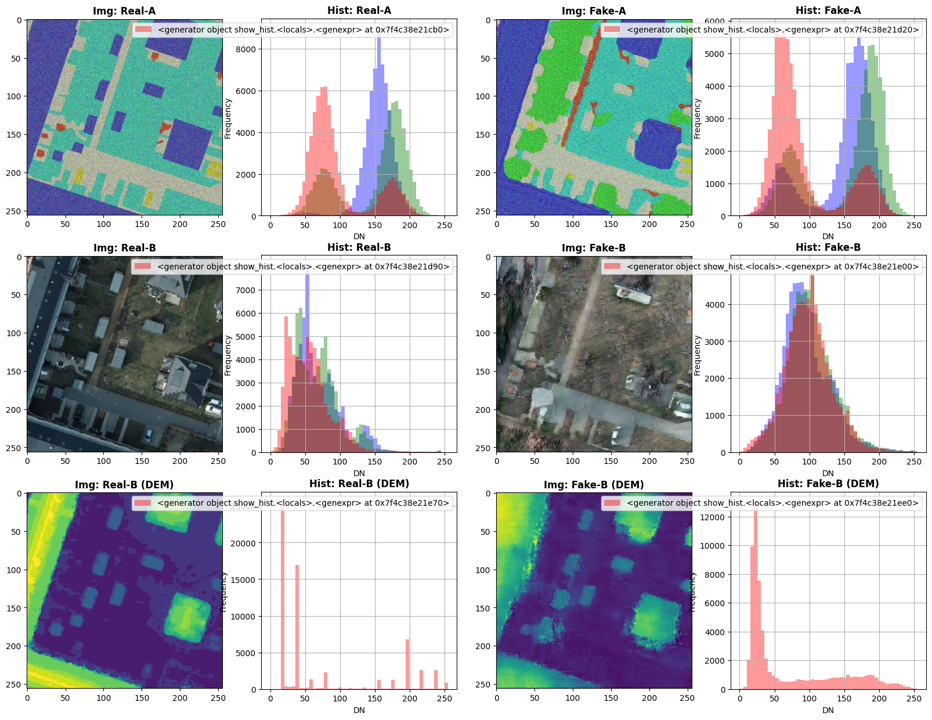 Quantum Computing
Quantum Computing
While AI/ML is one current technology trend that offers a great example of how the technological landscape can change overnight, like with the 2022 release of ChatGPT, another disruptive technology set that has been on the horizon for the past few decades is Quantum Computing.
Although not likely to be a complete replacement for classical computing, quantum computing potentially offers an exponential speed-up to solving problems that are difficult for classical computing to manage. This is not necessarily because quantum computers are faster in the super computing sense, it is that their approach to solving problems is fundamentally different to classical computing. Classical computing operates by manipulating bits that are either in a 1 or a 0 position, chaining enough of these operations together enables computing machines to do useful work. Quantum computers are different in that their fundamental building block is the qubit that can exist in a superposition of both 1 and 0. There are also different types of quantum computing, circuit-based quantum computers are those that can do the headline-grabbing factoring of large numbers and therefore will be able to crack RSA encryption (which is built on the principle that factoring large numbers is hard). The second type of quantum computing is quantum annealing or adiabatic quantum computing that lends itself to solving optimisation problems.
The geospatial domain is full of optimisation problems, a typical example is the Travelling Salesperson Problem where a salesperson is required to visit several geographically dispersed locations with the constraint that they must visit each location once and only once while completing the route with the lowest cost (shortest distance, fastest drivetime). Another optimisation style problem is the Structural Imbalance Problem where an algorithm attempts to split a social network (often with a geospatial element) into friendly groups where, in a balanced graph, all relationships within the groups are friendly, while all the relationships between the groups are hostile. In the real world it is not usually possible to get a perfect result. This highlights relationships that do not fit the model (strained), which can be a predictor of conflict.
Practical quantum computing is now possible, there are several providers such as Rigetti, D-Wave, and the likes of Amazon, Google, and Microsoft who are starting to make their quantum computing resources available via the cloud. Although none of the quantum computers are sizable enough to provide a quantum advantage in the optimisation space, new quantum computers are planned that will be able to. As a stop gap, there are classical/quantum hybrid approaches that offer advantages of quantum computing but can solve practical problems.
As with many emerging technologies, the interaction patterns for these new quantum computers and hybrid solvers have not yet been standardised and are bespoke down to the hardware. The D-Wave system with the Ocean SDK for quantum computing has patterns and calls that cover many of the optimisation style calls that one could use a quantum solver for. Perhaps the next move for the OGC is to understand the impact of quantum computing through a Domain Working Group to support geospatial optimisation-style problems through a group dedicated to quantum computing and the opportunities it affords.
Where next?Keeping a close eye on emerging technologies and getting ahead of the curve, in terms of adoption, enables Standards to be created that assist with integration and can provide meaningful change to organisations. The technology is the exciting piece and can offer untold opportunities, and the quicker and smoother these technologies can be adopted into the organisations that make use of them, the better the return for businesses, users, and citizens. Good, domain-driven Standards-definition is key to a FAIRer technology landscape.
A quantum computing ad-hoc session will be held at 15:30 CET on March 27 , 2024, as part of the 128th OGC Member Meeting in Delft, Netherlands, to discuss the possibility of Standardisation in the Quantum Computing domain.
The overall theme of the meeting is “Geo-BIM for the Built Environment” and will additionally include a Geo-BIM Summit, a Land Admin Special Session, an Observational Data Special Session, a Built Environment Joint Session, a meeting of the Europe Forum, as well as the usual SWG & DWG meetings and social & networking events. Learn more and register here.Sam Meek is the Chief Technology Officer at Helyx Secure Information Systems Ltd.
The post Enhancing capabilities by adopting Standards for emerging technologies appeared first on Open Geospatial Consortium.
-
sur Mapping Gaza's Destroyed Buildings
Publié: 1 February 2024, 2:25pm CET par Keir Clarke
The Guardian has used satellite imagery and open-source evidence to map the mass destruction of buildings and land in Gaza. A story-map in How war destroyed Gaza’s neighbourhoods guides you through satellite imagery of three neighborhoods in Gaza (Beit Hanoun, al-Zahra and Khan Younis) documenting the destruction of civilian infrastructure by Israel. The destroyed buildings in the -
sur Mapping Oil and Gas Emissions
Publié: 1 February 2024, 9:31am CET par Keir Clarke
The Oil Climate Index plus Gas (OCI?) is an open-source tool that estimates and compares the life-cycle greenhouse gas (GHG) emissions of individual oil and gas resources around the world. In estimating the total emissions of individual oil and gas assets OCI? calculates emissions across the entire life cycle of oil and gas, from production and processing to transportation and end-use. The
-
sur GeoServer Team: A Comprehensive Guide to Publishing a Shapefile in GeoServer
Publié: 1 February 2024, 1:00am CET
GeoSpatial Techno is a startup focused on geospatial information that is providing e-learning courses to enhance the knowledge of geospatial information users, students, and other startups. The main approach of this startup is providing quality, valid specialized training in the field of geospatial information.
( YouTube | LinkedIn | Facebook | Reddit | X )
A Comprehensive Guide to publishing a Shapefile in GeoServerIn this session, we want to talk about “How to Publish Shapefile in GeoServer” comprehensively. If you want to access the complete tutorial, simply click on the link
IntroductionThe Data section contains configuration options for all the different data-related settings that GeoServer uses to access and publish geospatial information. It also describes how to load, manage, and publish data in the GeoServer web interface. Each section contains the specific pages that provide add, view, edit, and delete capabilities.
Note. In this blog post, we used GeoServer version 2.20.0.
WorkspacesA Workspace serves as a means to group and organize similar layers together. It enables you to associate multiple layers and stores with a single workspace. Each workspace can be managed independently, with its own security policies, data administrator, and web services. Generally, a workspace is created for each project, along with its corresponding stores and layers.
Add a workspaceTo create a new workspace, navigate to Data > Workspaces page. Click on the Add new workspace, then you have to enter a
Workspace NameandNamespace URI.- Workspace Name: It is an identifier describing your project. It must not exceed ten characters or contain spaces (due to use as an XML “prefix” when downloading content).
- Namespace URI: URI stands for Uniform Resource Identifier, is a formal system for uniquely identifying resources, and consists of two types: URL and URN. A Namespace URI does not need to point to an actual location on the web and only needs to be a unique identifier.
- Default Workspace: This setting is useful when you only have one workspace defined. The setting allows users to communicate with the web service using just the layer name (rather than prefix:layer name required when managing hundreds of workspaces). select the Default Workspace checkbox to assign this as your default workspace.
- Sometimes the same feature type needs to be published multiple times with a different mapping and with the same name. This can be done in GeoServer using Isolated Workspaces functionality.
Press the Submit button to save your new workspace.
Edit a workspaceTo view or edit a workspace, click on the Workspace name, then a workspace configuration page will be displayed.
- For Settings, select the Enabled checkbox to customize the settings and contact details for the workspace level. This allows you to define an introduction to your workspace, and override the global settings for your workspace.
- Use the checkbox located next to each service to override the Global Settings for the associated service. Once enabled, clicking on the Services link will open the settings page for the service, allowing default values for the service title, abstract, and other details to be supplied.
- The Security tab allows to set data access rules at the workspace level. To create/edit the workspace’s data access rules, check/uncheck checkboxes according to the desired role.
To remove a workspace, select it by clicking the checkbox next to the workspace. Multiple workspaces can be selected, or all can be selected by clicking the checkbox in the header. Click the Remove selected workspace(s) link. Now you will be asked to confirm or cancel the removal.
Pressing OK removes the selected workspace(s).
StoresThe Stores manage the connection parameters between GeoServer and the data sources where your spatial data reside. They provide a mechanism for GeoServer to connect to various data repositories, including file systems, databases, and cloud storage services. Each store represents a unique data source and has its configuration settings.
Add a storeTo add a Store, navigate to Data > Stores page. Click on Add new store, then you will be prompted to choose a data source. GeoServer supports several different data formats, but they are classified into three types: “Vector data”, “Raster data”, and “Cascaded Services”.
- Vector data formats include Shapefile, GeoPackage, PostGIS, and Properties. The most common and widely used option is Shapefile.
- Raster data formats include ArcGrid, GeoPackage, GeoTIFF, ImageMosaic, and WorldImage. The most used and well-known are the GeoTIFF and the WorldImage. GeoTIFF is a spatial extension of the “TIFF” format and tags image files with geographic information. A WorldImage is similar, but georeferencing information is saved in an external text file.
- Cascaded Services include WFS, WMS, and WMTS. GeoServer can proxy a remote Web Map Service and Web Map Tile Service and load it as a store in GeoServer.
Other data sources are supplied as GeoServer extensions. Extensions are downloadable modules that add functionality to GeoServer. Click the appropriate data source to configure the store, because the connection parameters vary depending on data format.
To create a Shapefile data store, follow these steps:
- Select the desired workspace from the drop-down menu.
- Enter the
Data Source Name. Make sure the “Enabled” checkbox is selected. Otherwise, access to the store along with all the datasets defined, will be disabled for it. - In the “Shapefile location”, click on the Browse link to define the location of the shapefile.
- The DBF file format has a field for character encoding, but it doesn’t always accurately indicate the actual encoding used. As a result, it is important to specify the DBF character set correctly when decoding strings to ensure accurate interpretation of the data.
When finished, press the Save button. Now it will automatically redirect to the Add New Layer page, which will be completely described in the Layer section. Next, we will explain how to edit and remove the store.
Edit a storeTo view or edit a store, click on the Store name. A Store configuration page will be displayed. The exact contents of this page depend on the specific format of the Store. After your configuration is modified, press the Save button.
Remove a storeTo remove a Store, click the checkbox next to the store. Multiple stores can be selected, or all can be selected by clicking the checkbox in the header. Click the Remove selected stores. You will be asked to confirm the removal of the configuration for the store(s) and all resources defined under them.
Pressing OK removes the selected Store(s), and returns to the Stores page.
LayersFrom the administration interface, navigate to the Data > Layers page. On this page, you can view and edit existing layers, add a new layer, or remove a layer. It also shows you the type of layers in the Type column, with a different icon for vector and raster layers, according to the geometry shape. The Title, Workspace, and Store values of each layer are shown.
Add a layerClicking the Add a new layer, brings up a New Layer Chooser panel. The menu displays all currently enabled stores. If you want to add a new layer for a published resource, click on Publish Again. Note that when republishing the name of the new layer may have to be modified to avoid conflict with an existing layer.
The beginning sections (Basic Resource Info, Keywords, and Metadata link) provide metadata, specifically textual information that makes the layer data easier to understand and work with. The metadata information will appear in the capabilities documents which refer to the layer. These options are:
- Name: The identifier used to reference the layer in WMS requests that are filled automatically. Note that for a new layer for an already-published resource, the name must be changed to avoid conflict.
- Enabled: A layer that is not enabled won’t be available to any kind of request, it will just show up in the configuration and in REST config.
- Advertised: A layer is advertised by default. A non-advertised layer will be available in all data access requests (for example, WMS GetMap, WMS GetFeature) but won’t appear in any capabilities document or the layer preview.
- Title: The human-readable description to briefly identify the layer to clients that filled automatically. GeoServer provides an item for the title and abstract and describes how to specify metadata in different languages. By default, it’s disabled and can be enabled from the i18n checkbox.
- Abstract: It describes the layer in detail.
- Keywords: List of short words associated with the layer to assist catalog searching. To add a new keyword, enter your keyword, then press the Add Keyword button to add it.
- Metadata & Data Links: It allows linking to external documents that describe the data layer. The
Typeinput provides a few example types, like FGDC or ISO19115, but allows any other type to be declared.Formatprovides its mime type, whileURLpoints to the actual metadata.
A Coordinate Reference System (CRS) defines how georeferenced spatial data relates to real locations on the Earth’s surface. GeoServer needs to know the CRS of your data. This information is used for computing the latitude/longitude bounding box and reprojecting the data during both WMS and WFS requests.
- Native SRS: Specifies the coordinate system the layer is stored in. Clicking the projection link displays a description of the SRS.
- Declared SRS: Specifies the coordinate system GeoServer publishes to clients.
- SRS Handling: Determines how GeoServer should handle projection when the two SRSes differ. Possible values are:
- Force declared: This is the default option and normally the best course of action. Use this option when the source has no native CRS, has a wrong one, or has one matching the EPSG code.
- Reproject from native: This setting should be used when the native data set has a CRS that does not match any official EPSG. E.g.
Lambert Conformal Conic to WGS84. - Keep native: This is a setting that should be used in very rare cases. Keeping native means using the declared one in the capabilities documents, but then using the native CRS in all other requests.
The Bounding Box determines the extent of the data within a layer. It includes two items: “Native Bounding Box” and “Lat/Lon Bounding Box”. Generate the bounds for the layer by pressing the Compute from data and Compute from native bounds button in the Bounding Boxes section.
Vector layers have a list of the “Feature Type Details”. These include the
PropertyandTypeof a data source. Remember that, if you want to change your data by ArcGIS or QGIS, like add or remove features or fields, or edit the attribute table contents, there is no need to create a layer again in the GeoServer, just press the Reload feature type, so your layer will be updated.Remember that GeoServer, by default, publishes all the features that are currently available in the layer. However, if you wish to limit the features to a specific subset, you can achieve this by specifying a CQL filter in the configuration. Upon completing the layer configuration, finalize the process by pressing the Save button. This action will create the layer based on the specifications you have provided.
Edit a layerTo view or edit a layer, click on the Layer Name from the Layer page. A layer configuration page will be displayed. After your configuration is modified, press the Save button.
Remove a layerTo remove a layer, select the checkbox next to the layer. Multiple layers can be selected, or all can be selected by clicking the checkbox in the header. By clicking the Remove selected layers link, you will be asked to confirm the removal of the configuration for the layer(s) and all resources defined under them.
Press OK removes the selected layer(s), and returns to the Layers page.
-
sur The Five Minute Fantasy Map Maker
Publié: 31 January 2024, 9:54am CET par Keir Clarke
This is Middle England an interactive fantasy map which I made in under 5 minutes, using World Anvil. Middle England is a sacred a magical realm steeped in the ancient lores of rune-crafting, dream-weaving and alchemy.World Anvil bills itself as a "Worldbuilding Toolset & RPG Campaign Manager Created for Writers, Gamemasters & Creatives". One of the tools in this tool-set is a map
-
sur gvSIG Team: Manual gvSIG Desktop 2.6
Publié: 30 January 2024, 11:23am CET

La última versión de gvSIG Desktop además de considerables mejoras ha traído un cambio en la interfaz del programa, modernizando el aspecto de los iconos utilizados.
Hoy os compartimos el manual completo en PDF de gvSIG Desktop 2.6, que es una guía estupenda para los nuevos usuarios y a los que lleváis tiempo trabajando con gvSIG Desktop os puede ser útil para familiarizaros con los nuevos iconos.
Y aunque seréis los menos, para los que queráis seguir utilizando el juego de iconos «clásico» podéis instalarlo desde el Administrador de Complementos.
El manual de gvSIG Desktop 2.6 se puede descargar en este enlace.
-
sur Using AI to Age OSM Maps
Publié: 30 January 2024, 9:52am CET par Keir Clarke
The screenshot above, from the SynthMap Demo, shows a side-by-side view of an Open Street Map and an AI generated map of the same OSM data changed to look like a 19th Century era Ordnance Survey map. This Victorian cosplaying map (on the right) was developed by Zekun Li, of the University of Minnesota, who trained an AI to transform OpenStreetMap data into images that resemble the
-
sur 3liz: Sortie de Lizmap Web Client 3.7
Publié: 29 January 2024, 12:00pm CET
Lizmap Web Client 3.7Nous sommes heureux d'annoncer la sortie de Lizmap Web Client 3.7, la nouvelle version majeure de l'application.
Financeurs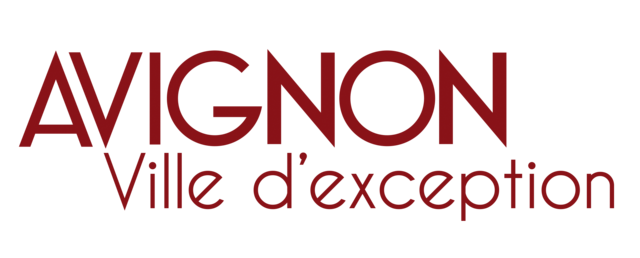
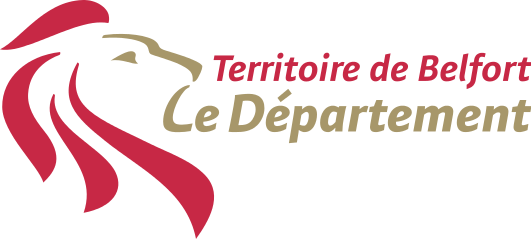
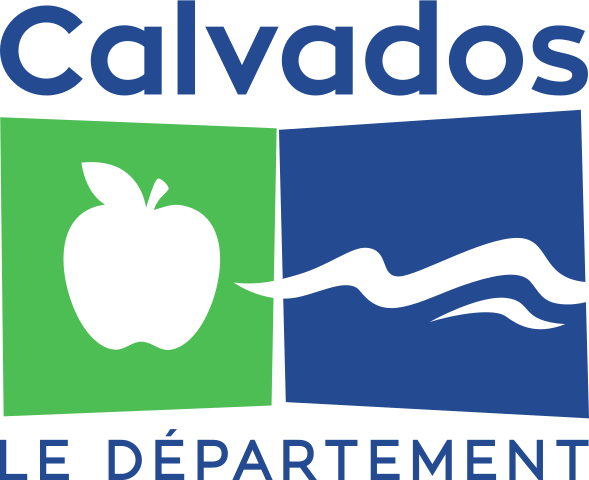
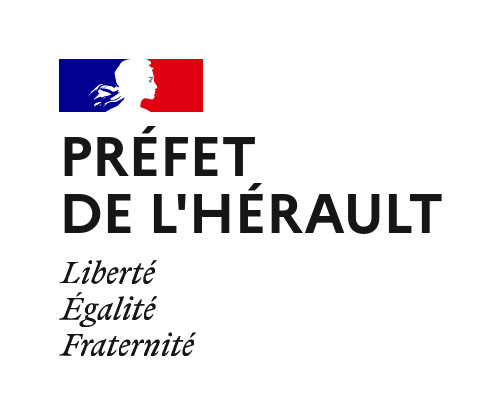
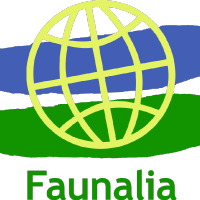


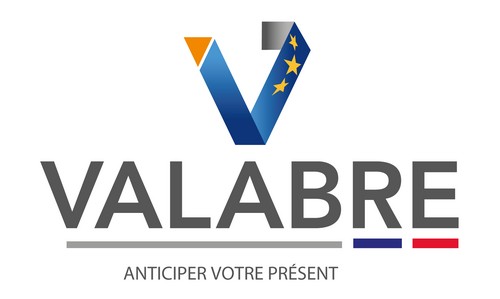
- Geolab.re
- Parc naturel régional du Haut-Jura
- Portes du Soleil
- SDEC Energie
- Tenergie
- Terre de Provence Agglomération
- Vaucluse province in France
- WPD
Il est désormais requis d'avoir un QGIS serveur minimum 3.22. Cependant, nous recommandons fortement d'utiliser une version LTR plus récente, comme la version 3.28 ou bien même la prochaine version LTR 3.34. Consultez la feuille de route QGIS.
Pour utiliser pleinement de cette version 3.7, n'oubliez pas de mettre à jour votre extension Lizmap dans QGIS bureautique. Nous avons écrit un article dédié sur cette nouvelle version.
Fonctionnalités Refonte du thème par défautUn nouveau thème est disponible, apportant une interface utilisateur plus à jour. Il est désormais également plus facile de mettre à jour ces couleurs, car cela a été centralisé en utilisant seulement quelques variables CSS.
Dataviz
Dans l'extension, vous pouvez trouver de nouveaux paramètres pour chaque graphique. Par exemple, il est possible de définir deux titres différents, selon l'endroit où le graphique est affiché : soit dans le panneau principal de visualisation de données, soit dans une popup.
La principale nouvelle fonctionnalité est la mise en page par Glisser&Déposer. Nous nous sommes inspirés de la fonctionnalité native de QGIS concernant la Mise en page du formulaire Glisser-Déposer. Dans Lizmap, lorsque vous avez de nombreux graphiques à afficher, vous pouvez les organiser en onglets ou conteneurs.
Dans QGIS, voici un exemple de mise en page des graphiques :
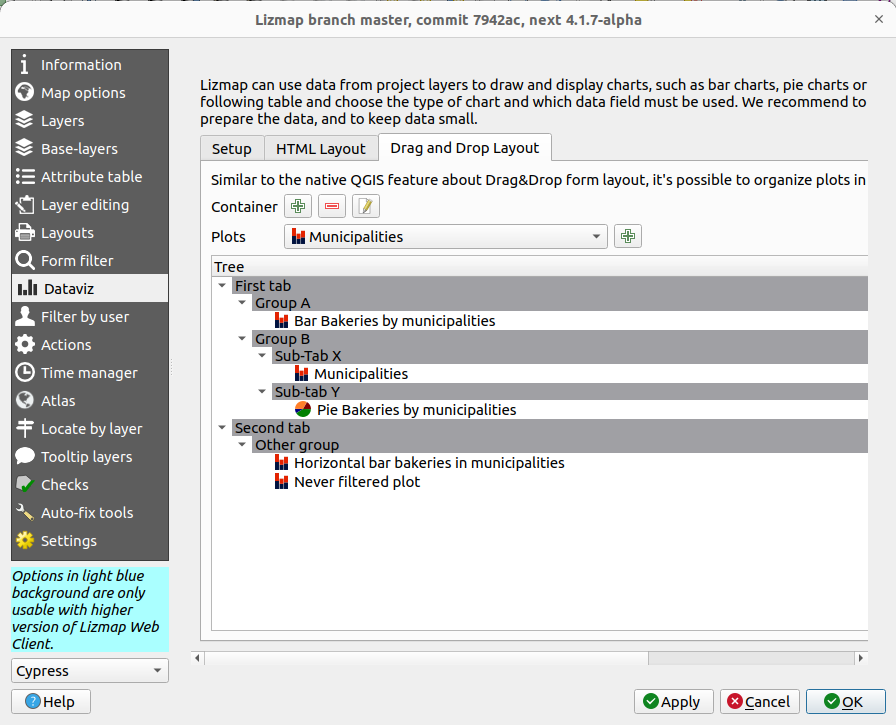
et voici le résultat dans Lizmap Web Client :
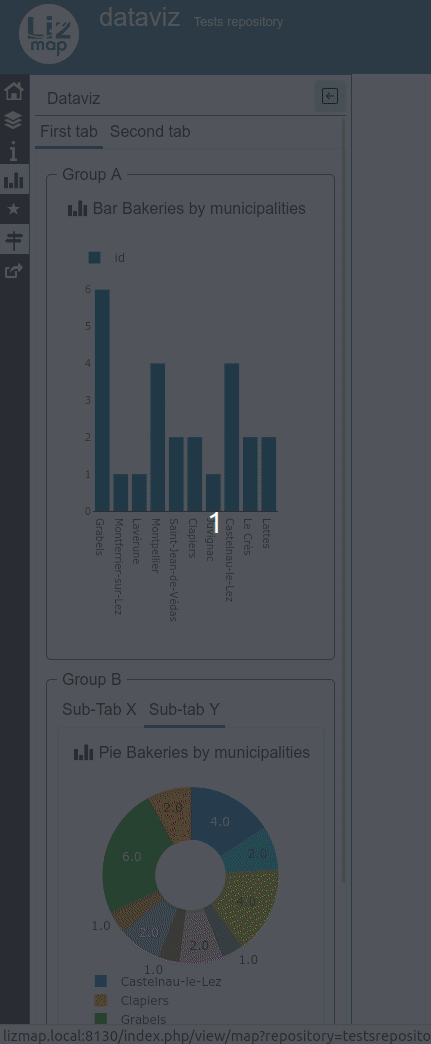
Ces nouvelles fonctionnalités ont été financées par DDTM 34.
LégendeC'est l'une des fonctionnalités les plus visibles et attendues de Lizmap, il est possible de cocher/décocher les éléments de la légende individuellement.
Nous avons également revu la façon dont Lizmap gérait les couches de base dans le projet (fonds de carte). Les utilisateurs sont désormais invités à utiliser le groupe
baselayersdans la légende pour définir les couches de base. À l'aide d'une version à jour de l'extension, vous pouvez utiliser l'onglet "Fonds" pour vous aider.Nous avons également décidé d'utiliser le même comportement que dans QGIS Bureautique concernant la manière dont les utilisateurs manipulent la légende. Désormais, lors de l'activation d'un groupe, toutes les couches incluses dans ce groupe ne seront pas activées automatiquement.

Pour inclure ces nouvelles fonctionnalités, beaucoup de re-factorisation du code Javascript ont été réalisées sous le capot, financées par le département du Calvados et Le Grand Narbonne.
Mise en pageDans l'extension, un nouveau panneau sur les mises en page a été ajouté. Vous êtes invités à jeter un œil à ces nouveaux paramètres. Il est possible de :
- définir par mise en page si nous l'activons ou non sur l'interface Web. Avant, il était seulement possible de choisir d'activer ou non l'impression à l'échelle des propriétés du projet
- définir les groupes Lizmap qui sont autorisés à accéder à chaque mise en page
- définir une icône personnalisée lorsque la mise en page est basée sur un atlas.
- réduire le nombre de formats disponibles. Plus besoin de Javascript pour avoir une interface simplifiée
- ...

Ces nouvelles fonctionnalités ont été financées par DDTM 34.
Au cours de ce travail, nous avons déprécié l'extension QGIS serveur AtlasPrint. Lizmap utilise désormais la fonctionnalité native de QGIS Serveur pour exporter en PDF un élément de l'atlas.
Edition WebDAVFaunalia a contribué directement au code source de Lizmap en ajoutant le support WebDAV dans le formulaire d'édition lorsque l'outil d'édition a été défini sur stockage WebDAV. Vous pouvez consulter la documentation en ligne. Cela fonctionne également lors de l'affichage de la popup.
Relations entre les tablesLe support des relations 1-n entre tables a été amélioré lors de l'édition de ces couches :
- Ajout d'une nouvelle entité "enfant" depuis la popup d'un parent
- Affichage du tableau des entités "enfants" depuis le formulaire d'édition d'un parent
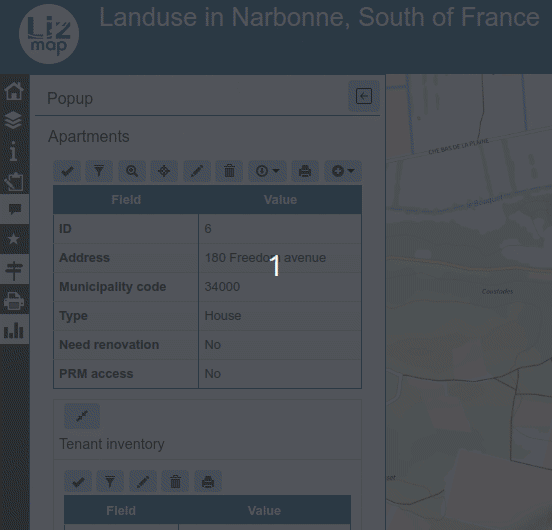
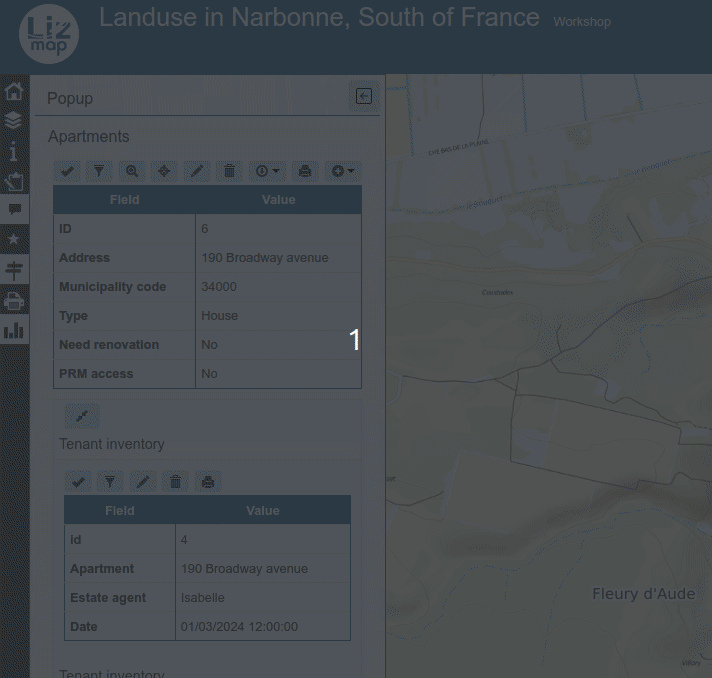
Ces améliorations des relations 1-n ont été financées à la fois par la ville d'Avignon et Valabre.
Dessin Texte et mesureIl est possible d'annoter la carte avec du texte dans l'outil de dessin. Les mesures ont également été améliorées.
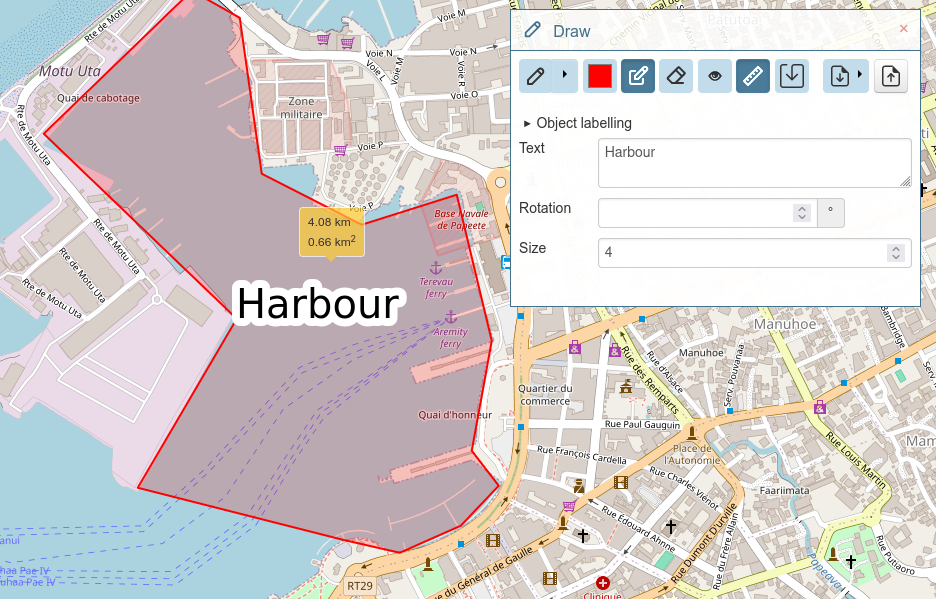
Ces fonctionnalités ont été financées par le Territoire de Belfort et Lons-le-Saunier.
ContraintesLors du dessin de certaines géométries sur Lizmap, vous pouvez désormais définir une contrainte de longueur et/ou d'angle.
Action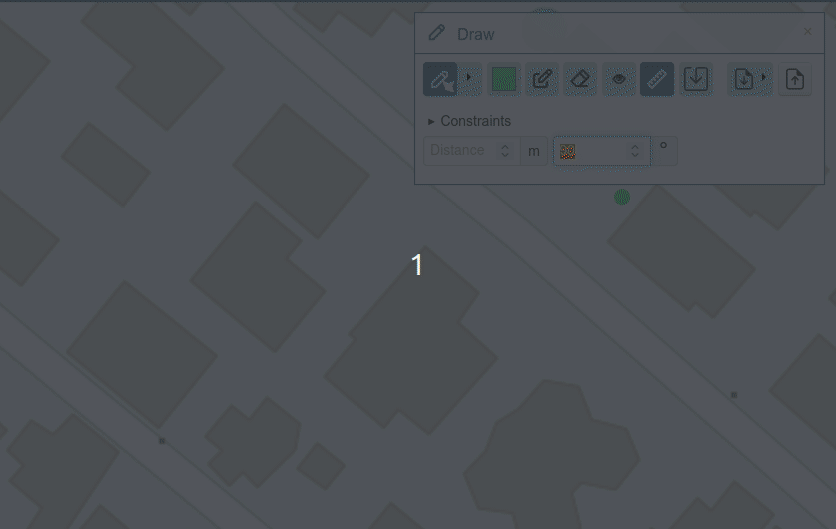
De nouveaux "contextes" ont été ajoutés à la fonctionnalité Actions. Avant, les actions n'étaient disponibles que pour le contexte d'entité. Avec la version 3.7, les actions peuvent être définies dans le contexte couche (similaire à la fonctionnalité native de QGIS) ou même au niveau duprojet.

Ces nouveautés ont été financées par Porte du Soleil.
JavascriptEn raison du travail qui a été effectué lors de la légende ou d'autres fonctionnalités de Lizmap, certains scripts Javascript précédents pourraient ne plus fonctionner et devront être adaptés.
Bonne nouvelle, certains de ces anciens scripts pourraient ne plus être nécessaires. Par exemple, à propos de la légende, vous êtes invités à passer au thème QGIS natif.
TéléchargementVous pouvez télécharger le dernier zip sur notre page des sorties.
Vous pouvez également consulter la liste des modifications complètes ("changelog") de la version 3.7.0, en anglais.
ModulesÀ la date du 29 janvier 2024, voici la liste des modules qui ont été mis à jour pour 3.7 :
Les autres modules sont en cours.
Nous espérons que vous allez apprécier cette nouvelle version ?
L'équipe 3Liz
-
sur 3liz: Release of Lizmap Web Client 3.7
Publié: 29 January 2024, 12:00pm CET
Lizmap Web Client 3.73Liz is pleased to announce the release of Lizmap Web Client 3.7, the new major version of the application.
Funders







- Geolab.re
- Parc naturel régional du Haut-Jura
- Portes du Soleil
- SDEC Energie
- Tenergie
- Terre de Provence Agglomération
- Vaucluse province in France
- WPD
It is now required to have a minimum QGIS server 3.22. However, we highly recommend using the latest LTR version, i.e. version 3.28 or even soon the next LTR version 3.34. Check the QGIS roadmap.
To take full advantage of this version 3.7, don't forget to update your Lizmap plugin in QGIS desktop. We've written an article dedicated to this new version.
Features Overhaul of the default themeA new theme is available, bringing a more up-to-date UI. It's now also easier to update these colors, because it has been centralized using just a few CSS variables.
Dataviz
In the plugin, you can find new settings about each plot. For instance, it's possible to set two different titles, depending on where the plot is displayed : either in the main dataviz panel or within a popup.
The main new feature is the Drag&Drop layout. We have been inspired by the native feature in QGIS about the Drag&Drop form layout. In Lizmap, when you have many plots to display, you can organize them in tabs or containers.
In QGIS, this is an example of the layout :

and the result in Lizmap Web Client :

These new features have been funded by DDTM 34.
LegendThis is one of the most visible and expected feature in Lizmap, it's possible to check/uncheck the legend items individually.
We also reviewed the way Lizmap was managing base layers in the project. Users are now invited to use the
baselayersgroup in the legend to define your base layers. With an updated version of the plugin, use the "Baselayers" tab to help you.We also decided to stick to the same behavior as in QGIS Desktop on how users are manipulating the legend. Now, when enabling a group, it will not toggle "ON" all layers included within this group.

To include these new features, a lot of Javascript refactoring has been done under the hood, funded by both Calvados province and Le Grand Narbonne.
LayoutsIn the plugin, a new panel about layouts landed. You are invited to have a look to these new settings. It's possible to :
- set per layout if we enable it or not on the web interface. Before, it was only possible to choose to enable or not printing capabilities at the project level.
- define Lizmap groups which are allowed to access this layout
- define a custom icon when the layout is based on an atlas.
- reduce the number of formats available. No more Javascript needed to have a simplified interface
- ...

These new features have been funded by DDTM 34.
During this work, we deprecated the QGIS server plugin AtlasPrint. Lizmap now uses the native feature from QGIS Server for printing an atlas feature.
Editing WebDAVFaunalia contributed directly on the Lizmap source code by adding WebDAV support in form when the editing widget has been set to WebDAV storage, check the online documentation. It works as well when displaying the popup.
Relations between tablesThe support of relations 1-n between tables has been improved when editing these layers :
- Adding new "child" features from the popup of a parent
- Displaying the table of "child" features from the editing form of a parent


These improvements about relations 1-n were funded by both Avignon city and Valabre.
Drawing Text and measuresIt's possible to annotate the map with some text in the drawing tool. Measures have been improved as well.

These features were funded by Territoire de Belfort and Lons-le-Saunier.
ConstraintsWhen digitizing some geometries on Lizmap, you can now set some length and/or angle constraints.
Actions
Some new scopes have been added the Actions feature. Before, it was only the feature scope. With 3.7, Actions can be defined in the layer scope or (similar to QGIS native actions feature) or even in the project scope.

These new features have been funded by Porte du Soleil.
JavascriptDue to the work which have been done during the legend or other features in Lizmap, some previous Javascript script might not work anymore and need to be adapted.
Good news, some of these legacy scripts might not be needed anymore. For instance, about the legend, you are invited to switch to the native QGIS theme feature.
DownloadYou can download the latest zip on our releases page.
You can also check the full changelog of version 3.7.0.
ModulesAs of January 29rd 2024, this is the list of modules which have been released for 3.7 :
Other modules are work-in-progress.
We hope you will enjoy this new version ?
The 3Liz team
-
sur Free and Open Source GIS Ramblings: Trajectools update: stop detection & trajectory styling
Publié: 27 January 2024, 2:38pm CET
The Trajectools toolbox has continued growing:
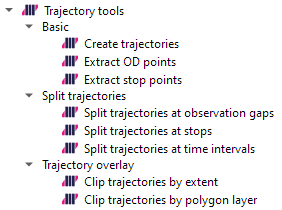
I’m continuously testing the algorithms integrated so far to see if they work as GIS users would expect and can to ensure that they can be integrated in Processing model seamlessly.
Because naming things is tricky, I’m currently struggling with how to best group the toolbox algorithms into meaningful categories. I looked into the categories mentioned in OGC Moving Features Access but honestly found them kind of lacking:
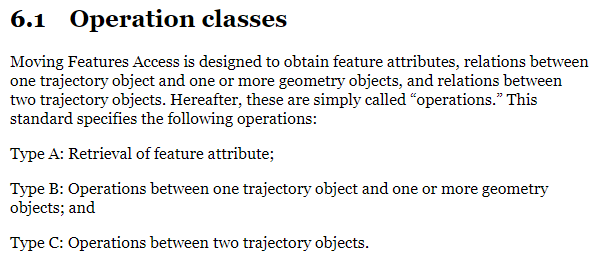
Andrienko et al.’s book “Visual Analytics of Movement” comes closer to what I’m looking for:
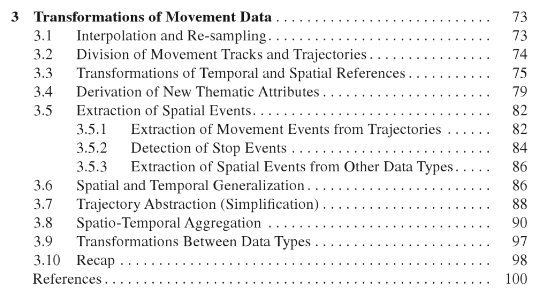
… but I’m not convinced yet. So take the above listed three categories with a grain of salt. Those may change before the release. (Any inputs / feedback / recommendation welcome!)
Let me close this quick status update with a screencast showcasing stop detection in AIS data, featuring the recently added trajectory styling using interpolated lines:

While Trajectools is getting ready for its 2.0 release, you can get the current development version directly from [https:]] .
-
sur GIScussions: Geomob London – a Cracking Night of Maps
Publié: 26 January 2024, 3:38pm CET

I must have said this before but I will say it again, if you live anywhere near to London and you are into geotech, maps or location influenced applications then you should give Geomob a try. I’d offer you a money back guarantee but as it’s free that isn’t necesary but more on that later.
On Wednesday night (24th Jan 2024) we had nearly a hundred people attending what truly was a cracking event, the room was full (almost overfull), the speakers were eclectic, wide ranging and brilliant, the conversation was sparkling and mappy and it was a treat to be able to stand outside the pub drinking in January.
For a run down on the 5 speakers and their talks have a look at the @Geomob thread on mastodon
The talks covered a new javascript library, a Welsh language version of OSM, crowd sourcing neighbourhood boundaries in New Zealand, mapping bus routes and stops in India and the audience favourite (and mine) A Map Inside. This was a perfect selection of talks, technical, quirky, passionate and absorbing. As always, the best is saved for the end when we go to the nearby pub and chat, make new friends and discover new opportunities.
There is something very special about Geomob and that is perhaps evidenced by its expansion from its origins in London to regular events in Barcelona, Berlin, Finland, Lisbon, Munich and Tel Aviv. Geomob would not be possible without the energy and commitment of Ed Freyfogle whose company OpenCage is the principal sponsor of the events (and the podcast) and the generous sponsors – OpenCage, Mappery, Esri UK, Ed Parsons, Geolytix and SplashMaps.
But here is the rub, the numbers are increasing (which is good) and beer prices are also increasing (which is not so good) so the cost of running the events is increasing faster than sponsorship. We need more sponsors or larger sponsorship to keep Geomob growing and spreading geo-goodness to a wider audience, can you help us? It could be an individual or a company sponsoring events in a city or worldwide or it could be that you would like to sponsor a podcast episode and get a mention of your organisation as a sponsor in our podcast (great if you are hiring or launching a new service). Ed and I have some ideas for novel approaches to sponsorship and would be happy to discuss them with you, just message me through the contact form.
Geomob always needs speakers at the events and on the podcast so if you fancy presenting or being interviewed get in touch with us.
-
sur Developers invited to the February 2024 OGC API – Coverages Virtual Code Sprint
Publié: 25 January 2024, 3:00pm CET par Simon Chester
The Open Geospatial Consortium (OGC) invites developers to the 2024 OGC API – Coverages Virtual Code Sprint, to be held February 13-15, 2024. Registration is free and open to the public.
The Sprint will focus on refining the OGC API – Coverages – Part 1: Core candidate Standard. OGC API – Coverages enables clients to efficiently retrieve a subset of spatiotemporal data for a given time, area, and resolution of interest through a simple Web API.
Typically, this data is returned in a gridded format such as netCDF, GeoTIFF, CoverageJSON, or CIS JSON, although this also extends to other coverage data types, such as point clouds in e.g. LAS/LASZip format, or tiled coverage data. The candidate Standard also supports the listing and retrieving of data and metadata for individual scenes making up a coverage.
Example types of coverages, sometimes called GeoDataCubes, include weather and climate datasets, Earth Observation time series, static environmental data such as digital elevation models, land cover classification, and point clouds obtained from LiDAR capture or photogrammetry. Furthermore, in recent OGC activities, the development of a proposed GeoDataCube API Standard has leveraged OGC API – Coverages as a Core foundation for data access.
An OGC Sprint is a collaborative and inclusive event driven by innovative and rapid programming with minimal process and organization constraints to support the development of candidate standards and applications that implement those standards.
During the virtual code sprint, there will be an opportunity for joint discussion with all participants on the goals and objectives of the event, as well as the final briefing of findings and opinions of the participants. However, the majority of the time will be spent in collaboration between participants in active coding.
To learn more about how the family of OGC API Standards work together to provide modular “building blocks for location” that address both simple and the most complex use-cases, visit ogcapi.org. For more technical information about OGC Standards, including how to get started, links to each Standards’ GitHub page, official Standards documents, compliance, and more, visit developer.ogc.org
The Sprint will take place on GoToMeeting and Discord platforms from 8:00am to 6:30pm (US Eastern) each day from February 13-15, 2024.
For more information on the Sprint, including objectives, agenda, and registration, visit the February 2024 OGC API ? Coverages Virtual Code Sprint wiki page on GitHub. Information on other OGC Sprints or events for developers can be found on the OGC Developer Events wiki on GitHub.
The post Developers invited to the February 2024 OGC API – Coverages Virtual Code Sprint appeared first on Open Geospatial Consortium.
-
sur GeoSolutions: GeoSolutions at GeoWeek Feb 11-13 (Booth 548): Cesium/3D Tiles Support in MapStore
Publié: 25 January 2024, 2:08pm CET
You must be logged into the site to view this content.
-
sur GeoTools Team: GeoTools 30.2 Released
Publié: 25 January 2024, 7:56am CET
The GeoTools team is pleased to the release of the latest stable version of GeoTools 30.2: geotools-30.2-bin.zip geotools-30.2-doc.zip geotools-30.2-userguide.zip geotools-30.2-project.zip This release is also available from the OSGeo Maven Repository and is made in conjunction with GeoServer 2.24.1. The release was made by Jody Garnett (GeoCat). -
sur GeoServer Team: GeoServer 2.24.2 Release
Publié: 24 January 2024, 1:00am CET
GeoServer 2.24.2 release is now available with downloads (bin, war, windows), along with docs and extensions.
This is a stable release of GeoServer recommended for production use. GeoServer 2.24.2 is made in conjunction with GeoTools 30.2, and GeoWebCache 1.24.2.
Thanks to Jody Garnett (GeoCat) for making this release, everyone who contributed, and to Georg Weickelt and Peter Smythe for preflight testing.
Security ConsiderationsThis release addresses security vulnerabilities and is considered an essential upgrade for production systems.
See project security policy for more information on how security vulnerabilities are managed.
Release notesImprovement:
- GEOS-11213 Improve REST external upload method unzipping
- GEOS-11246 Schemaless plugin performance for WFS
- GEOS-11219 Upgraded mail and activation libraries for SMTP compatibility
Bug:
- GEOS-9757 Return a service exception when client provided WMS dimensions are not a match
- GEOS-11051 Env parametrization does not save correctly in AuthKey extension
- GEOS-11223 Layer not visible in preview/capabilities if security closes the workspace, but allows access to the layer
- GEOS-11224 Platform independent binary doesn’t start properly with default data directory
- GEOS-11235 preauthentication filters - session reuse even after having logout
- GEOS-11241 ModificationProxy breaks information hidding on CatalogInfo.accept(CatalogVisitor) exposing the proxied object
- GEOS-11250 WFS GeoJSON encoder fails with an exception if an infinity number is used in the geometry
- GEOS-11255 Multiple inserts in WPS with different idGen strategies does not work
Task:
- GEOS-11220 Upgrade Hazelcast from 5.3.1 to 5.3.6
- GEOS-11245 Update OSHI from 6.2.2 to 6.4.10
For the complete list see 2.24.2 release notes.
Community UpdatesCommunity module development:
- GEOS-10933 keycloak logout NPE
Community modules are shared as source code to encourage collaboration. If a topic being explored is of interest to you, please contact the module developer to offer assistance.
About GeoServer 2.24 SeriesAdditional information on GeoServer 2.24 series:
-
sur GeoSolutions: Partnership with Nordiq Group
Publié: 23 January 2024, 12:25pm CET
You must be logged into the site to view this content.
-
sur Stefano Costa: I libri che ho letto nel 2023
Publié: 20 January 2024, 12:46pm CET
Fine anno, tempo di elenchi (bilanci, no). Nel 2023 ho letto pochino.
David Graeber, DebitoQuesto è il libro che mi ha impegnato per più tempo. È un saggio, ed era da tempo che non leggevo un saggio, non sono più abituato allo stile e all’impegno richiesto. È un testo rivoluzionario a livello sociologico e psicologico (smonta il senso di colpa!) ancora più che a livello economico. Ha uno stile abbastanza scorrevole (per me) ma comunque è denso di nozioni, confronti tra fatti e conseguenze scagliate come frecce ad ogni pagina. Non conoscevo David Graeber prima della pubblicazione postuma del libro L’alba di tutto (The dawn of everything), scritto a quattro mani con l’archeologo David Wengrow. Ho pensato che non ci fosse nessuna fretta e fosse invece un bene partire da qui per conoscere il lavoro di Graeber, e sono contento di averlo fatto.
Enzo Barnabà, Morte agli Italiani!Il massacro di Aigues-Mortes, che il 17 agosto 1893 costò la vita a nove operai italiani linciati da una folla inferocita, rappresenta un episodio capitale nella storia dei rapporti tra l’Italia e la Francia.
Questo libro di Enzo Barnabà è breve, preciso e senza orpelli.
Racconta la tragedia del massacro di Aigues-Mortes, le premesse che lo hanno reso possibile, le conseguenze che ebbe in Italia capaci di sconvolgere gli assetti politici sia del governo sia delle giovani formazioni socialiste.
Lucia Tozzi, Dopo il turismoQuesto libro è stato scritto di getto nei mesi del lockdown. Trafigge come una spada convinzioni e luoghi comuni, in modo anche un po’ crudele. Il turismo è insostenibile. Distrugge le comunità delle persone, i luoghi abitati da queste comunità.
Luca Mercalli, Salire in montagna
Sono passati appena 3 anni e sembra la cronaca della rivoluzione mancata di un altro pianeta. Abbiamo già dimenticato tutto quello che è accaduto e quello che avrebbe potuto accadere.
Il libro può essere “acquistato” gratuitamente in formato ePub dal sito dell’editore nottetempo.La cosa che mi fa incazzare di questo libro è che è scritto da una persona di cui avevo una stima incondizionata, frutto di altre letture (non della trasmissione televisiva). Ma questo libro sembra scritto da Paolo Rumiz. Infatti Mercalli ce l’ha con chi abita in montagna, con chi non ci abita più, con chi non ci abita e non ci ha mai abitato. Lo scopo principale del libro è lamentarsi della burocrazia che gli impedisce di costruire la sua seconda casa, dove può trovare riparo dalle zanzare della sua abitazione indipendente di pianura. Salire in montagna sarebbe un antidoto al riscaldamento globale, dice il sottotitolo, ma se va bene dire una fesseria del genere al bar, trovarlo propagandato da un climatologo fa per l’appunto incazzare. Le montagne tutte e in particolare le Alpi sono uno degli ecosistemi più fragili di fronte al cambiamento climatico, e per fortuna questa semplice nozione fa capolino qua e là tra le pagine del libro. Costruire una casa recuperando un edificio storico invece che buttarlo giù è una bella cosa, molto costosa (ma Mercalli alla fine non ci dice quanto) ma ne vale la pena perché potremmo ripopolare la montagna lavorando al computer, secondo la logica deformata di questo libro. Non ne sopporto l’idea di fondo perché è la propaganda di una idea individualista, come se i venti milioni di abitanti della pianura padana potessero trovare spazio per la loro seconda casa sulle montagne e salvarsi così tutti dal riscaldamento globale (che li lascerà comunque a morire di fame). E nelle prime pagine è riportata virgola per virgola una pseudoetimologia sull’idronimo della Dora presa da Wikipedia, che mi ha reso da subito indisposto. E non c’è nemmeno una carta geografica.
Assia Djebar, Bianco d’AlgeriaQuesto libro è sicuramente quello che ho faticato di più a leggere, nonostante non sia molto lungo. Trasuda nella sua componente principale un dolore immenso, il dolore di un popolo intero. Parla dello sradicamento ineludibile di chi deve usare la lingua degli oppressori per esprimersi, anche quando questa espressione raggiunge livelli altissimi e anche quando gli oppressori francesi si manifestano come la più grande sciagura mai accaduta al popolo algerino. Parla di profondissimi legami con le persone che per la libertà hanno messo tutto il proprio corpo e non solo il proprio intelletto, a costo di perdere la vita.
Chinelo Okparanta, Sotto gli alberi di udalaQuesto libro inizia con una carta geografica della Nigeria, e questo potrebbe essere sufficiente a metterlo vicino al mio cuore (perché mi piacciono molto le carte geografiche). Ritrovo il Biafra devastato e dilaniato dalla ferocia della guerra civile di Metà di un sole giallo, con un pesantissimo supplizio in più. La protagonista è costretta a vivere con crescente angoscia la propria omosessualità, perché in Nigeria è un peccato mortale che viene punito in modo sommario, anche con linciaggi. Ma nella seconda parte si riaccende la speranza. È la stessa Africa dove oggi vacilla un po’ il colonialismo europeo.
Beata Umubyeyi Mairesse, I tuoi figli ovunque dispersiAnche questo libro è un racconto di sradicamento, che attraversa più generazioni. Tra Ruanda e Francia, tra nonna, madre, figlio, la protagonista trova un senso, anche linguistico, al proprio passato e al proprio futuro, nonostante il trauma del genocidio, della fuga dal genocidio e dello sradicamento che ne deriva. Bellissimo, straziante e lucido.
Gabriela Wiener, SanguemistoAnche questo libro è un racconto di sradicamento, che attraversa più generazioni (non ho sbagliato a fare copia e incolla). È un libro molto forte che si aggancia quasi chimicamente con letture accademiche che sto facendo in questo periodo, su archeologia e colonialismo (in Italia non esiste il postcolonialismo). Ma è anche un tripudio agrodolce di femminilità.
Inizio il 2024 leggendo L’incendio di Cecilia Sala e Tutta intera di Espérance Hakuzwimana.
-
sur gvSIG Team: IDE del Ayuntamiento de Albacete, optimizando la gestión de la información
Publié: 18 January 2024, 3:04pm CET
Os traemos una presentación de la Infraestructura de Datos Espaciales (IDE) de Albacete, proyecto estratégico destinado a proporcionar un marco tecnológico y organizativo para la gestión, acceso y uso de la información geoespacial en el ámbito del municipio de Albacete. Este proyecto ha tenido como objetivo principal mejorar la toma de decisiones, impulsar el desarrollo urbano sostenible y fomentar la colaboración entre los diferentes actores involucrados en la planificación y gestión del territorio.
La ponencia presenta los trabajos principales y avances de la implantación de la IDE de Albacete. Durante el proyecto se ha llevado a cabo tanto la recopilación, integración y homogeneización de una amplia variedad de datos geoespaciales como el desarrollo de herramientas orientadas a ampliar la funcionalidad de la IDE y a fomentar la participación de los distintos departamentos municipales.
En cuanto a los avances logrados, se ha implementado una plataforma tecnológica robusta y escalable, con base tecnológica en la Suite gvSIG, que permite la gestión eficiente de la información geoespacial y su difusión a través de un conjunto de geoportales y servicios web interoperables. Además de los geoportales de uso interno,se ha publicado un visor cartográfico principal y un número creciente de geoportales temáticos (turismo, urbanismo, movilidad, etc.).
Además, se han desarrollado herramientas específicas que facilitan el acceso y uso de los datos geoespaciales por parte de los diferentes usuarios del Ayuntamiento de Albacete, destacando integraciones con otros sistemas informáticos como el gestor de expedientes SEDIPUALBA / SEGEX, el Catastro con acceso a datos protegidos o el Padrón. Integrada con la IDE desarrollada con gvSIG Online, también se cuenta con la app móvil gvSIG Mapps para la toma de datos en campo, tanto en modo online como offline, y un catálogo de metadatos basado en Geonetwork.
Por último, hay que reseñar que el proyecto también ha implicado un esfuerzo en formación y divulgación entre el personal técnico del Ayuntamiento de Albacete.
En conclusión, la implantación de la Infraestructura de Datos Espaciales de Albacete representa un paso significativo hacia una gestión territorial más eficiente y sostenible. Un proyecto que puede servir de referencia para otros municipios con necesidades similares.
-
sur OGC forms new GeoZarr Standards Working Group to establish a Zarr encoding for geospatial data
Publié: 18 January 2024, 3:00pm CET par Simon Chester
The Open Geospatial Consortium (OGC) is excited to announce the formation of the OGC GeoZarr Standards Working Group (SWG). The new SWG will develop a Zarr encoding for geospatial gridded data in the form of Zarr conventions.
Zarr is a cloud-native data format for n-dimensional arrays that enables access to data in compressed chunks of the original array. Zarr facilitates portability and interoperability on both object stores and hard disks.
As a generic data format, Zarr has increasingly become popular to use for geospatial purposes. As such, in June 2022, OGC endorsed Zarr V2.0 as an OGC Community Standard. The purpose of the GeoZarr SWG is to have an explicitly geospatial Zarr Standard (GeoZarr) adopted by OGC that establishes flexible and inclusive conventions for the Zarr cloud-native format that meet the diverse requirements of the geospatial domain. These conventions aim to provide a clear and standardized framework for organizing and describing data that ensures unambiguous representation.
The objectives of GeoZarr conventions include:
- Compatibility: Ensuring easy compatibility with popular mapping and data analysis tools such as GDAL, Xarray, ArcGIS, QGIS, and other visualization tools, enabling seamless integration into existing workflows.
- Dimensions: Supporting multi-dimensional data, such as hyperspectral and altitude information, to address diverse geospatial data requirements.
- Data Discovery: Providing metadata for discovering, accessing, and retrieving the data, including composite products made of multiple data arrays.
- Mixing Data: Facilitating the combination of different types of geospatial data, including satellite images, elevation maps, and weather models, to create comprehensive and informative datasets.
- Flexibility: Allowing scientists and researchers to work with diverse data types and projections in their preferred software and programming languages, promoting flexibility and adaptability in geospatial data processing and analysis.
In addition to the encoding of geospatial data and metadata, the GeoZarr Standard will provide a multi-dimensional alternative to the two-dimensional Cloud-Optimized GeoTiff format (COG – adopted by OGC in May 2023), which has lately gained popularity due to its serverless capabilities. These capabilities will allow for inherent support of traditionally server-based functions, such as visualization (similar to OGC API – Maps), data subset access (analogous to OGC API – Coverages), and symbology (equivalent to OGC API – Styles). These aspects are planned to be incorporated as optional profiles (e.g. conformance classes).
OGC Members interested in staying up to date on the progress of this standard, or contributing to its development, are encouraged to join the GeoZarr Standards Working Group via the OGC Portal. Non-OGC members who would like to know more about participating in this SWG are encouraged to contact the OGC Standards Program.
The post OGC forms new GeoZarr Standards Working Group to establish a Zarr encoding for geospatial data appeared first on Open Geospatial Consortium.
-
sur GeoSolutions: GeoSolutions is now a Cesium Certified Developer – 3D Tiles
Publié: 18 January 2024, 12:24pm CET
You must be logged into the site to view this content.
-
sur Oslandia: (Fr) [En image] Giros 360 : un jumeau numérique pour la Garonne
Publié: 18 January 2024, 9:15am CET
Sorry, this entry is only available in French.
-
sur gvSIG Batoví: NUEVO GRUPO TELEGRAM PARA URUGUAY (PERO ABIERTO A OTROS…)
Publié: 17 January 2024, 6:19pm CET

Hay un nuevo grupo en Telegram para los «geoinquietos»; de Uruguay pero abierto a todo aquel que quiera sumarse. Para compartir información, oportunidades de formación, becas, inquietudes, consultas, y todo aquello vinculado de algún modo a lo geoespacial. Siempre con respeto y buena onda:
Los invitamos a unirse.
-
sur Insights from Innovation Days 2023
Publié: 17 January 2024, 11:44am CET par Simon Chester
At the end of another year of prototyping software, experimenting with data access, and debating how to overcome geospatial technology’s many challenges, teams from OGC member organizations gathered in Washington DC to share 2023’s work and help OGC decide what challenges we should address in 2024.
Representatives of government agencies and industry – from FEMA and Natural Resources Canada, to Intact, Canada’s largest insurer – highlighted their successes, current needs, and aspirations. Through panel discussions, demos, and conversations over coffee, teams from startups, like FloodMapp and Navteca, to established industry players, like Bentley Systems and GDIT, shared what they could do to meet today’s needs and shape the tools and systems we’ll be using next.
Here are three key takeaways learned from listening in:
- While looking at maps is the obvious way to interact with spatial data, advances in Artificial Intelligence (AI) mean that a conversation with a map may become normal. Though what this change implies is less clear.
- Sensors, surveys, and citizens continue to produce data at scale. Different approaches – from indexing and cataloging to tagging and the semantic web – help us navigate this endless sea of data, yet too often unable to find the right data when we need it.
- If we were to add another ‘A’ to the FAIR Principles, it might stand for ‘Actionable.’ Even when you can find the data you need, access it, and combine it with other data, robust methods for transforming all that data into actionable intelligence remain limited. The push for organizations to report on how their data supports their decisions may, in 2024, drive collaboration on Standards for describing chains of modeling, inference, and reasoning.
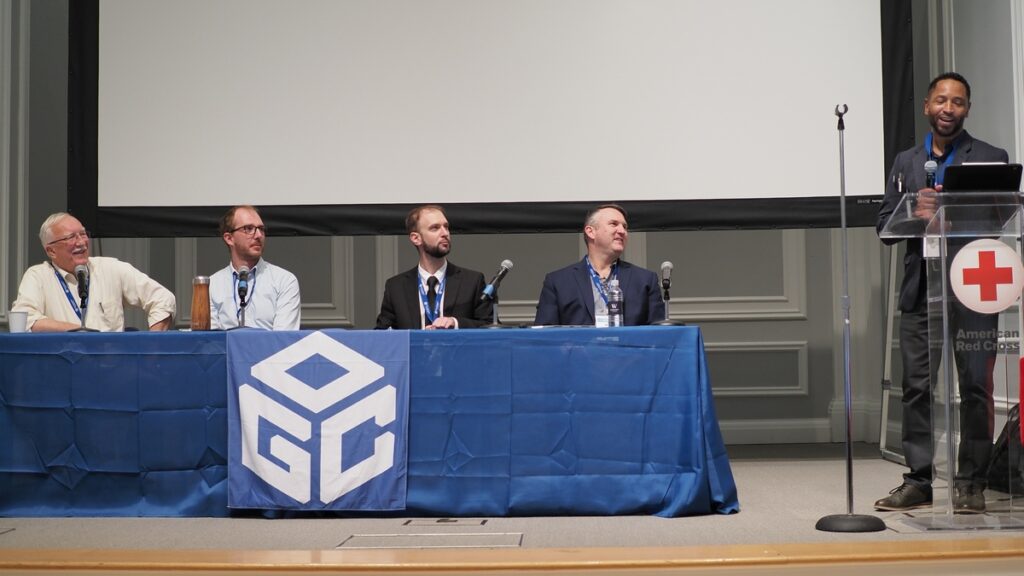 Moderator Eldrich L. Frazier (FGDC and panelists Ryan Ahola (NRCan), Matt Webster (Barbaricum) Tom Landry (Intact Financial Corporation) and Jim Antonisse (WiSC) discuss the transformative power of Geospatial Artificial Intelligence (GeoAI).
AI is changing how we interact with maps and spatial data
Moderator Eldrich L. Frazier (FGDC and panelists Ryan Ahola (NRCan), Matt Webster (Barbaricum) Tom Landry (Intact Financial Corporation) and Jim Antonisse (WiSC) discuss the transformative power of Geospatial Artificial Intelligence (GeoAI).
AI is changing how we interact with maps and spatial data
Following the late 2022 public launch of ChatGPT, “AI” became mainstream in 2023 – and its applications in geospatial broadened. This was clear at Innovation Days 2023.
In the early 2020s, excitement around AI in the geospatial tech community centered around automating the laborious process of identifying the important objects in satellite images and pulling out key data points from large datasets. This transformed the work of many geospatial analysts and developers, as noted by AI Panel chair Rich Frazier (USGS), but had limited impact on how most people interact with maps and spatial data. The panel’s conversation on AI centered on the potential consequences of our newfound ability to speak to an AI tool and ask it to create a map or run a spatial analysis.
Many of us are already doing this in specific contexts, such as asking your phone for driving directions, but advanced spatial analysis still requires mice and menus. This is why Natural Language Processing (NLP) felt like such a breakthrough in 2023. First, it has the potential to bypass specialized software and technical language and almost remove the barrier to entry for harnessing geospatial data. It’s therefore no surprise that NLP featured in several presentations, including those by Navteca co-founder Shayna Solis and Voyager Search’s founder Brian Goldin. Additionally, it might let developers and analysts operate more efficiently and create better products. As highlighted by Matt Webster of Barbaricum, who paraphrased economist Richard Baldwin from his presentation at the May 2023 World Economic Forum’s Growth Summit, “AI won’t take your job, but someone using AI will.” The specialist using NLP AI technology has another tool to deploy and they’re likely to use it to their advantage.
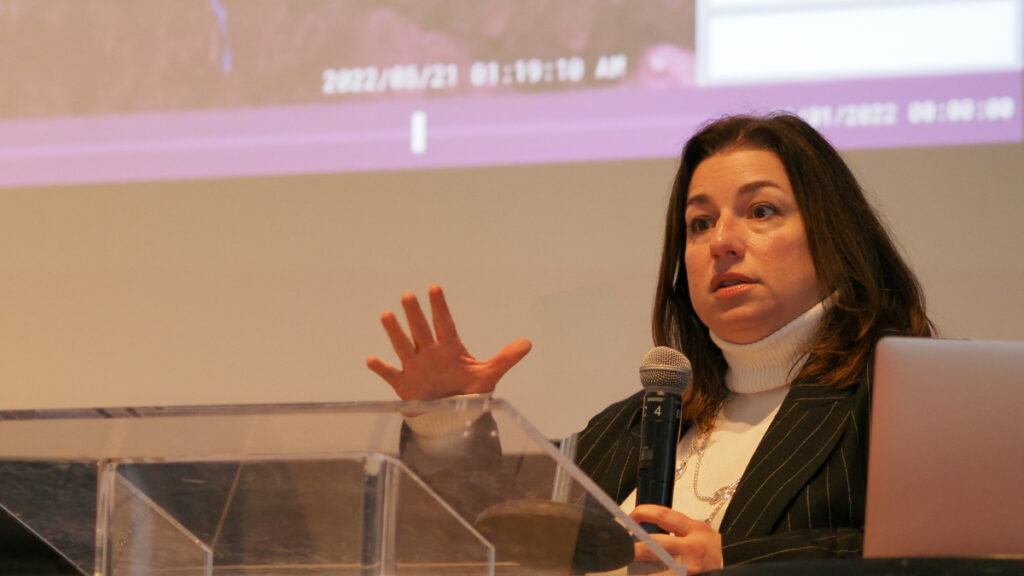 Shayna Solis, CEO & Co-founder of Navteca demonstrated using Conversational AI to interact with geospatial data for disaster response.
Shayna Solis, CEO & Co-founder of Navteca demonstrated using Conversational AI to interact with geospatial data for disaster response.
The takeaway is that the current stage of AI not only democratizes access to geospatial information but also enhances user experience and engagement – if we can learn to ask the right questions with the right words. This is the sticky part of the problem. If geospatial really is in everything, there’s a diverse set of questions (aka prompt engineering) for us to teach the NLP AIs to understand. The organizations who gathered at Innovation Days 2023 might start building lots of one-task NLP tools, proliferating the “driving directions” application, or aim for more general ways of describing our mapmaking aims when we speak with an AI tool. Either way, this area looks set for a busy 2024.
Finding the right data when we need it is still too hard“When it comes to asset-scale climate resilience planning, most people don’t want data, they want data-based answers to key questions. Our challenge is helping them extract actionable intelligence from our data in the form of plain-language answers to their questions.”
David Herring, Communication, Education and Engagement Division Chief – NOAA Climate Program Office.A common refrain at Innovation Days 2023 was the ongoing difficulty surfacing the ‘right data’ when it’s needed. Scott Kaplan (USGS, Civil Air Patrol) spoke about the critical need for the ‘right data’ to support crews fighting wildfires. Kasie Richards (American Red Cross) called out the need for the ‘right data’ for planning for future patterns of extreme weather events that will look different from the past. Tom Landry (Intact) pointed to the need to enable public-private partnerships that could make the ‘right data’ held by private entities discoverable and usable for applications that benefit the public.
Catalogs, indexes, semantic knowledge organization systems, and machine-readable metadata systems have proliferated as organizations attempt to keep pace with the growth in data, but the conversations among panelists suggest that these approaches haven’t solved the problem – and it’s worsening as more data is generated.
Alan Lediner (NYC GISMO) characterized the inability to ask for and find what we need in all this data as a “communication problem.” This framing links what we’re stuck on (finding the right data) to where we’re moving toward (using natural language prompts) but requires (again) that we figure out how to describe what we mean when we say ‘the right data.’
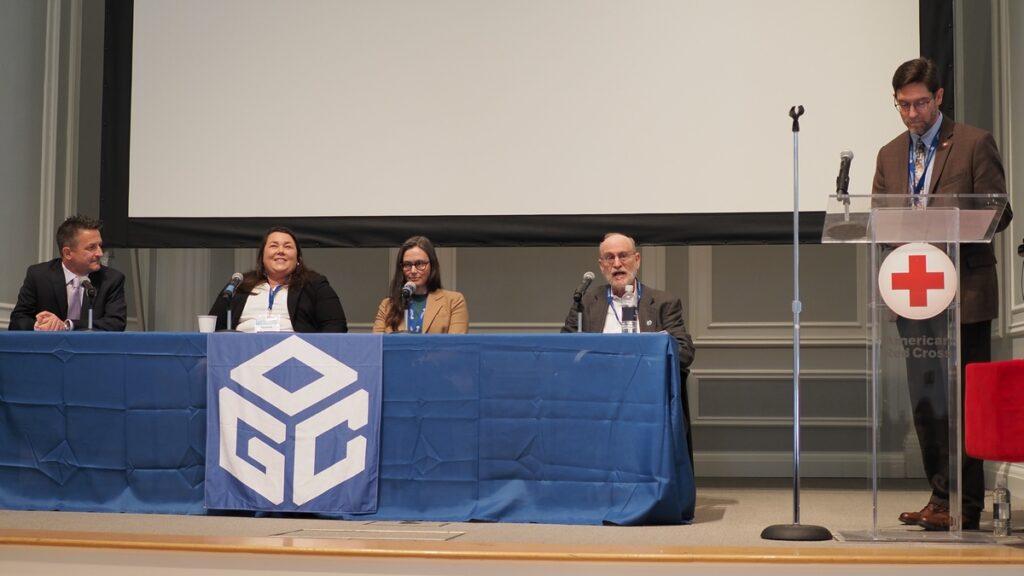 Discussions about how to find the right data were threaded throughout the panels at Innovation Days 2023, highlighted by Alan Leidner speaking about data for emergency response.
Discussions about how to find the right data were threaded throughout the panels at Innovation Days 2023, highlighted by Alan Leidner speaking about data for emergency response.
There’s another factor that makes addressing the findability problem particularly urgent for 2024: spiraling costs due to duplication. People often make local copies of data they think they’ll need so that they can later access it quickly and reprocess it on their own infrastructure. Dave Borges (CEOS, NASA) pointed to the unintended consequences of this widespread practice: spiraling financial (and environmental) costs, and, perversely, greater difficulty finding the ‘right’ version of a dataset, as multiple organizations make their own versions of datasets cloud-accessible. It’s hard to see us breaking this habit without creating confidence that other organization’s datasets will be findable (and generally FAIR) when they’re needed. Designs that account for people’s behavior and attitudes toward their data sources may push forward Findability as the organizations gathered at Innovation Days 2023 build the next cloud-native geospatial systems.
Data is actionable when it is accountableResponding to emergencies, preparing for future extreme events, and redesigning infrastructures for resilience in a changing climate are all high-stakes uses of geospatial data and technologies that impact lives and communities. Craig Fugate (FEMA), in his keynote at Innovation Days 2023, emphasized these impacts.
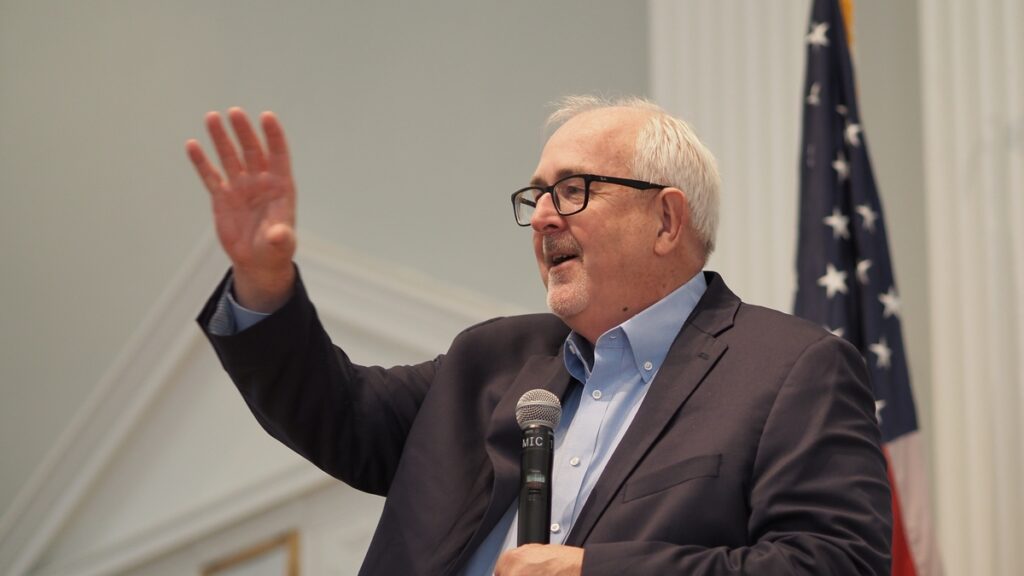 Craig Fugate, Former Administrator, Federal Emergency Management Agency (FEMA), during his keynote address.
Craig Fugate, Former Administrator, Federal Emergency Management Agency (FEMA), during his keynote address.
Craig encouraged us to think differently about our challenges, suggesting specific changes like taking a “maximum of maximums approach” when formulating an emergency response plan that can quickly scale up the response as an emergency is unfolding. Equally important, in his judgment, were proposed changes to longer term planning and response, such as explicitly considering equity and equality when planning how to deploy resources to prevent disasters or rebuild after they occur. This push for innovation, many years in the making and challenging in its own right, is facing new complications as it intersects with a growing drive for accountability.
Accountability, and the ability to demonstrate that decisions were backed by sound data and reasoning, is emerging as an essential part of decision-making processes – particularly for government and public sector organizations. It’s also supporting new, effective practices because it can allow people and organizations to confidently back the changes made. Synthesizing comments from Shanna McClain (NASA), Norman Speicher (DHS), and Ryan Ahola (NRCan), this in practice means the geospatial community needs to develop methods and systems that allow audits of the complex chains of data, models, tools, and people that inform decisions.
Building these methods and systems will require organizations to grapple with how we express uncertainty, which is only compounded by the growing use of AI tools. One example of how this challenge may play out came from the AI Panel’s discussion on visually representing results in ways that won’t impart false confidence. Juliette Murphy’s (FloodMapp) presentation provided another, highlighting the challenges of getting people to think in terms of probabilities when buying a home in a flood-prone area. Looking to 2024, expect to see considerations of uncertainty and accountability continue to intersect as new geospatial approaches to climate & disaster resilience are developed.
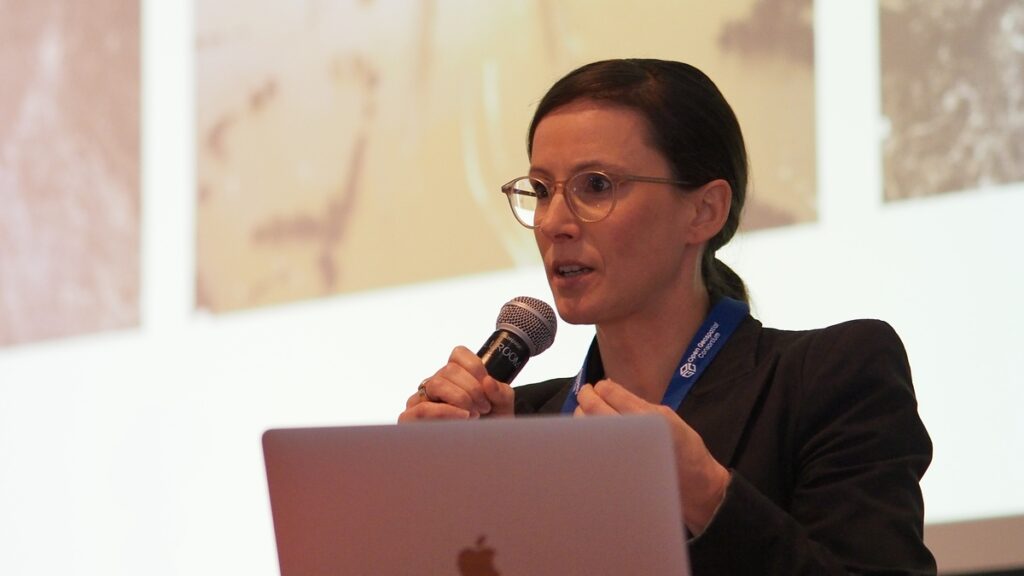 Juliette Murphy (FloodMapp) discusses the challenges of conveying uncertainty, probability and risk.
What comes next?
Juliette Murphy (FloodMapp) discusses the challenges of conveying uncertainty, probability and risk.
What comes next?
The tendency for geospatial organizations to operate as “Silos of Excellence” was a common theme brought up by several speakers at Innovation Days 2023. The collaborative, consensus-driven approach that underpins all activities at OGC is a proven method for overcoming this challenge. Progress in 2024 will require more collaboration across the community, including between those who use geospatial tools and those affected by the decisions they’re informing. Indeed, how we interact with location data, how we find the geospatial information we need, and how we make data-driven decisions accountable are all issues being tackled by our community through OGC COSI Initiatives, Working Groups, and events. A few to look out for in 2024:
- The OGC Artificial Intelligence in Geoinformatics Domain Working Group (GeoAI DWG) is exploring the implications of natural language processing (NLP) integration with GIS. This public group is broadly focused on fostering collaboration among diverse stakeholders to address gaps and impacts of AI on OGC standards, and is launching a monthly speaker series in early 2024.
- SpatioTemporal Asset Catalog (STAC) is a proposed OGC Community Standard that conforms to OGC APIs and provides an interoperable metadata framework that simplifies the process of finding and using geospatial assets from different providers. In 2024, multiple OGC Code Sprints will continue to give our community a platform to collaborate on emerging OGC and Community Standards and implementations.
- Trust is an essential component of producing actionable geospatial intelligence. As the push continues towards interoperable tool chains for modeling, inference, and reasoning, Standards such as OGC Training Data Markup Language for Artificial Intelligence (TrainingDML-AI) can improve trustworthiness by formalizing how modeling training data is prepared, including data provenance and quality. The Training Data Markup Language for AI Standards Working Group will continue this important work in 2024.
- The Climate and Disaster Resilience Pilot will kick off in Spring 2024, continuing to prototype new Standards-based tools, models, and methods for critical applications – from building warning systems that support natural disaster response to integrating Climate models into emergency management planning. There’s still time to apply to participate and receive funding to address these critical challenges.
By necessity, this blog is only able to cover a small snapshot of the many discussions, insights, and conversations resulting from OGC Innovation Days 2023. A big thank you goes out to all the presenters, panelists, attendees, and other OGC community members that helped make it such a success.
We look forward to seeing many of our community members at the 128th OGC Member Meeting in Delft, Netherlands, March 25-29, and later at OGC Innovation Days 2024.
Want to join the conversation around collaboration and innovation across geospatial data and technologies? Contact OGC or sign up to the OGC Newsletter to hear about upcoming events, funding opportunities, and the latest geospatial Standards.
The post Insights from Innovation Days 2023 appeared first on Open Geospatial Consortium.
-
sur Announcing the 2024 Joint OGC ASF OSGeo Code Sprint
Publié: 12 January 2024, 3:00pm CET par Simon Chester
The Open Geospatial Consortium (OGC), Apache Software Foundation (ASF), and Open Source Geospatial Foundation (OSGeo) are pleased to announce the date of the 4th annual Joint OGC ASF OSGeo Code Sprint as February 26-28, 2024.
As a hybrid event, the face-to-face component will be held in Casa Cordovil-Universidade de Évora (Évora, Portugal), while the virtual component will be held via the OGC Events Discord server. Registration for the code sprint is free and open to the general public here.
The code sprint will be hosted by Universidade de Évora, NaturalGIS and Geobeyond. Catering will be sponsored by NaturalGIS, Geobeyond and the European Union-funded GEOE3 project. Further sponsorship opportunities remain available: see below for more information.
The code sprint will engage with multiple ASF and OSGeo projects, supported by OGC Standards – including OGC API Standards, the building blocks for location on the web. All OGC, Apache, and OSGeo projects, working groups, and members, as well as the wider public, are encouraged to participate. In addition to developers, technical writers are also encouraged to participate to help the various projects and working groups with their documentation.
A code sprint is a collaborative and inclusive event driven by innovative and rapid programming with minimal process and organization constraints to support the development of new applications and candidate Standards.
The goal of the 2024 Joint OGC ASF OSGeo Code Sprint is to advance support of open geospatial Standards within the developer community, while also advancing the Standards themselves. The code sprint will provide software developers a period of three days in which to focus on projects that implement open geospatial Standards.
There will be an opportunity for joint discussion with other participants, as well as daily briefings from each project and working group. However, the majority of the time will be spent in collaboration between participants in active coding and related activities such as testing, reporting issues, and working on documentation.
The sprint will also provide a mentor stream that’s aimed at developers who are not yet familiar with the software projects and Standards. Through tutorials and 1:1 mentoring, the mentor stream aims to support developers in taking the first steps in their journey toward mastery of open geospatial Standards and projects.
For more information on the code sprint, including registration, the projects and Standards involved, and FAQ, visit the 2024 Joint OGC-ASF-OSGeo Code Sprint website. Registration for in-person participation closes at 9:00am WET on the 19th of February, 2024. Registration for remote participation will remain open throughout the code sprint.
To set the context of the code sprint, and to help participants prepare, there will be a one-hour pre-event webinar on Discord at 14:00 WET/UTC/GMT, on February 20.
The agenda and other logistical information about the code sprint can be found on the 2024 Joint OGC – OSGeo – ASF Code Sprint GitHub Wiki. Information on other OGC Sprints or events for developers can be found on the OGC Developer Events wiki on GitHub.
Event SponsorshipOpportunities to sponsor the code sprint remain available. A range of packages are available that offer different opportunities for organizations to support the geospatial development community while promoting their products or services. Visit the OGC Code Sprint sponsorship page for more information. Organizations interested in sponsoring the Code Sprint should contact the OGC Standards Program and OSGeo point of contact.
About OSGeo
OSGeo is a not-for-profit organization whose mission is to foster global adoption of open geospatial technology by being an inclusive software foundation devoted to an open philosophy and participatory community driven development.About the Apache Software Foundation
Since 1999, The Apache Software Foundation has been shepherding, developing, and incubating Open Source innovations “The Apache Way”. The ASF’s all-volunteer community comprising 816 individual Members and 8,500 Committers on six continents steward 227M+ lines of code, oversee 350+ Apache projects and their communities, and provide $22B+ worth of software to the public at 100% no cost.The post Announcing the 2024 Joint OGC ASF OSGeo Code Sprint appeared first on Open Geospatial Consortium.
-
sur Ghost Tubebusters
Publié: 2 January 2024, 9:55am CET par Keir Clarke
Beneath the bustling streets of London lies a hidden network of forgotten tunnels and abandoned platforms. These are the ghost stations of the London Underground, silent remnants of a bygone era, whispered tales of lost journeys and urban legends. Your job as London's first ever official Tubebuster is to find all of London's ghost stations. In this fun game you need to read the -
sur The True Size of Australia
Publié: 1 January 2024, 10:12am CET par Keir Clarke
The first thing I saw in 2024 was this Tweet by Darren Wiens:Cartographers have long known about the area distortion of the North due to the Mercator projection commonly used on web maps (e.g. Greenland vs. Africa), but weird no one talks about New Zealand being larger than Australia? See for yourself here:True Size of Australia — Darren Wiens (@dkwiens) December 31, 2023 I can assure you that
-
sur Sean Gillies: 2024 running goals
Publié: 1 January 2024, 12:00am CET
I've registered for the Never Summer 100K (my 3rd) at the end of July, the Black Squirrel Trail Half-Marathon (my 4th) in early September, and the Bear 100 Mile at the end of September (my 2nd try). All are events that I've run before, but never as a set. I ran Never Summer and Black Squirrel together in 2021. I did the shorter 60K version of Never Summer last year along with the Bear.
I intend to do Never Summer as part of my build up for the Bear 100. I'll give it a good go, but stay composed, and be mindful that it will be just the first week of my peak training block. I registered for Black Squirrel because I've missed running it, could be really fit that week, and some faster running might be a fun break from the long slogs of late summer.
Finishing the Bear 100 is my number one goal. I'd like to finish and do well at Never Summer and Black Squirrel, too, but am ready to sacrifice these goals if I must.
Along the way to finishing the Bear I'm going to try to add 250 miles at 220 feet per mile to last year's numbers, so 1850 miles running and 275,000 feet of climbing. This is feasible if things go well. I ran 2000 miles in 2021.
I aim to lose at least 15 pounds in the next 9 months so I don't have to drag them for 30 hours through the mountains of Utah and Idaho. I'll have to omit junk food and DIPAs to do it. In their place, I can work on training my stomach to handle Spring Energy gels.
My last goal is to increase the flexibility and durability of my ankles so that I have a better chance of weathering the trails of the Bear in 2024. I'm planning to get some physical therapy help on this early this next spring.
Good luck in reaching your own goals for next year, whether they are on or off trail!
-
sur Tom Kralidis: Cheers to 2023
Publié: 31 December 2023, 8:53pm CET
2023 was a memorable year and quite the ride! Eventful and full swing on so many fronts. Here’s the annual rundown: pygeoapi: two releases, lots of development at code sprints and continuous improvement for the project. Dutch API rules, CRS and increased support for the various standards as they evolve. As well, numerous valuable discussions […] -
sur Sean Gillies: Running in 2023
Publié: 31 December 2023, 2:34am CET
2023 was a pretty good running year. I was both ambitious and conservative, overcame some adversity and learned a lot. The numbers for 2023:
363 hours
1610 miles
220,128 feet D+
3 ultra finishes
1 DNF
Coming off a down year, I signed up for my first 100 mile run, and tried to do it on fairly minimal training relative to the big miles I ran in 2021. I got my third Quad Rock 50 mile finish in May, did the Kettle Moraine 60K fun run in June, and the Never Summer 60K in July.
I had to manage and run through an episode of intense back pain in July, but recovered in time for the Bear 100 in September. At that race I was on track to finish in less than 36 hours, but wrecked my left ankle and dropped out at 61 miles. I'm going to try it again.
I ran fewer miles than in 2019-2021 years, but did a lot of climbing (including a new weekly total high), and started 4 ultra-marathons. That's a new high for me.
In 2024, I'll be trying a different mix of events. And I'll be back here at Kelly Lake.
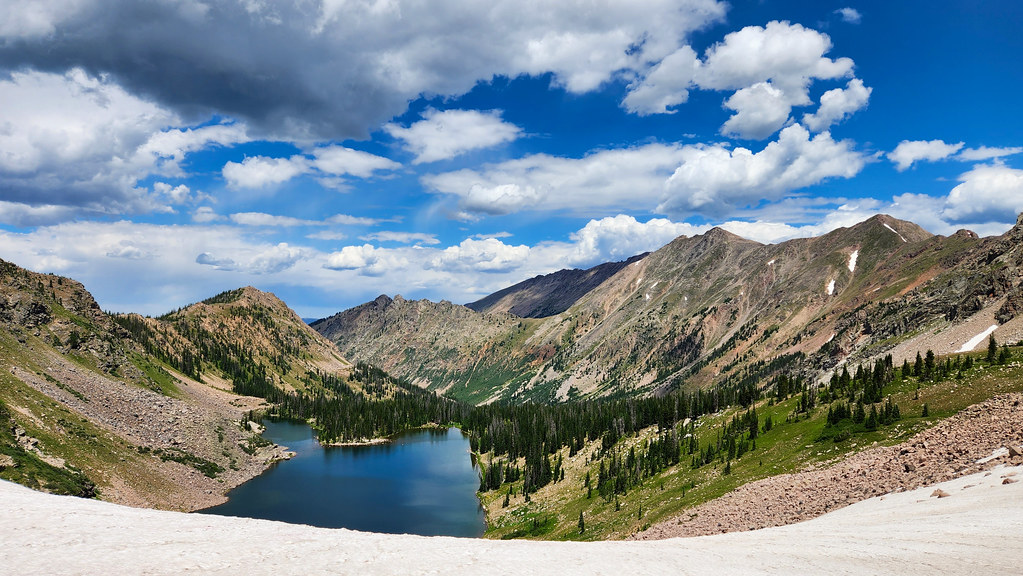
Kelly Lake at Never Summer 2023
-
sur From GIS to Remote Sensing: Remotior Sensus Update: Version 0.3
Publié: 30 December 2023, 1:38pm CET
I'm glad to announce the update of Remotior Sensus to version 0.3.The main new feature is a new module for displaying an interface similar to the Semi-Automatic Classification Plugin (which is based on Remotior Sensus) in Jupyter notebooks.Jupyter notebooks are interactive documents that can be edited in a web browser, which allow for coding in Python and interact with widgets.
The Jupyter interface is still in development and only a few tools are available. For the moment, the available tools are:- search and download of remote sensing images;
- creation and management of Band Sets;
- the dock for creating a training input and saving ROIs created interactively through polygons or region growing;
- the import of vectors in training input;
- the plot of spectral signatures;
- the classification of the Band Sets;
- a file browser for selecting files or directories.
import remotior_sensus rs = remotior_sensus.Session(n_processes=2, available_ram=1000) rs.jupyter().download_interface()

Of course this is a proof of concept, considering that this interface doesn't have all the functions of the Semi-Automatic Classification Plugin, and there are a few differences in the look and feel because of the characteristics of Jupyter notebooks.A tutorial describing this new feature will be released soon.
For any comment or question, join the Facebook group or GitHub discussions about the Semi-Automatic Classification Plugin.
-
sur Real-Time 3D Mapping
Publié: 30 December 2023, 10:24am CET par Keir Clarke
Kaiwen Song and Juyong Zhang of the University of Science and Technology of China claim to be "the first to achieve real-time rendering of large-scale scenes" through the use of neural rendering. They have presented their findings to the world in their paper City-on-Web: Real-time Neural Rendering of Large-scale Scenes on the Web (the website of which includes three live demos). Neural Radiance
-
sur Andrea Antonello: SMASH 1.8 is out!
Publié: 29 December 2023, 4:58pm CET
Dear all, it has been a while, but some stuff has been going on in the SMASH community. And we now have a new release. So let's have a look at what is new.
We farewell the play storeIt is a while we have additional work to do and are loosing usability in SMASH due to the restrictions imposed by the google store. The most impacting has sure been the fact to not be able to access the phone memory freely. And asking google permission to do so didn't work out, since it seems that only file browsers applications and antivirus need to access the memory freely.
With the help of the F-Droid community (special thanks to IzzySoft, Linsu and Licaon-kter) we have been able to make our second appearance on the f-Droid store. And that is now enough to completely migrate there. So we made a last release of SMASH for the store today, but it will be the last one. Please from now on come and get SMASH from the F-Droid store, where the real open source apps live.
Flutter mapWe finally made an upgrade of flutter_map, the map widget library used. This took so long, because the architecture of the library had changed and took some rework inside SMASH.
And now on to the new features:
Geometries inside formsOne nice addition that we have to thank Luca Delucchi and the Digiagriapp for is the possibility to insert inside of complex notes.
URL based forms combosIt is now possible to insert in forms URLs to substitute long item lists in comboboxes (dropdown lists). This allows forms to be smaller in case of large amounts of items and also to be more dynamic.
Gejson layer supportGeojson is now one of the supported formats in read and write mode (together with geopackage and postgis). It can be used in combination with sld styling as for the other vector formats.
More efficient toolbarThe toolbar has been redone with more usability in mind.
Editing is done on a sidebar now:
and in the settings it is possible to remove unused buttons:
leads to:
Other tiny things that might be worth telling- now the default behavior of tile maps is to zoom beyond the max zoom level by scaling (no more white emptiness)
- the current log panel has now 3 sizes for better overlay on map
- the info tool is now a box selection tool and as such way more usable
- online sources have been reworked to have the possibility to add and remove from the default. Also the default maps have been reviewed to ensure they are working
- feature info now also presents the length and area of the geometry as derived value
- we did many many bugfixes
One last thing to add. SMASH 1.8 already presents the possibility to import layers from the new GSS server. This is still in testing mode and ongoing work with the Region Piemonte and not yet disseminated as such. Just to give an idea, it will be possible to generate database tables on the server based on form definitions and download the tables as layers from the GSS and sync them two-ways. Also it will allow for point, line and polygon geometries. All in all it will be an alternative way to take notes, still using the form system and having a way to synchronize data to teh central server instance. But well, this will probably be the next story to tell, once testing is done.
Enjoy!!
-
sur GeoTimeGuessr
Publié: 29 December 2023, 10:53am CET par Keir Clarke
Today we have a huge treat for fans of the popular GeoGuessr game. GeoGuessr is a geography game that takes you on a virtual trip around the world, blindfolded! It uses Google Street View to drop you in a random location somewhere on the planet, and your task is to figure out where you are based on the visual clues that you see around you.TimeGuessr is a very similar game to GeoGuessr - except
-
sur SIG Libre Uruguay: Y se va el último…
Publié: 28 December 2023, 2:36pm CET
-
sur SIG Libre Uruguay: ¡Colombia bien representada!
Publié: 28 December 2023, 2:35pm CET
-
sur gvSIG Batoví: Repaso a los proyectos premiados (final) en el Curso–Concurso Geoalfabetización mediante la utilización de Tecnologías de la Información Geográfica
Publié: 28 December 2023, 2:25pm CET
Para despedirnos por este año elegimos comentar otro proyecto que bien podía haber integrado la lista de finalistas, y que por el altísimo nivel alcanzado, tal vez injustamente, ha quedado fuera del podio:
 Título: 10 años del Geoparque Mundial UNESCO Grutas del Palacio
Título: 10 años del Geoparque Mundial UNESCO Grutas del Palacio
Institución: Liceo Departamental N° 1
Localidad: Trinidad
Docente de referencia: Gerardo Moraes
Tutora: Nadia ChaerQueremos resaltar especialmente este proyecto por varias razones:
- porque realizaron una publicación como parte del proyecto, en la que utilizaron los mapas creados con gvSIG Batoví
- porque los estudiantes extendieron lo que habían aprendido a otros estudiantes, en este caso de Educación Primaria, a través de la realización de varios talleres en la escuela N°31 de Trinidad, departamento de Flores (Uruguay); pueden ver un video aquí
- y porque presentaron su proyecto de una forma muy interesante, amena e interactiva
Este proyecto, realizado por estudiantes de 5° Humanístico (16 y 17 años), ha destacado también por la gran cantidad y calidad de trabajo producido: hasta elaboraron los diplomas a entregar a los participantes de los talleres escolares antes mencionados.
Nuestras felicitaciones a todo el equipo por el estupendo proyecto que han desarrollado (¡en sólo 3 meses!). Y nuestras felicitaciones también a todos los demás equipos porque, como dijimos anteriormente, en esta iniciativa no hay perdedores, sólo ganadores.

-
sur Subway Specs - Part III
Publié: 28 December 2023, 10:20am CET par Keir Clarke
Tokyo's Shinjuku Station is the world's busiest train station. Its is used by over 3.5 million passengers every day. To cope with that amount of traffic the station has to be very big. It has 35 platforms, while another 17 platforms can be accessed through hallways to 5 directly connected stations without traveling outside. With over 35 platforms and over 200 station exits it can be easy to
-
sur gvSIG Batoví: Repaso a los proyectos premiados (IV) en el Curso–Concurso Geoalfabetización mediante la utilización de Tecnologías de la Información Geográfica
Publié: 27 December 2023, 3:29pm CET
Dedicamos este post muy especialmente a los proyectos participantes desde Colombia, ya que es la primera vez que esta iniciativa cuenta con concursantes extranjeros.
 equipo del proyecto 6 Turismo, Desarrollo y Medio Ambiente en Choachí presentando mediante video-conferencia su trabajo frente a los demás equipos concursantes
equipo del proyecto 6 Turismo, Desarrollo y Medio Ambiente en Choachí presentando mediante video-conferencia su trabajo frente a los demás equipos concursantes
Para ello contamos con la colaboración de la Gobernación de Cundinamarca, a través de su Secretaría de Educación, que nos permitió extender la iniciativa del curso-concurso a todas la IED (instituciones educativas departamentales) de ese departamento colombiano.
 defensa final del proyecto 8 Conectando con el Agua: Georreferenciando El «Páramo de Guerrero» en Subachoque y su Importancia Hídrica frente a integrantes del jurado, y acompañados por su tutor
defensa final del proyecto 8 Conectando con el Agua: Georreferenciando El «Páramo de Guerrero» en Subachoque y su Importancia Hídrica frente a integrantes del jurado, y acompañados por su tutor
Todos los equipos han hecho un excelente trabajo, a pesar de las dificultades que el traslado de la experiencia naturalmente implicaba: trabajo 100 % desde la virtualidad, aprendizaje de tecnologías desconocidas hasta el momento, diferencias culturales, dificultades en cuanto a la conectividad, etc. Al respecto cabe destacar la actitud de todos los equipos, siempre con la mejor disposición para capacitarse y para comprender los inconvenientes que pudieran surgir, así como para compartir conocimientos y aprendizajes.
 el equipo del proyecto 11 Mapeando nuestro territorio: Tabio compartiendo su trabajo con los demás participantes
el equipo del proyecto 11 Mapeando nuestro territorio: Tabio compartiendo su trabajo con los demás participantes
Queremos agradecer muy especialmente a quienes colaboraron desde la Secretaría de Educación de la Gobernación de Cundinamarca (Colombia), en particular a Efraín Castro; también a los equipos que se animaron a participar de la iniciativa y que han realizado impresionantes trabajos, además de demostrar una enorme paciencia hacia nosotros, organizadores de la propuesta; por último pero no menos importante, a Luis Vilches por haber logrado que esta participación desde Colombia finalmente se pudiera concretar. De nuestra parte, nos sentimos muy privilegiados de haber compartido un año más este proyecto con todos ustedes, e inmensamente agradecidos pues -una vez más- hemos aprendido mucho todos nosotros de esta hermosa experiencia.
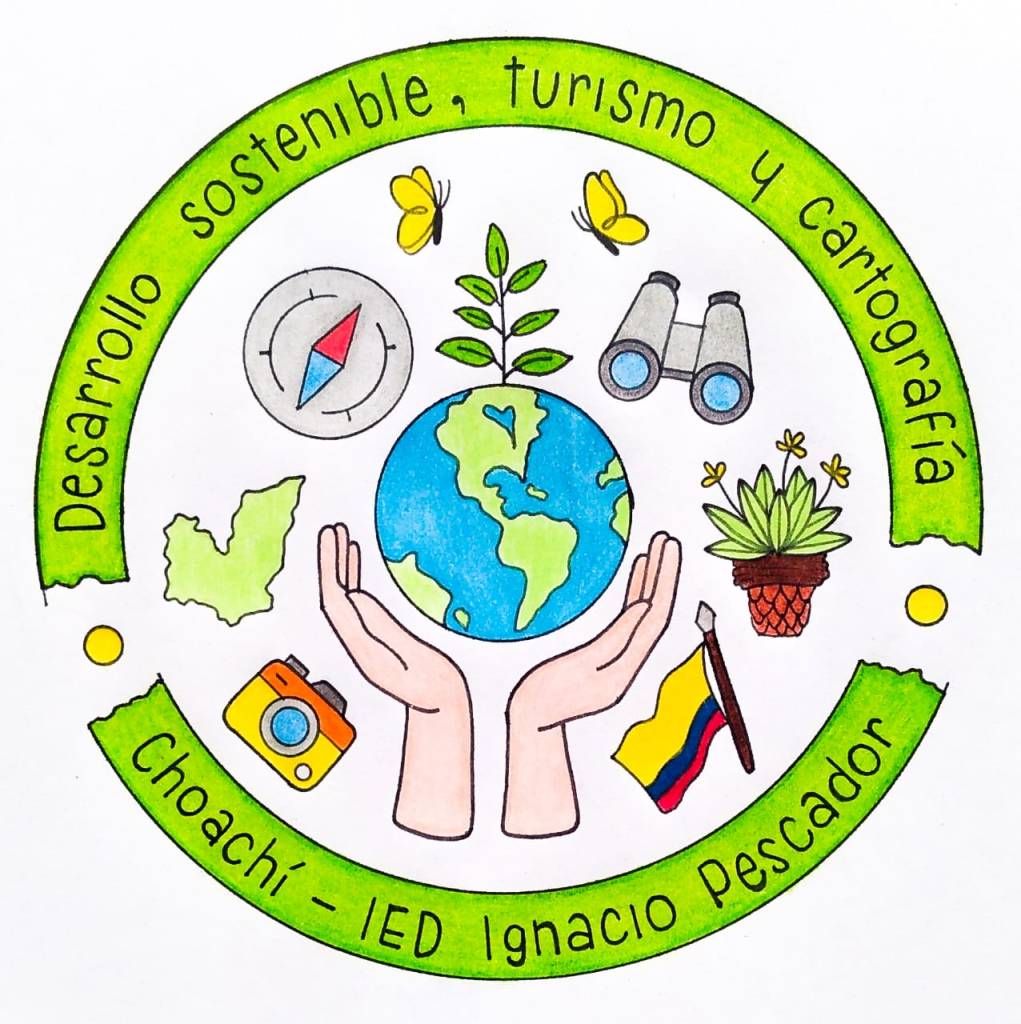 logo proyecto 6
logo proyecto 6
 logo proyecto 8
logo proyecto 8
 logo proyecto 11
logo proyecto 11
Por decisión del jurado resultó ganador el proyecto 6. El mismo fue desarrollado por estudiantes de décimo y undécimo grado de la IED Ignacio Pescador de la localidad de Choachí, siendo su docente de referencia la profesora Astrid Corredor. Asistió como tutor Neftalí Sillero, de la Faculdade de Ciências da Universidade do Porto (Portugal)
Pueden acceder a los demás proyectos en los siguientes enlaces:
proyecto 8: Conectando con el Agua: Georreferenciando El «Páramo de Guerrero» en Subachoque y su Importancia Hídrica, de estudiantes de séptimo, octavo y décimo de la IED La Pradera de la localidad de Subachoque. Docente de referencia: Sandra Milena Diaz Vargas; tutor: Antoni Pérez Navarro, profesor de los Estudios de Informática, Multimedia y Telecomunicación, Universitat Oberta de Catalunya (España);
proyecto 11: Recurso hídrico del municipio de Tabio: cuidado y preservación de la subcuenca del Río Chicú, de estudiantes de noveno y décimo de la IED Instituto Tecnico Comercial José de San Martín de la localidad de Tabio. Docente de referencia: John Castrillón; Tutora: Nadia Chaer, de la Comunidad gvSIG Uruguay (Uruguay);
-
sur QGIS España: Participación en la GeoCamp 2023
Publié: 27 December 2023, 3:00pm CET
GeoCamp ESGeoCamp es un congreso nacional sin ánimo de lucro, que nació en 2013 y que organiza anualmente el colectivo internacional de Geoinquietos. Esta Comunidad está formada por grupos informales que se reúnen para hablar y aprender sobre cualquier tema relacionado con las ciencias de la tierra y que siente una especial afinidad por los servicios de geodatos abiertos, proyectos comunitarios, software libre y aplicaciones SIG (Sistemas de Información Geográfica), especialmente los desarrollados en torno a la comunidad OSGeo (Open Source Geospatial).
Este año Geocamp ha celebrado su 10ª Edición en septiembre en la isla de la Illa de San Simón en la ría de Vigo (Galicia - España) y ha tenido un formato Open Space, donde todos los participantes tienen un papel activo en la realización del evento para aumentar la interacción entre los asistentes para poder, con agilidad e improvisación, satisfacer espontáneamente las inquietudes de los participantes.
Empezó el evento con un maravilloso día soleado y con la isla de San Simón recibiendo a los más de 40 participantes que llegamos en barco desde el puerto de Vigo atravesando la ría, en un viaje muy interesante, amenizado con la información histórica y cultura local de mano de los tripulantes. La pequeña isla con sus históricos edificios donde se podían configurar varios espacios, permitió la realización de numerosas actividades y reuniones, tanto dentro como en el exterior.
A lo largo de la jornada se pudieron realizar seis espacios abiertos donde se habló y debatió sobre los temas que se eligieron por la propia iniciativa, interés y propuestas de los asistentes, y que fueron votados y aceptados por todos y cuyos puntos a destacar se pueden consultar aquí, documento resumen elaborado de forma conjunta por los participantes: OSM, Las Calles de las Mujeres, Geoportales participativos, JS y Web GL, Inteligencia Artificial y mapas, Teledetección, estado de las Comunidades, Estándares OGC y Blockchain.
La charla plenaria que ofreció Carmen Torrecillas de la organización Civio nos mostró cómo hacer mapas y visualizaciones increíbles, gracias al gran trabajo que hacen por la transparencia y la vigilancia de los poderes públicos.
Por supuesto, además, se comentaron todo tipo de inquietudes, experiencias, proyectos y objetivos (cómo la forma de manipular un pixel en la GPU, monitoreo de cetáceos, cooperativas, Joomla, montañismo, conjuros, etc.) a lo largo de todos los momentos en los que se pudo charlar mientras se disfrutaba de los ricos manjares gallegos, con los que se amenizaron los desayunos, comida y cena en un ambiente amable y creativo. Incluso pudimos disfrutar de fantásticas experiencias de la mano de nuestros organizadores fuera de programa como un concierto de rock ( @fpsampayo) o una queimada ( @michogar) cómo no podía ser de otra manera en esta maravillosa ciudad gallega.
La organización local reservó una cena para aquellos que querían seguir compartiendo charlas y espacio. Aunque no es algo estrictamente necesario en un evento participativo como este, siempre ayuda a crear contactos y sinergias. De hecho, muchos de los asistentes, sobre todo si han tenido que venir de otras partes de la península y tienen que hacer noche en la ciudad, lo agradecieron y acudieron para cerrar de una manera festiva el encuentro.
Como conclusiones, señalar que el formato de Open Space funcionó muy bien, contando con un amplio espacio disponible lo que facilitó la organización e incluso la gente se podría haber repartido en más grupos si hubiera sido necesario. De hecho, con grupos algo más reducidos se puede trabajar mejor la participación, aunque fue en éxito con grupos de unas 20 personas. Fue de agradecer haber previsto, mediante un formulario que se hizo llegar a los asistentes, una serie previa de temas a tratar agilizando la organización de los grupos. Realmente es un formato único para crear comunidad, aprender cosas nuevas y llevarse a casa un buen número de conocimientos e ideas. Muy gratificante haber podido conocer gente que no sabía lo que era este tipo de evento y que se encuentran con una experiencia realmente satisfactoria, donde se han podido compartir conocimientos en un ambiente participativo y distendido, que ayuda realmente a contactar a personas que ya tienen experiencia con otras que pueden estar empezando.
Habrá que esperar al año que viene para volver a disfrutar de nuevo de un encuentro tan especial como este.
AgradecimientosFelicitaciones a la organización:
Micho ( @michogar), Paco ( @fpsampayo), Pablo ( @psanxiao), Carmen ( @carmen10maica) y Jorge ( @xurxosanz) por montar el evento, así como a Xeoinquedos y Ghandalf por la cobertura.
También por supuesto a los que han confiado y apoyado económicamente el evento, ya que sin ellos no hubiera sido posible llevarlo a tan buen término (por orden cronológico de participación):
Elastic; QGIS España; B’GEO; PSIG; solucions geografiques; GeoInnova; icarto.es/; Master SIG, UNIGIS Girona; geomatico; conterra; OSGeo; asefor; abtemas; Xunta de Galicia
Enlaces de interés-
Web del evento: [2023.geocamp.es]
-
Ediciones de GeocampES: [https:]]
-
Resumen del evento: [https:]]
-
@geocampes en X/Twitter: [https:]]
-
Grupo de GeoCamp - 2023 en Telegram: [https:]]
-
Geocamp2023 en Instagram:
-
-
sur SIG Libre Uruguay: ¡UTU presente!
Publié: 26 December 2023, 8:34pm CET



